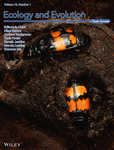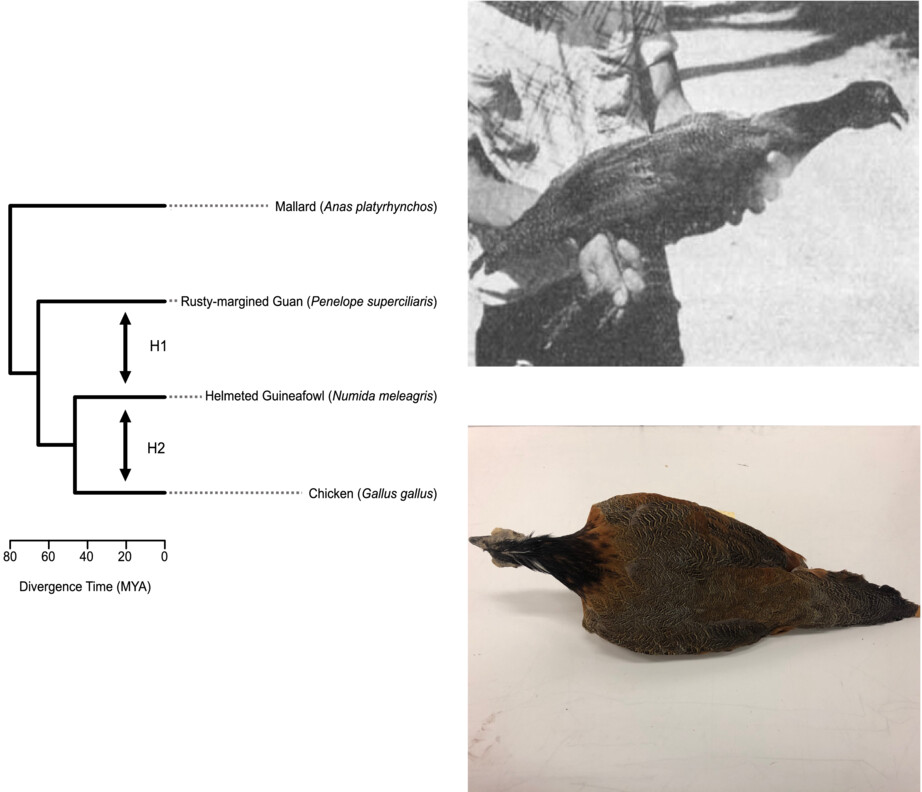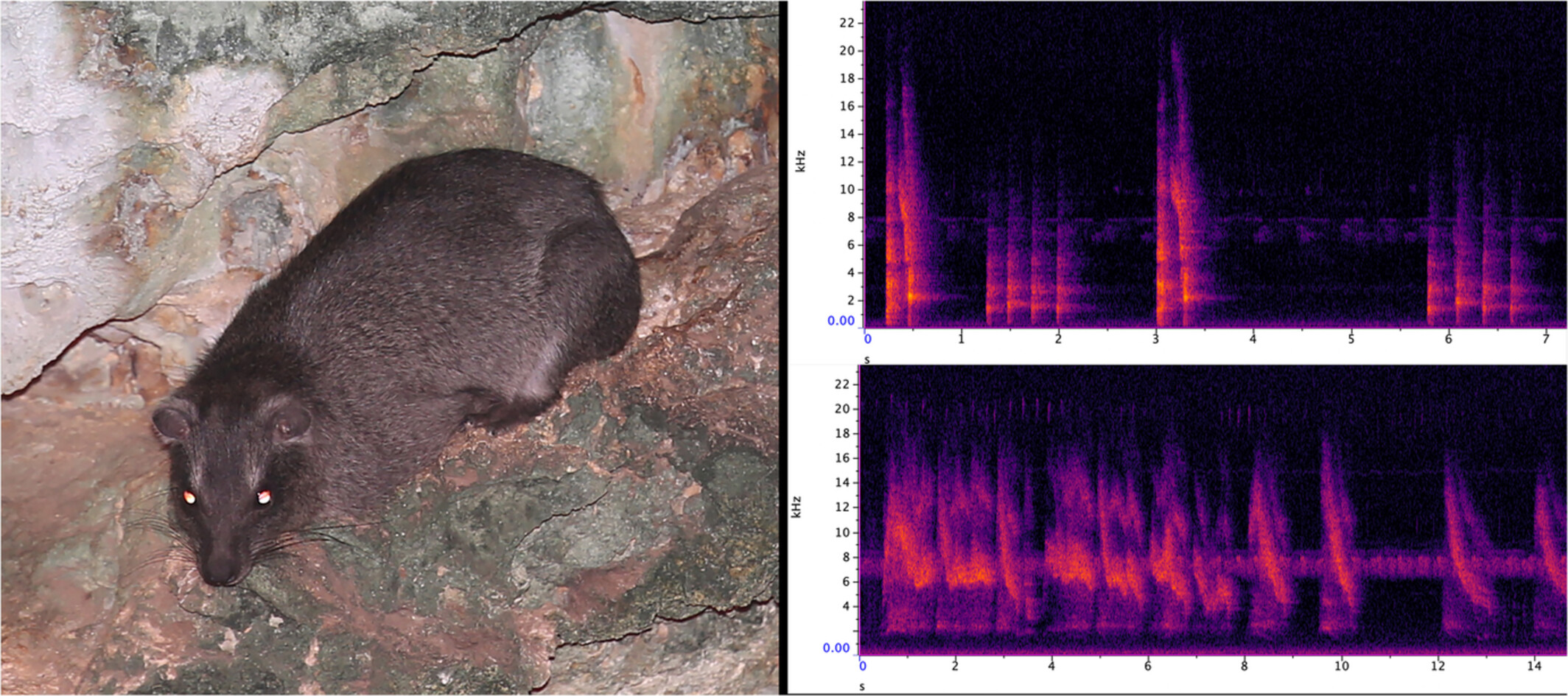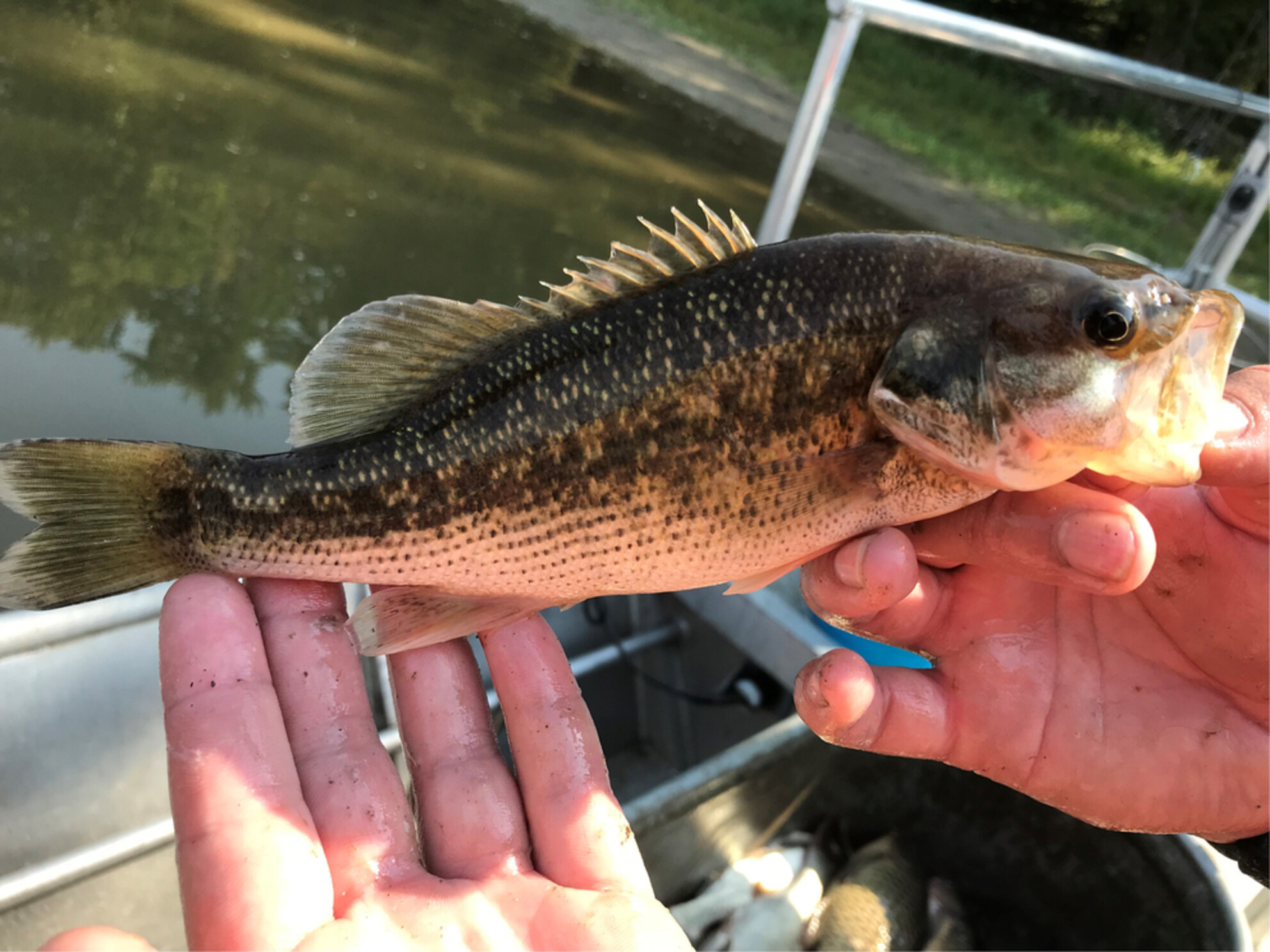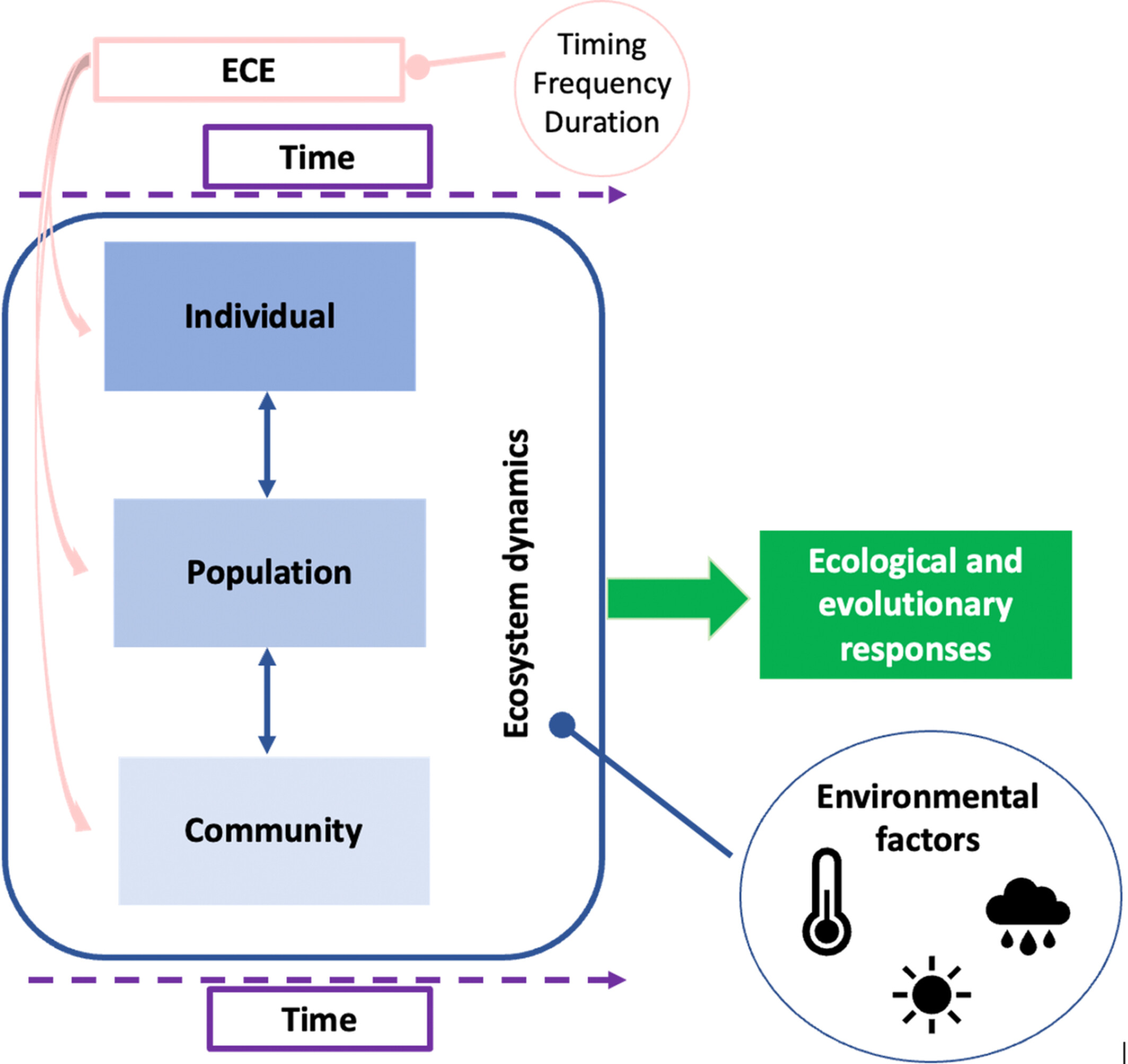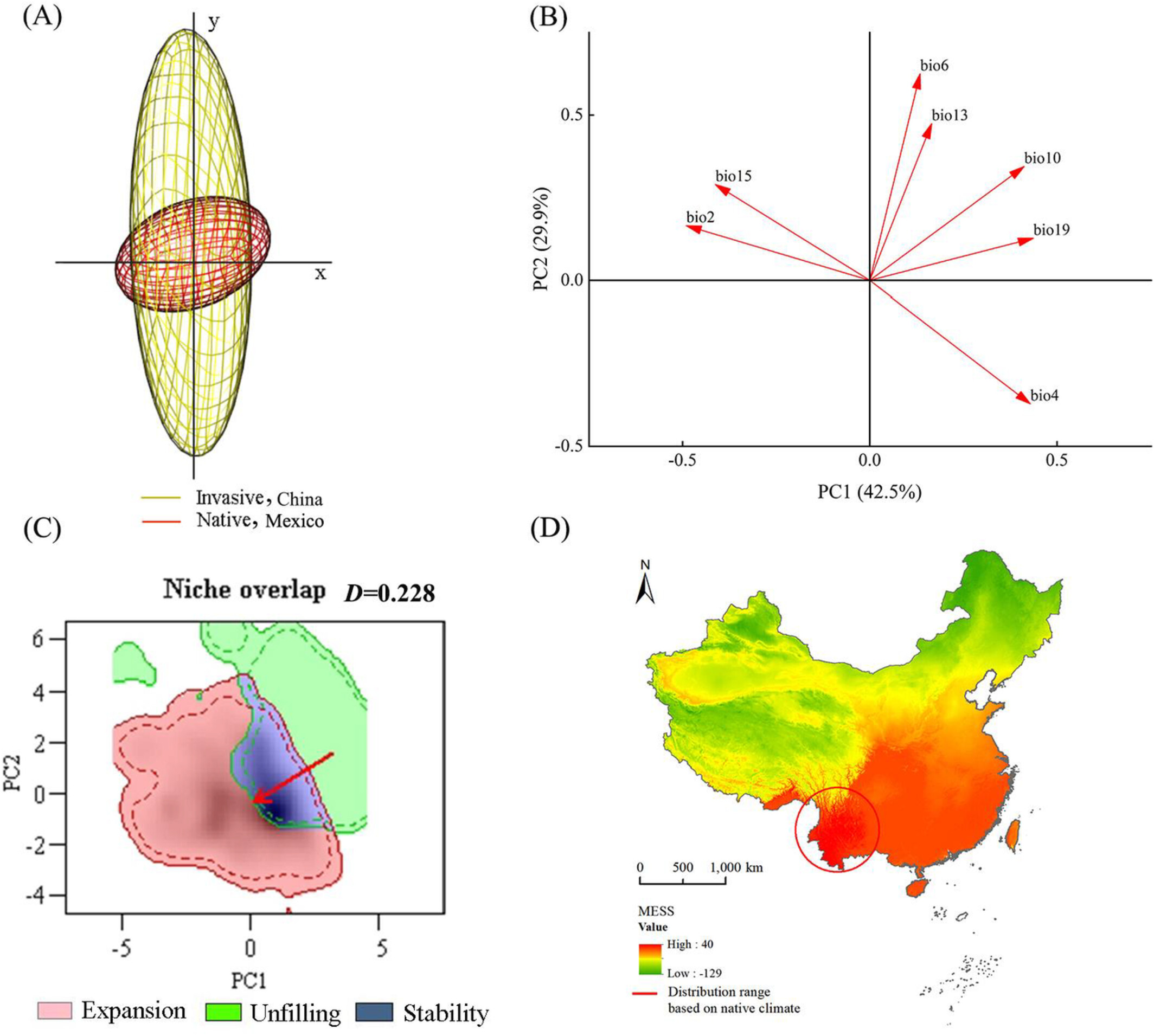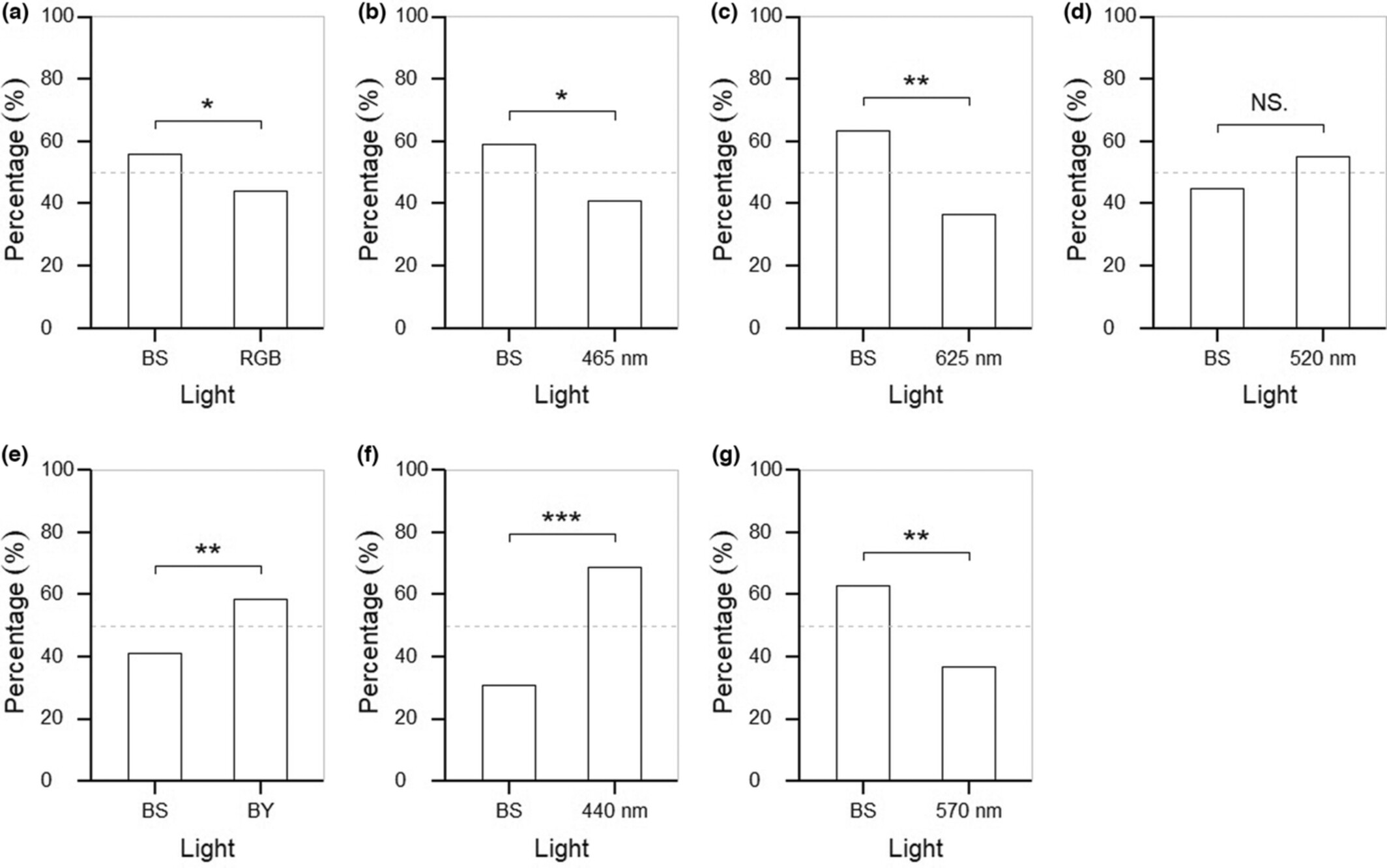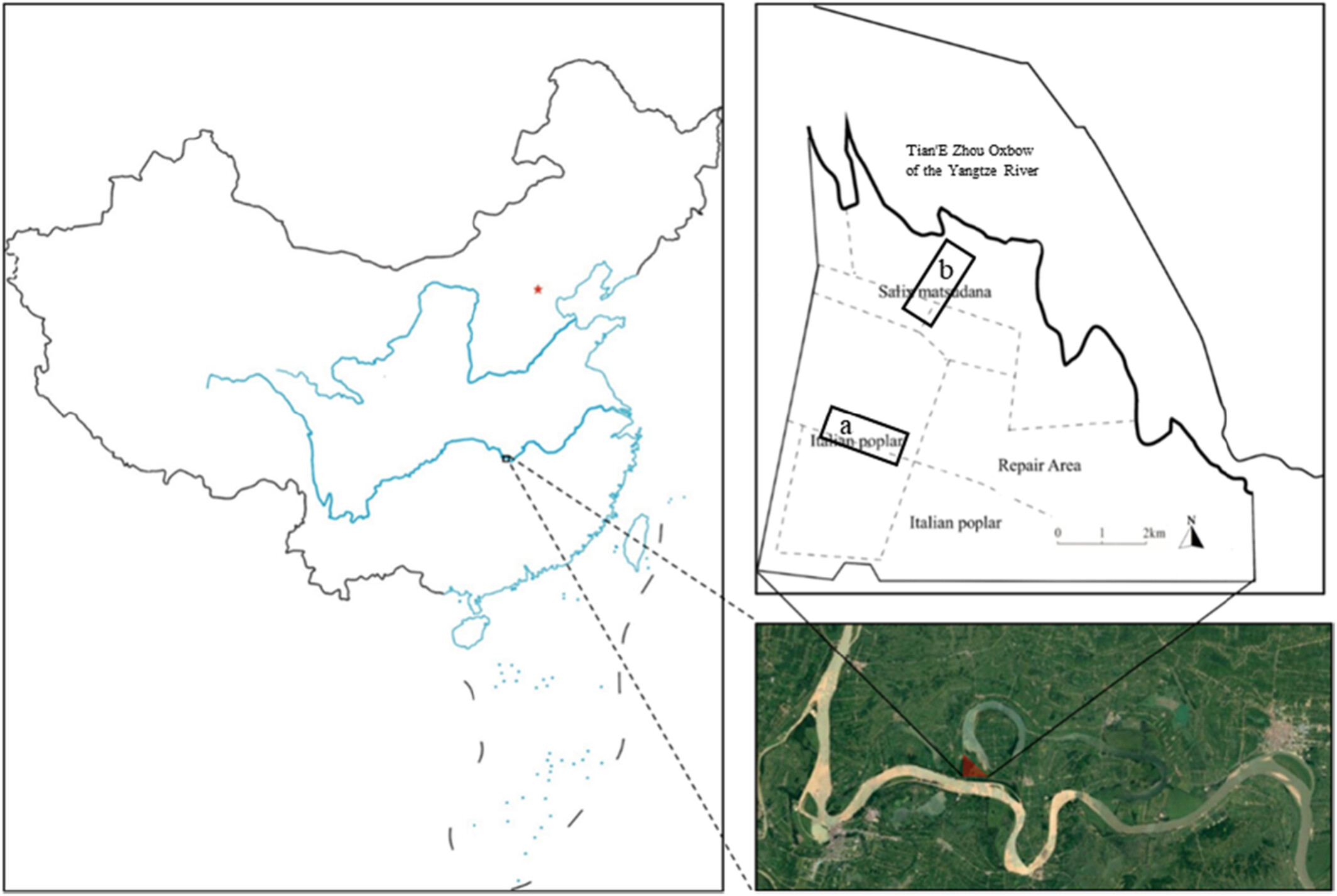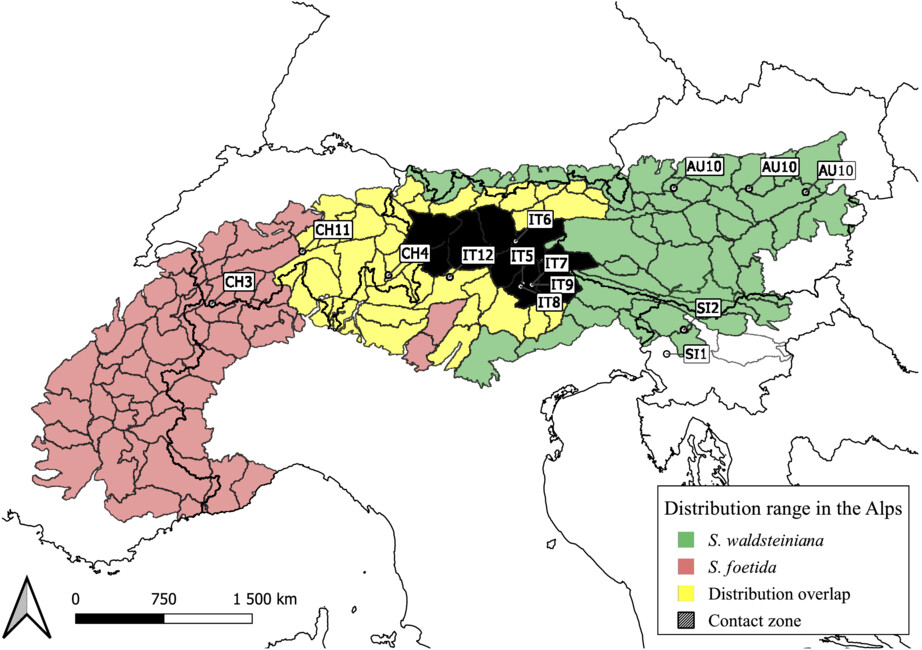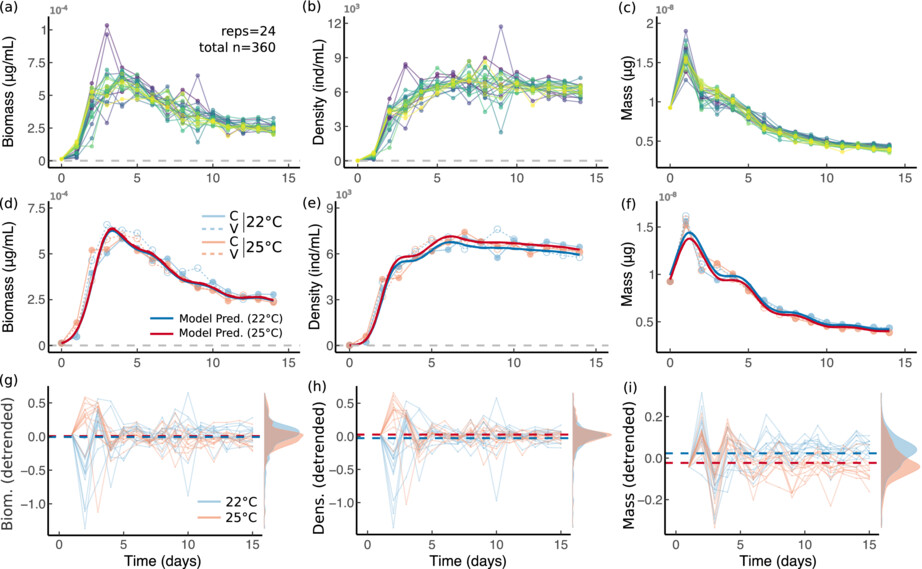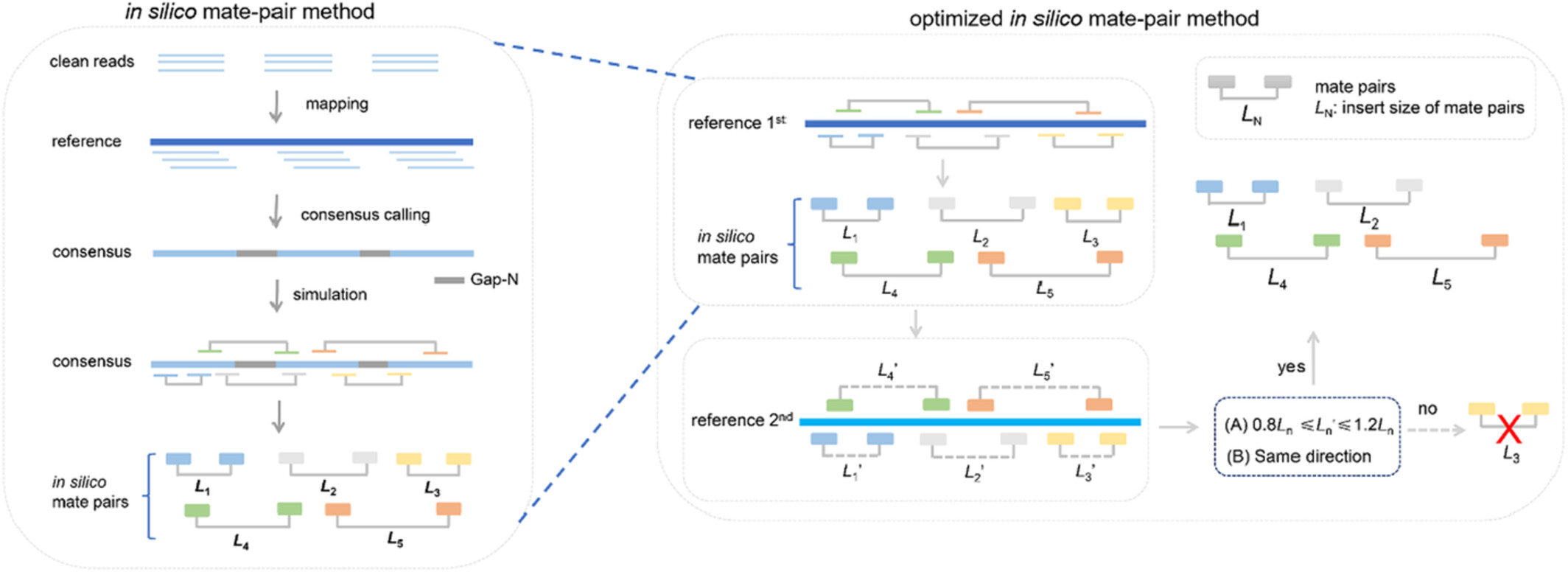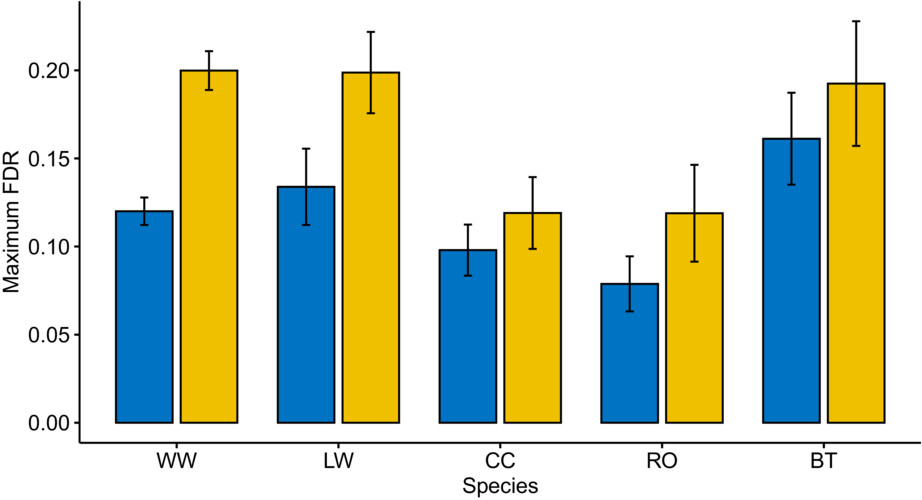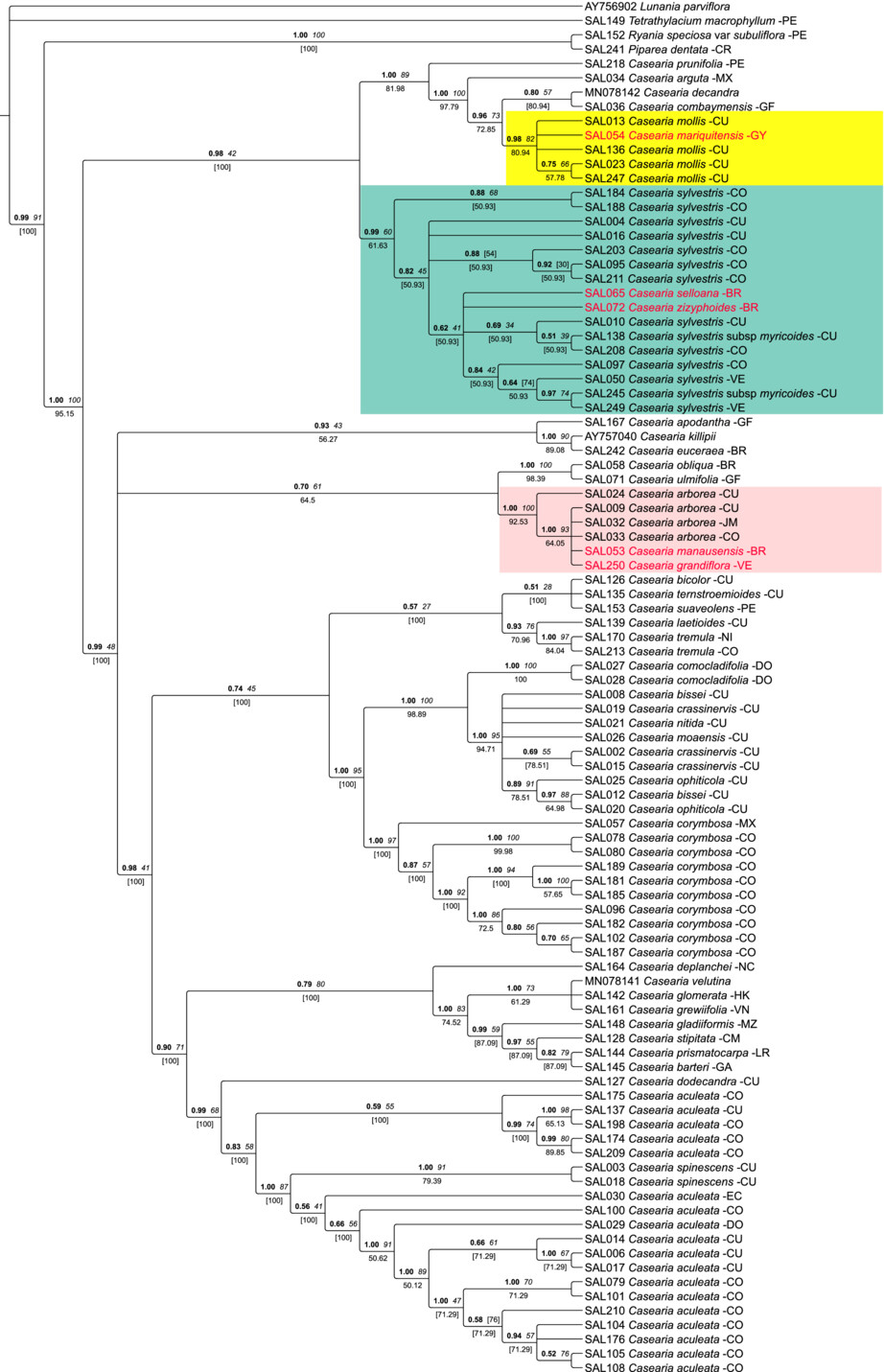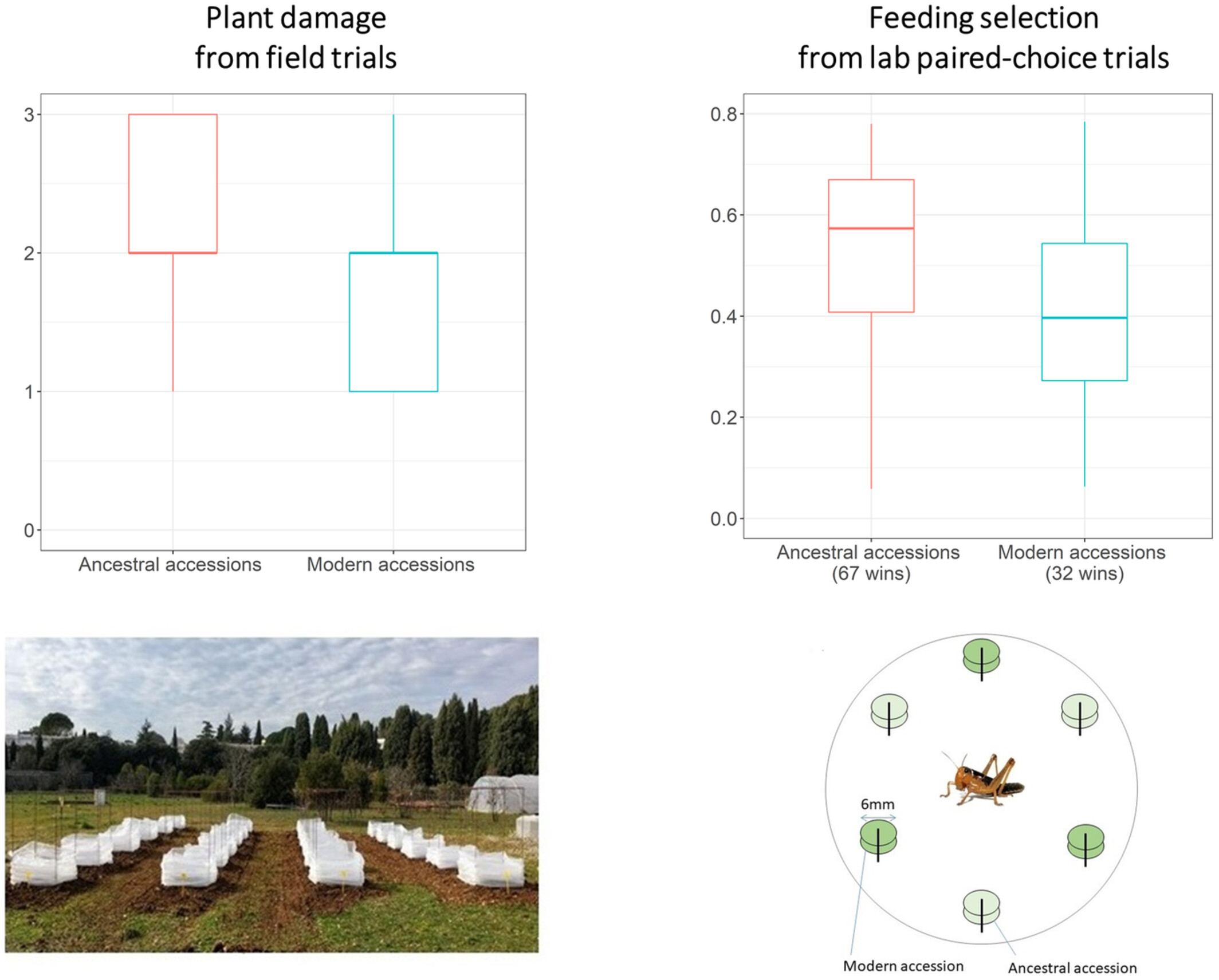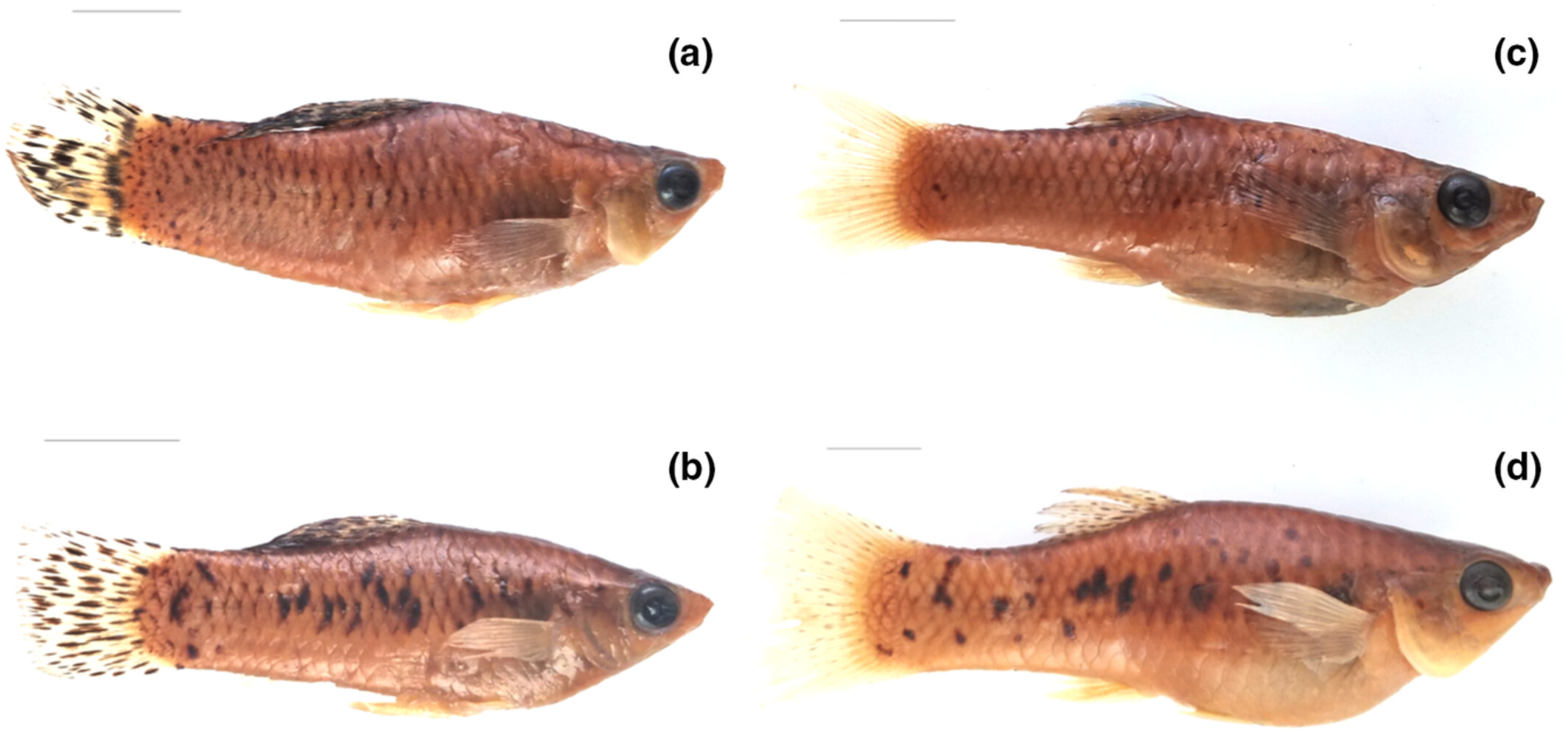Journal list menu
Export Citations
Download PDFs
ISSUE INFORMATION
ACADEMIC PRACTICE IN ECOLOGY AND EVOLUTION
“Where do I even start?” Recommendations for faculty diversifying syllabi in ecology, evolution, and the life sciences
- First Published: 03 January 2023
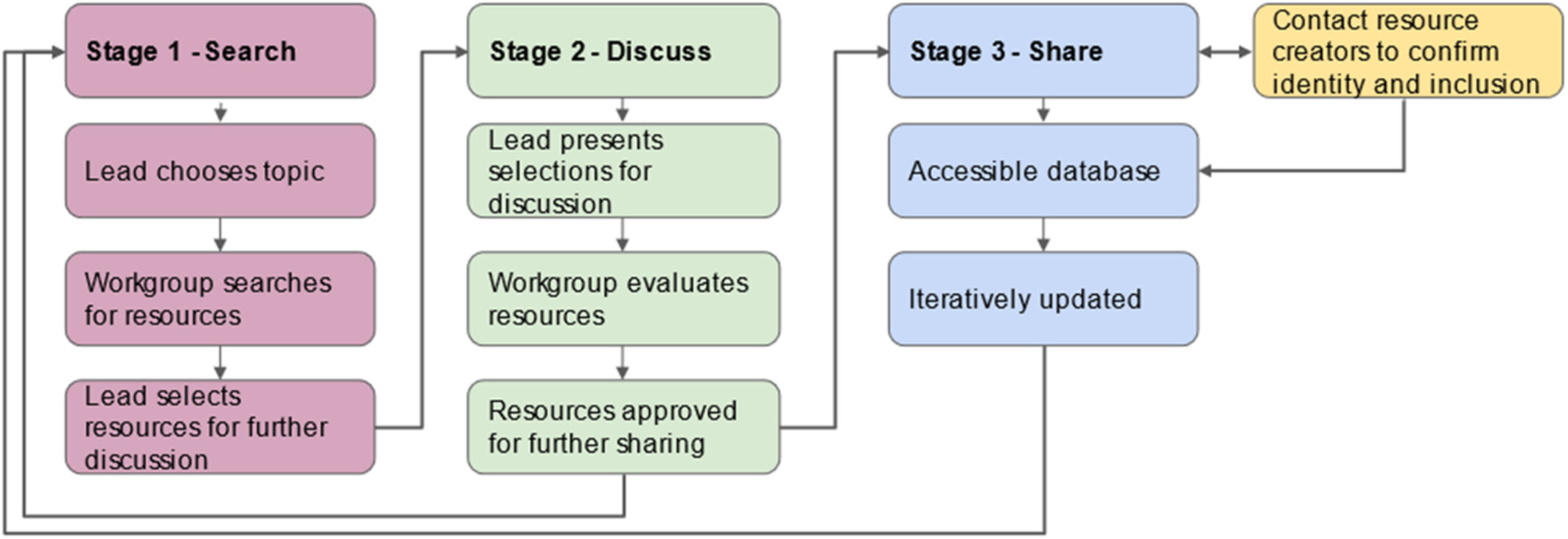
Diversifying curricula is of increasing interest in higher education, including in ecology and evolution and allied fields. Here we provide a framework for meeting standard curriculum goals while enacting anti-racist and anti-colonial updates to syllabi and we share the list of resources our group has developed. Our hope is that our fellow educators will use this paper to catalyze their own efforts to diversify their courses.
Integrating remote international experience and community engagement into course-based animal behavior research
- First Published: 10 January 2023
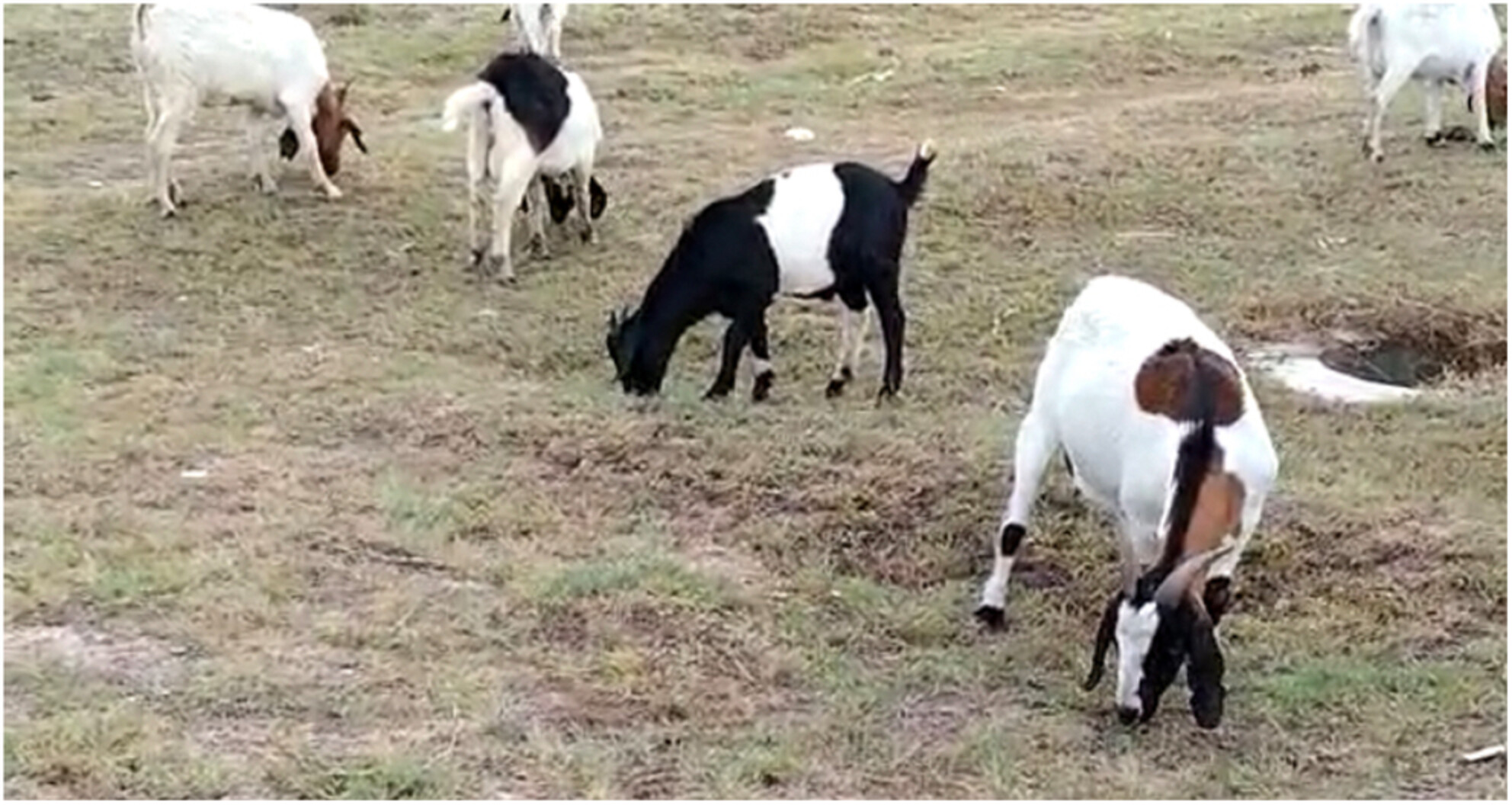
Course-based research, community engagement, and international experiences can enhance undergraduate biology education, but each were made more challenging due to the COVID-19 pandemic. Here, we describe a scalable course-based undergraduate research experience focusing on African goat behavior that integrates research and community engagement in a remote international experience. Educational benefits for students were complemented by the fact that international educational partners facing economic hardship due to the pandemic could receive payment for services.
NATURE NOTES
Genomic investigation refutes record of most diverged avian hybrid
- First Published: 06 January 2023
Species identity and behavior of cave-dwelling tree hyraxes of the Kenyan coast
- First Published: 15 January 2023
Mineral lick use by a community of large herbivores in northern Iran
- First Published: 18 January 2023
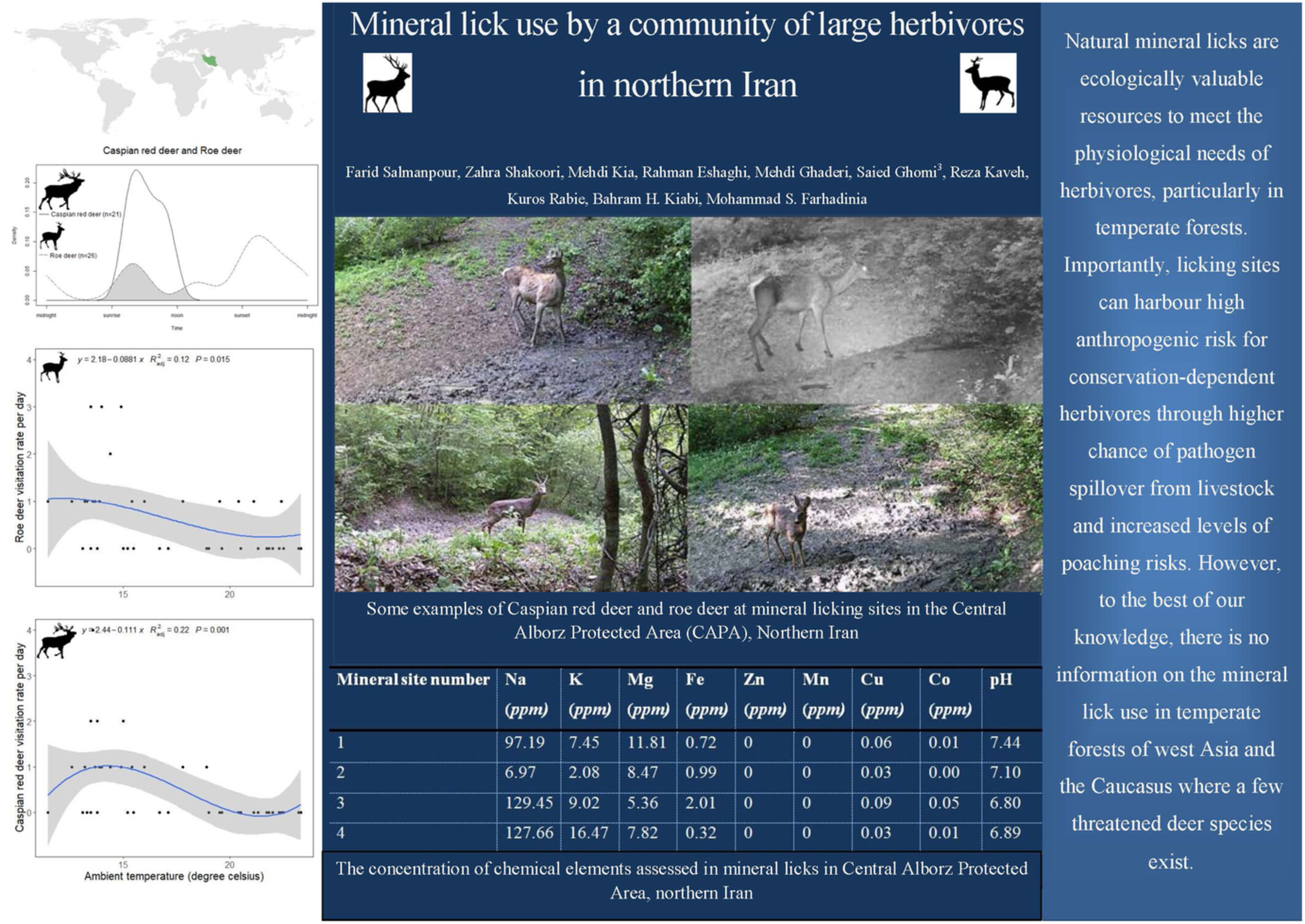
Natural mineral licks are ecologically valuable resources to meet the physiological needs of herbivores, particularly in temperate forests. Importantly, licking sites tend to have higher anthropogenic risk on conservation-dependent herbivores through higher chance of pathogen transmission from livestock and higher levels of poaching risks. However, to the best of our knowledge, there is no information on the mineral lick use in temperate forests of west Asia and the Caucasus where a few threatened deer species exist.
Descriptions of a new genus and a new species, Grylloprimevala jilina (Grylloblattidae) from China
- First Published: 19 January 2023
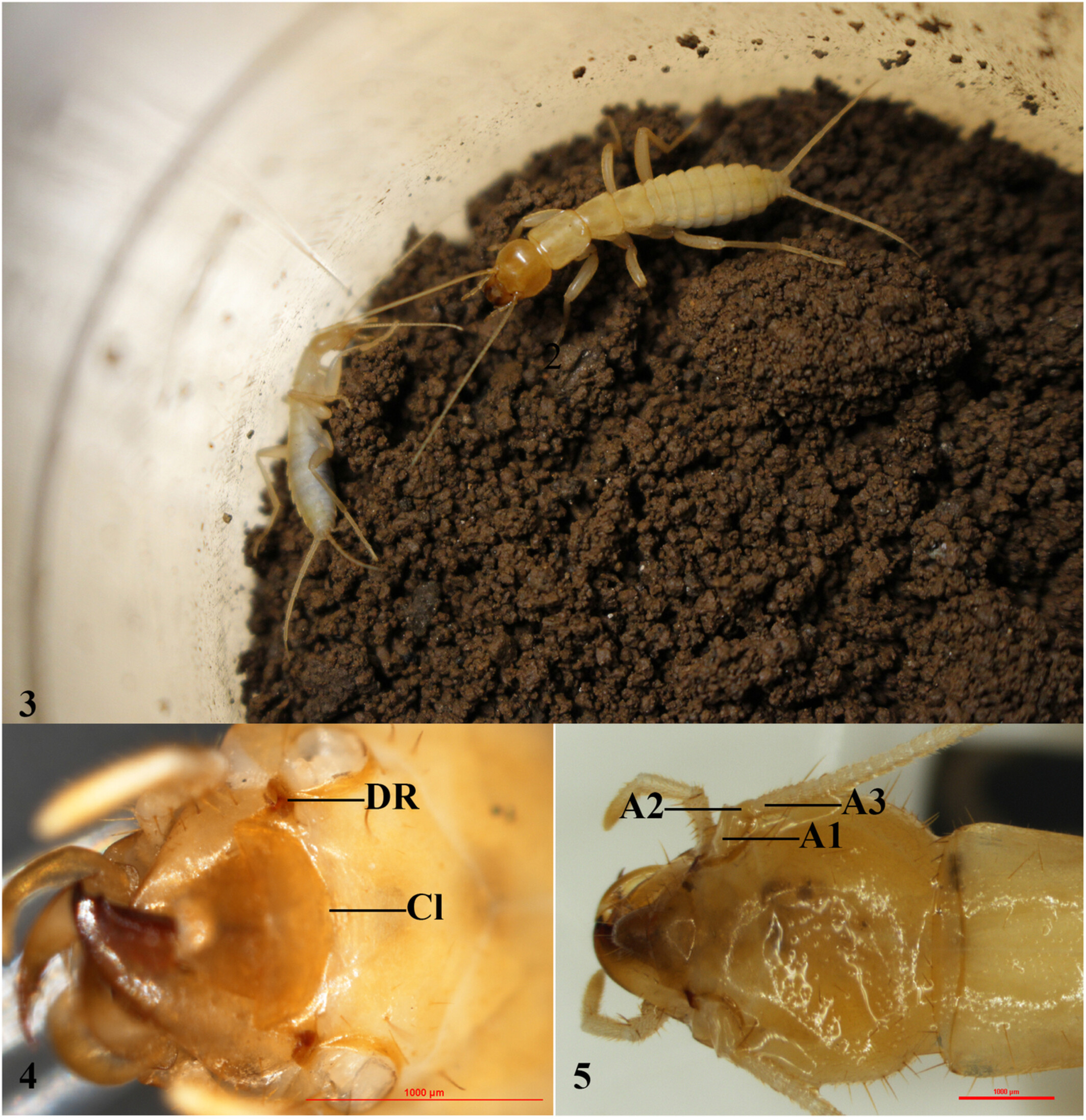
A new species, Grylloprimevala jilina Zhou & Ren sp. nov. assigned to a new genus Grylloprimevala Zhou & Ren gen. nov. (Grylloblattodea), is described and defined using specimens from a natural cave in the primeval forest of Jilin Province, China. We integrated morphological, behavioral, and molecular evidence to describe the new species and genus. Our results provide materials for the determination and conservation of Grylloblattodea in China.
Reading the signs: Camera-trapping provides new insights on scent marking in the large-antlered muntjac (Muntiacus vuquangensis)
- First Published: 16 January 2023
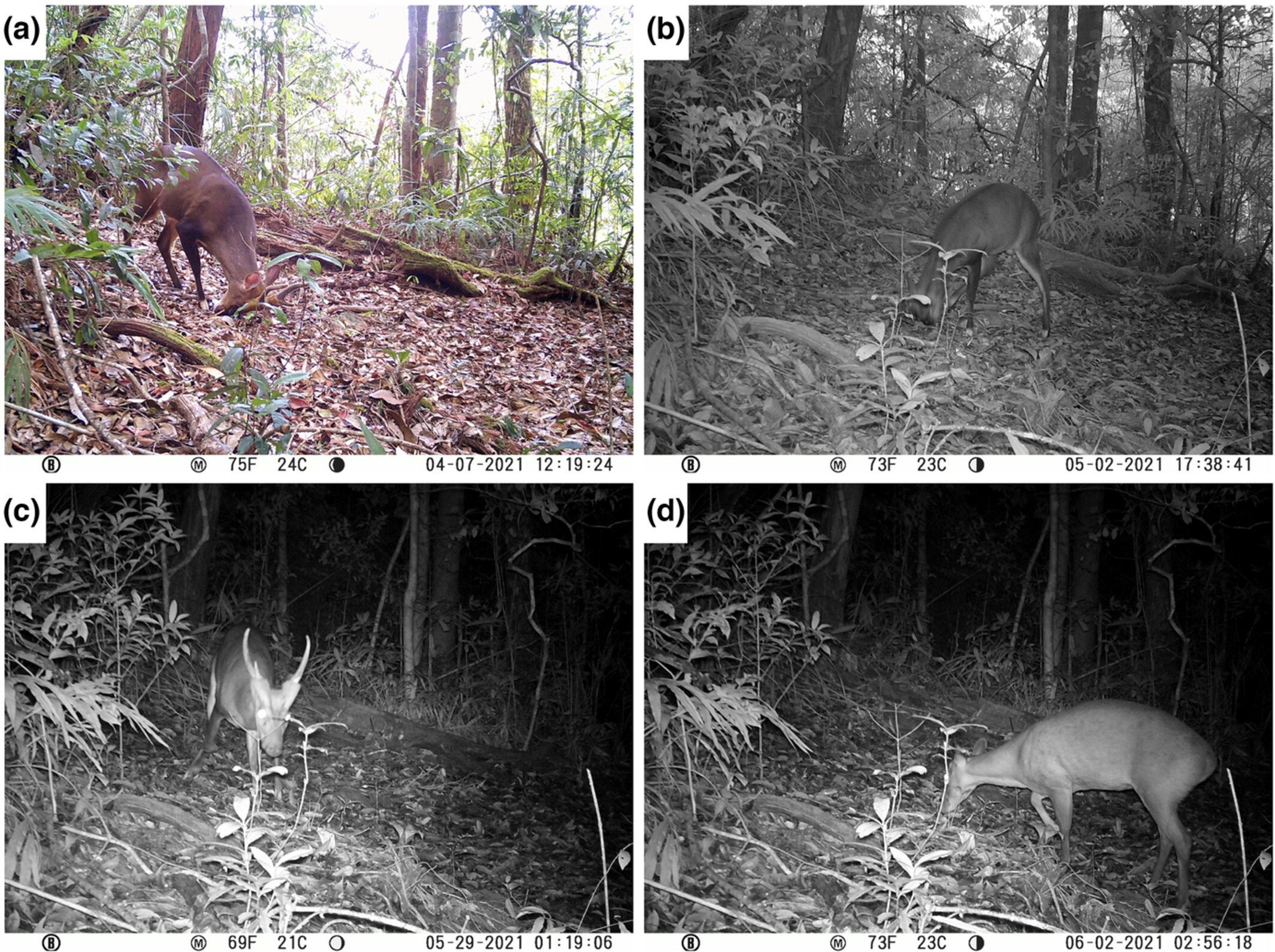
We document the first recorded evidence of scent marking in the large-antlered muntjac (Muntiacus vuquangensis), a little-known and threatened deer endemic to the Annamites ecoregion of Indochina. We discuss the function of this behavior within a wider behavioral and evolutionary ecology framework for mammals living in tropical forests.
Coprophagy in moose: A first observation
- First Published: 19 January 2023
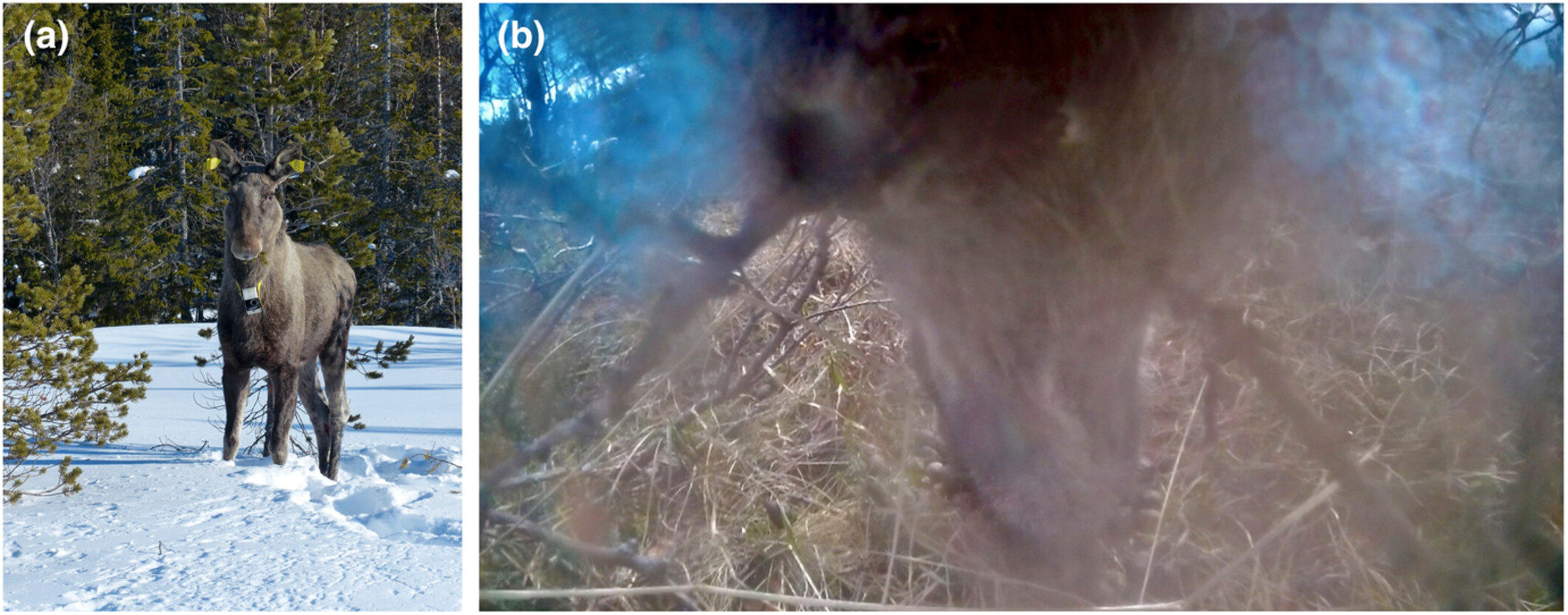
We report the first observation of coprophagy in moose, which was recorded using camera collars on free-ranging moose in Norway, and briefly summarize the state of knowledge of this novel behavior in other deer species. Further research is needed to determine whether coprophagy occurs frequently in moose and whether this behavior is positive (e.g., increased intake of nutrients) or negative (increased infection by parasites or pathogens).
New records of Spotted Bass, Micropterus punctulatus, within the Mississippi River Basin, Illinois
- First Published: 24 January 2023
The first documented interaction between a long-tailed weasel (Mustela frenata) and a plains spotted skunk (Spilogale interrupta) carcass
- First Published: 29 January 2023
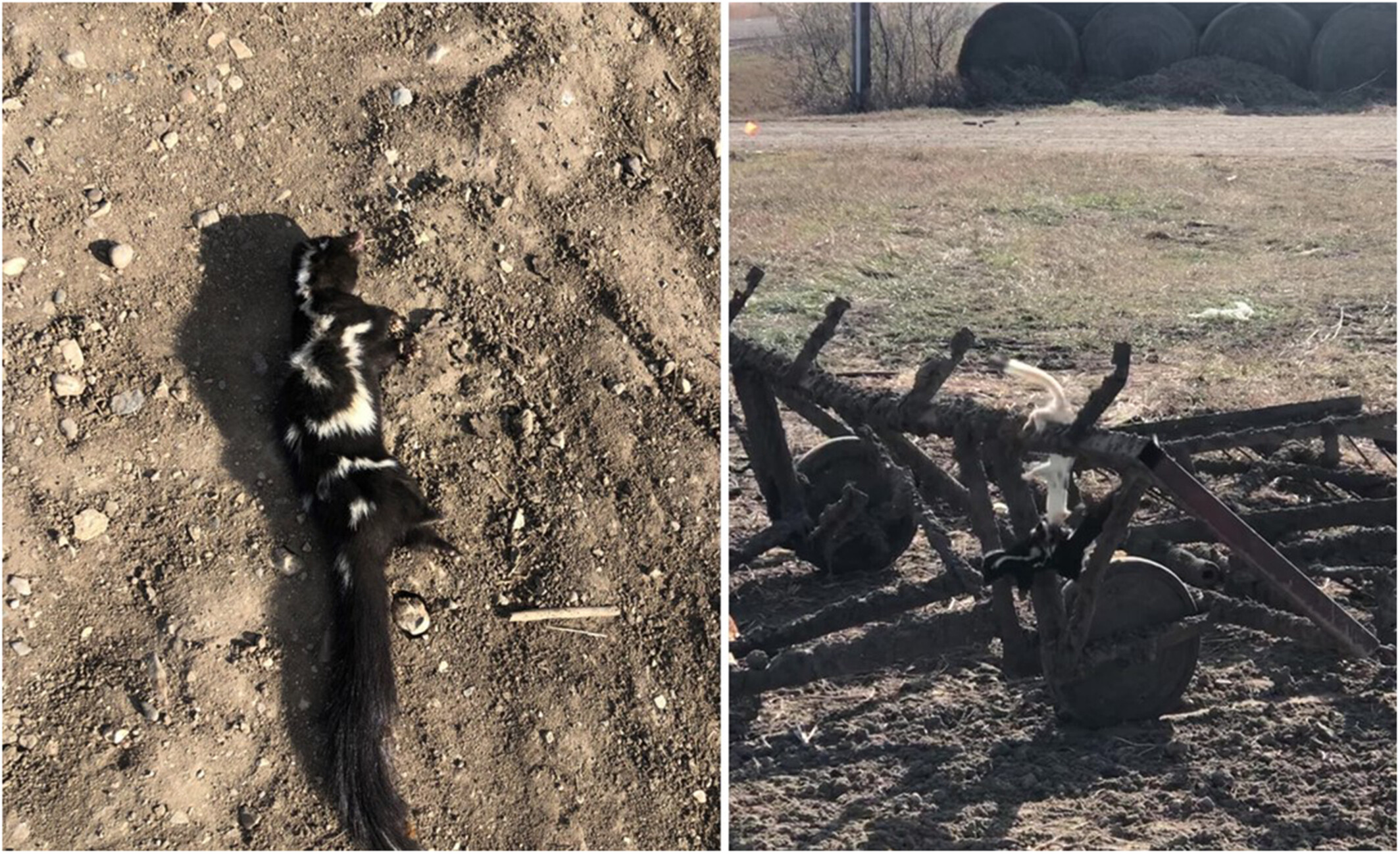
A novel interaction between a long-tailed weasel (Mustela frenata) and a plains spotted skunk (Spilogale interrupta) carcass is detailed. In November 2020, a farmer in Edmunds County in north-central South Dakota sent in a video recording of a long-tailed weasel with a spotted skunk carcass. Location of the event, carcass condition, and recorded behavior of the long-tailed weasel offer probable, but unconfirmed, evidence that the spotted skunk was killed by the long-tailed weasel.
REVIEW ARTICLES
The Drosophila-parasitizing wasp Leptopilina heterotoma: A comprehensive model system in ecology and evolution
- First Published: 23 January 2023
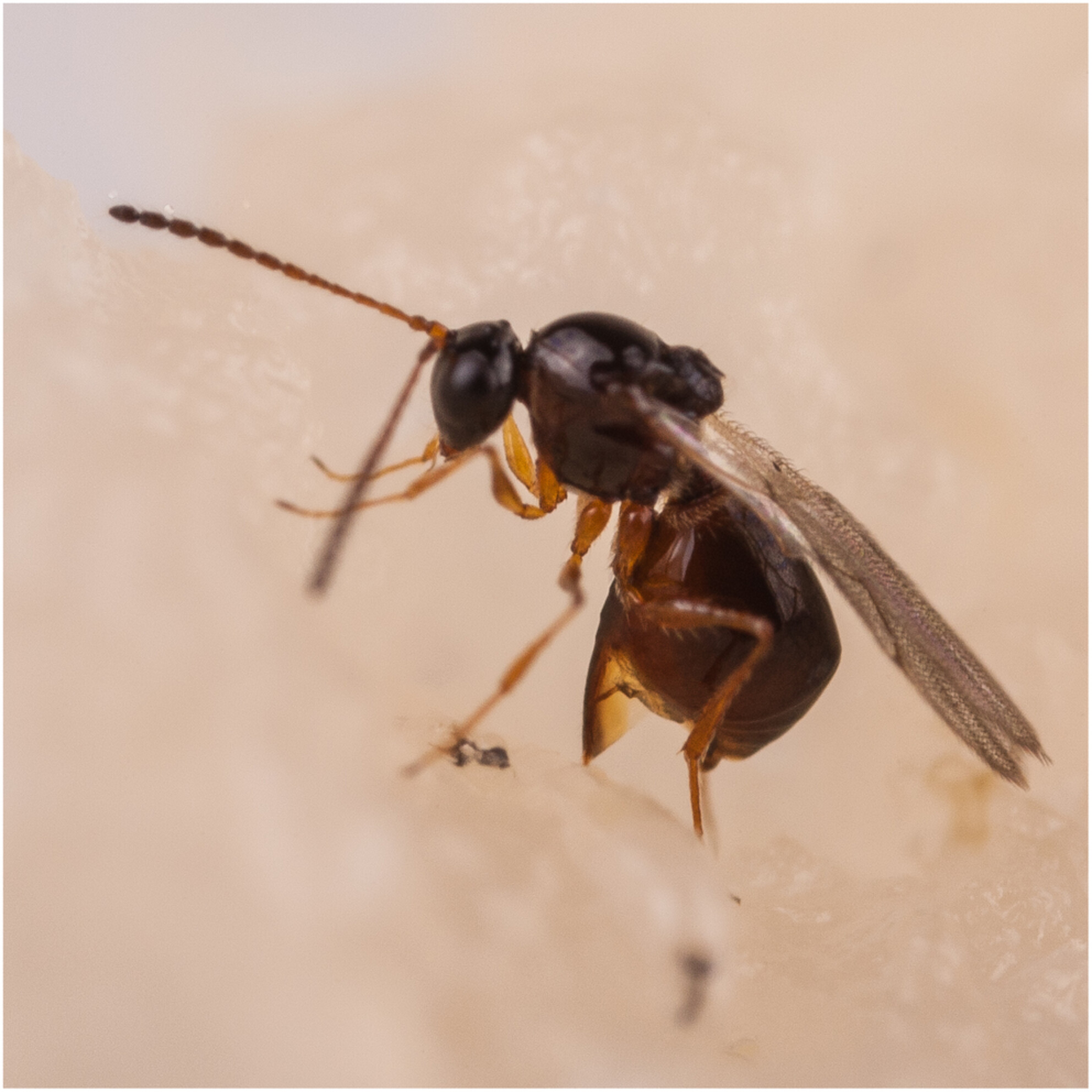
The parasitoid Leptopilina heterotoma has been used as a model system in biology for more than 70 years. This review aims to provide a broad and detailed synthesis of the work performed on this system, including immunity, behavioral ecology, endosymbiotic and trophic interactions, as well as physiology. Overall, the scientific literature on L. heterotoma unites research based on field observations and experiments, as well as laboratory studies, highlighting the versatility of this model system.
The global depth range of marine fishes and their genetic coverage for environmental DNA metabarcoding
- First Published: 18 January 2023
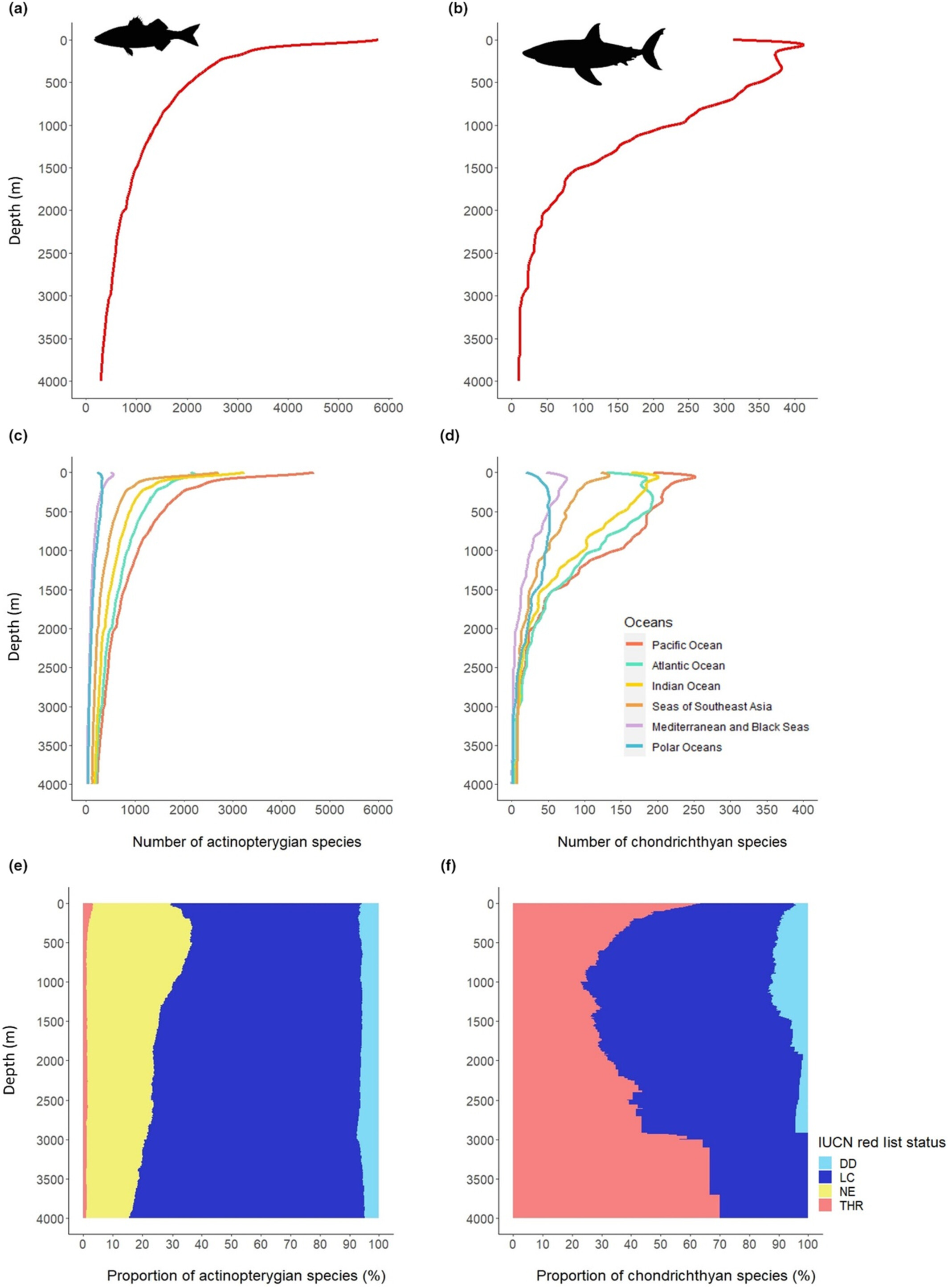
Deep-sea ecosystems are among the least explored on Earth due to their inaccessibility but are increasingly impacted by human activities. Environmental DNA (eDNA) metabarcoding has emerged as a promising method to study deep-sea biodiversity but a major limitation in the application of eDNA metabarcoding is the incompleteness of species sequences available in public genetic databases which reduces the number of detected species. Here we have assessed the bathymetric distribution of 10,826 actinopterygian and 960 chondrichthyan species and the availability of sequences in public genetic databases along the depth gradient for the three principally used metabarcoding markers for fishes: teleo, MiFish-U and MiFish-E.
VIEWPOINT
The ecological consequences of the timing of extreme climate events
- First Published: 24 January 2023
Teach different: The CREATE pedagogy for ecology and evolution
- First Published: 16 January 2023
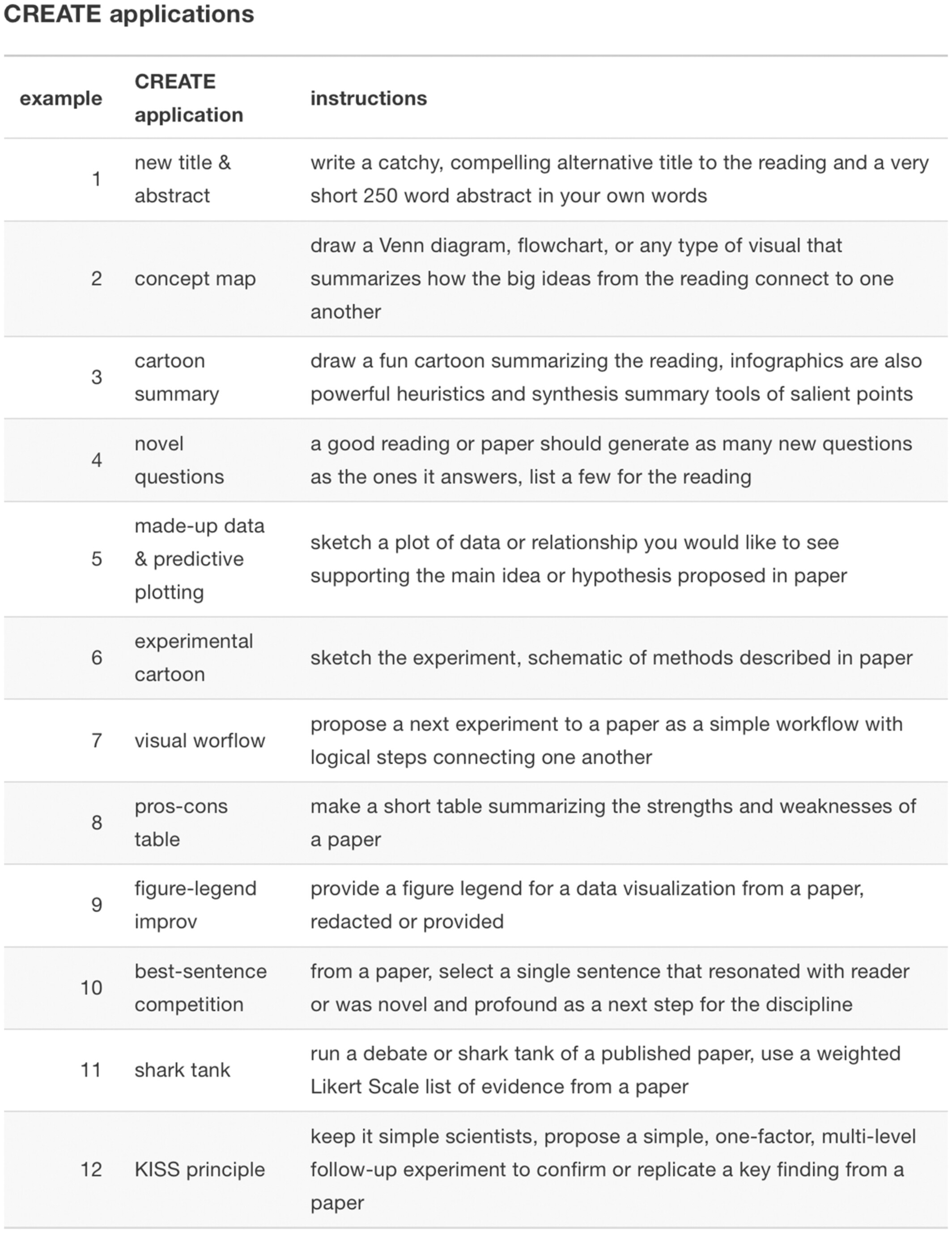
A recent contribution to Ecology and Evolution proposed a novel pedagogical innovation. In reviewing this paper, it inspired innovations in teaching and student-led work in two other ecology and evolution course offering. This viewpoint highlights that work and extends it to other potential applications for students and for instructors in how they teach.
ORIGINAL RESEARCH
An evolutionary explanation of female-biased sexual size dimorphism in North Sea plaice, Pleuronectes platessa L.
- First Published: 30 January 2023
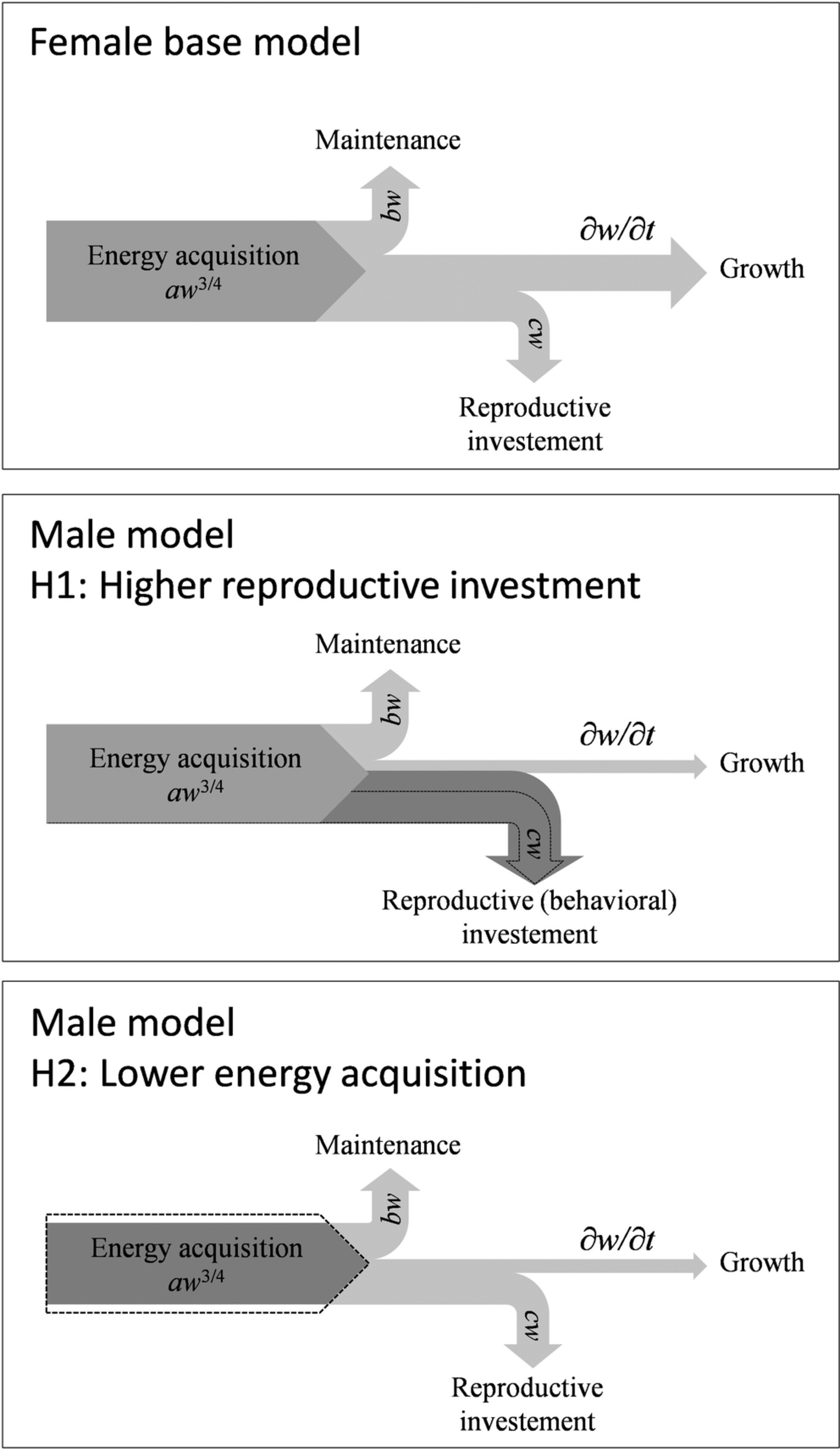
The paper presents a model to evolutionarily explain the sexual size dimorphism with an eco-genetic model adapted to detailed empirical data of North Sea plaice. Behavioral investments and diminishing fitness returns are considered as alternative explanations with its implication in individual energy allocation, and put into context with the ecology of the species.
RESEARCH ARTICLES
The Environmental Data Initiative: Connecting the past to the future through data reuse
- First Published: 06 January 2023
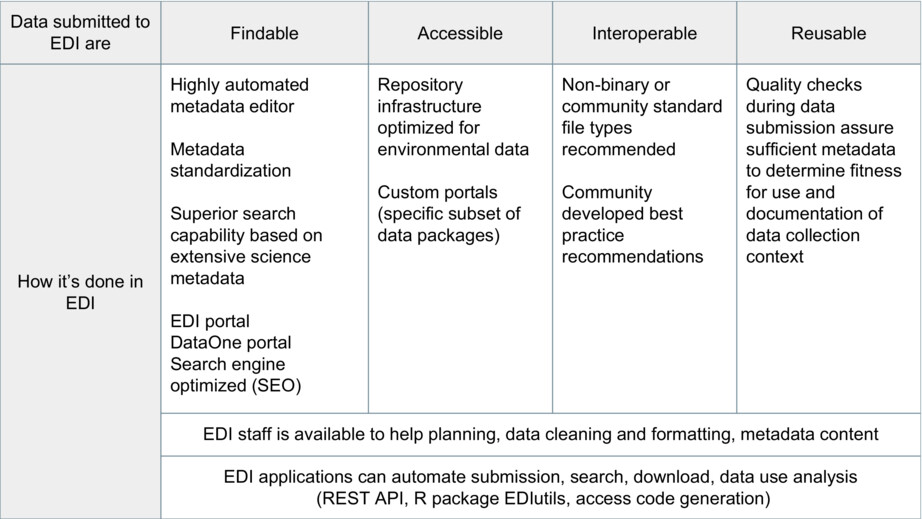
The Environmental Data Initiative (EDI) is a trustworthy, stable data repository, and data management support organization for the environmental scientist providing tools and support that allow the environmental researcher to easily integrate data publishing into the research workflow. We discuss how comprehensive metadata and the repository infrastructure lead to highly findable, accessible, interoperable, and reusable (FAIR) data by evaluating compliance with specific community proposed FAIR criteria and review measures and patterns of data (re)use, assuring that EDI is fulfilling its stated premise.
Crayfish population size under different routes of pathogen transmission
- First Published: 06 January 2023
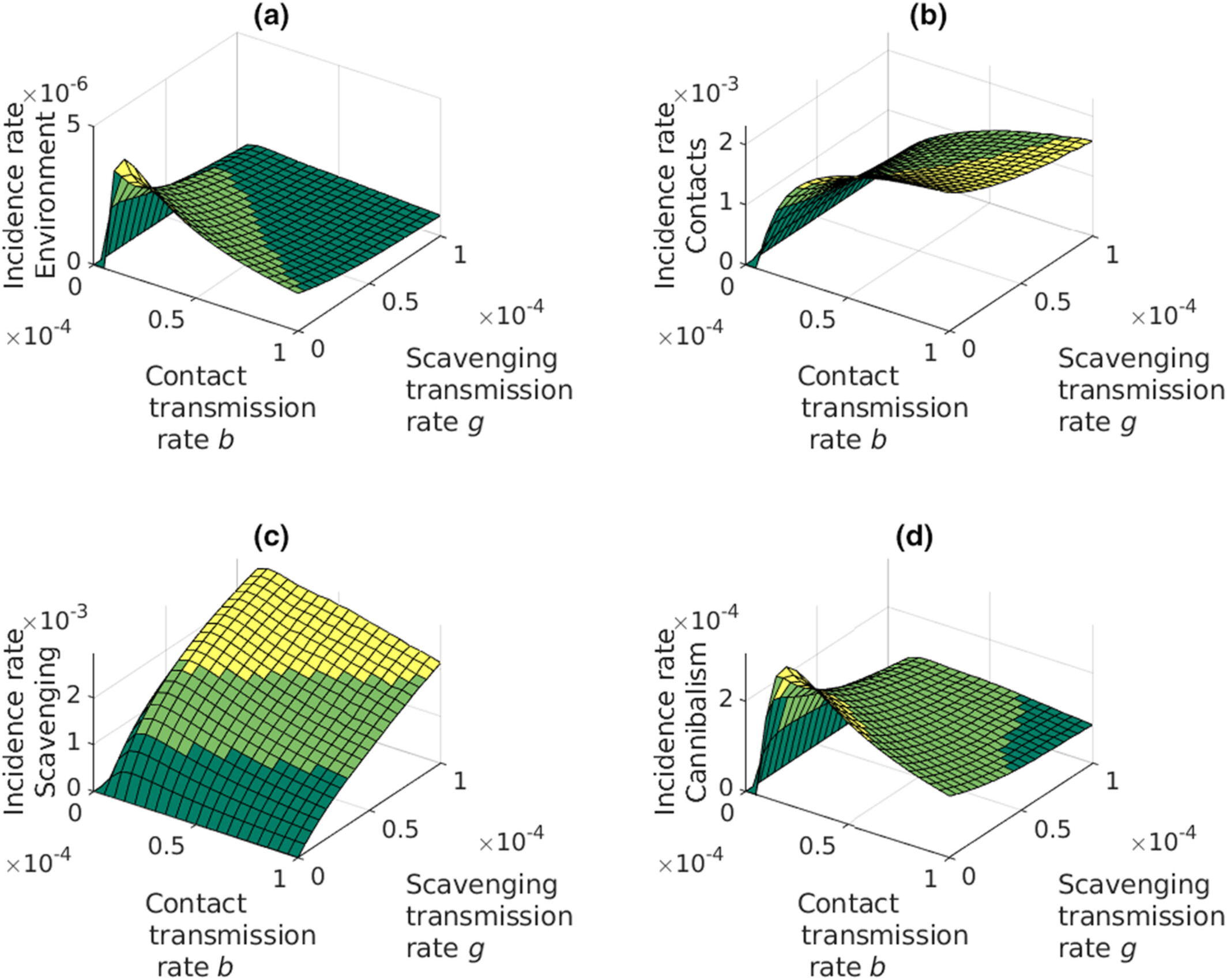
Many European crayfish populations have been decimated by the invasive crayfish plague Aphanomyces astaci, already harbored to Europe, Asia, and Australia. To contribute to the discussions of the means to control the disease, a population dynamical model is presented to build the theory to master the crayfish population dynamics and the disease dynamics.
Pooling robustness in distance sampling: Avoiding bias when there is unmodelled heterogeneity
- First Published: 06 January 2023
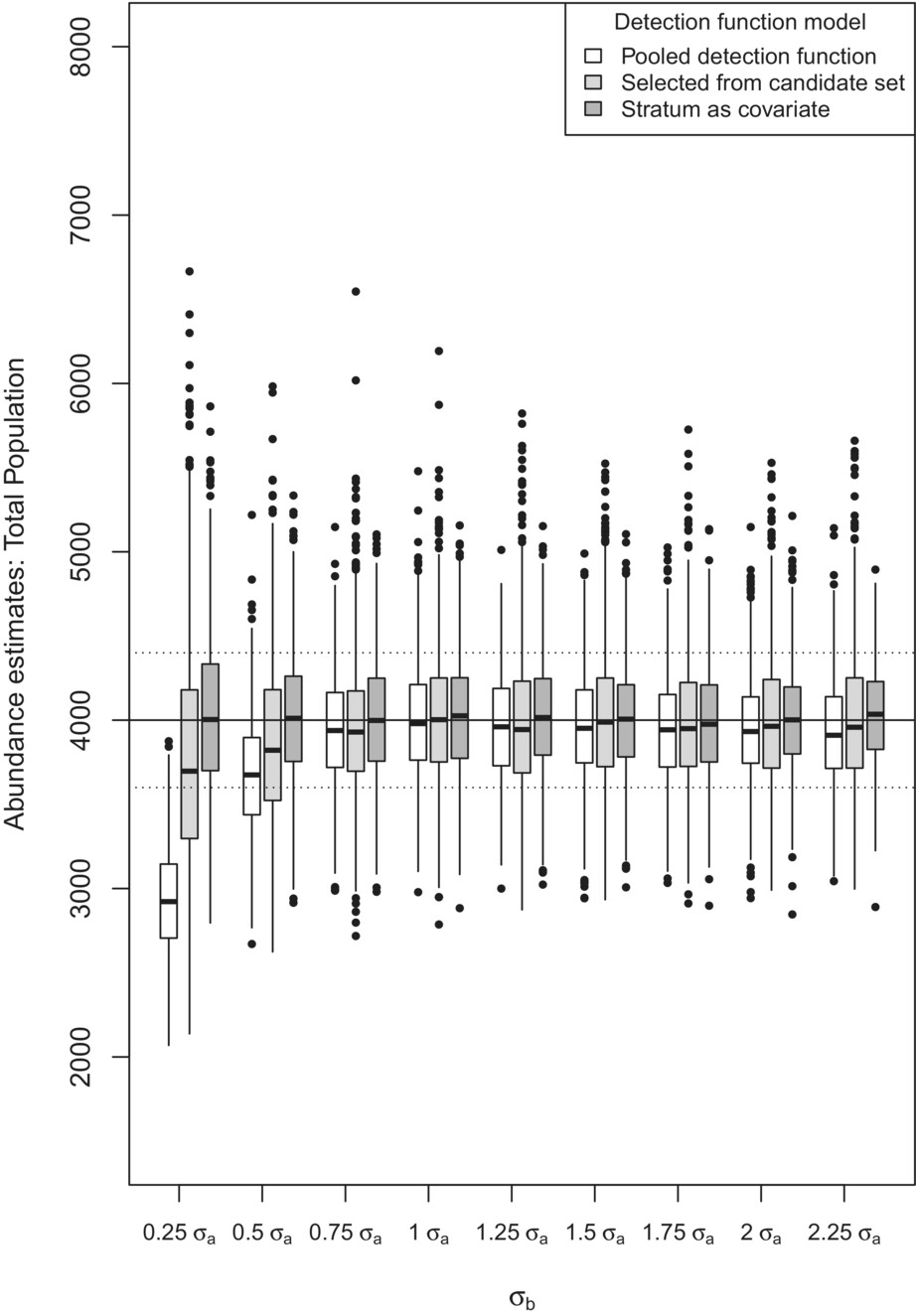
Pooling robustness is a unique property of distance sampling. This article demonstrates this property in a simulated scenario with extreme amounts of heterogeneity in detection probability between subpopulations. The article also demonstrates the bias in abundance estimates when estimating subpopulation-specific abundance using a detection function estimated from data combined across subpopulations.
Differences in the behavior and diet between shoaling and solitary surgeonfish (Acanthurus triostegus)
- First Published: 06 January 2023
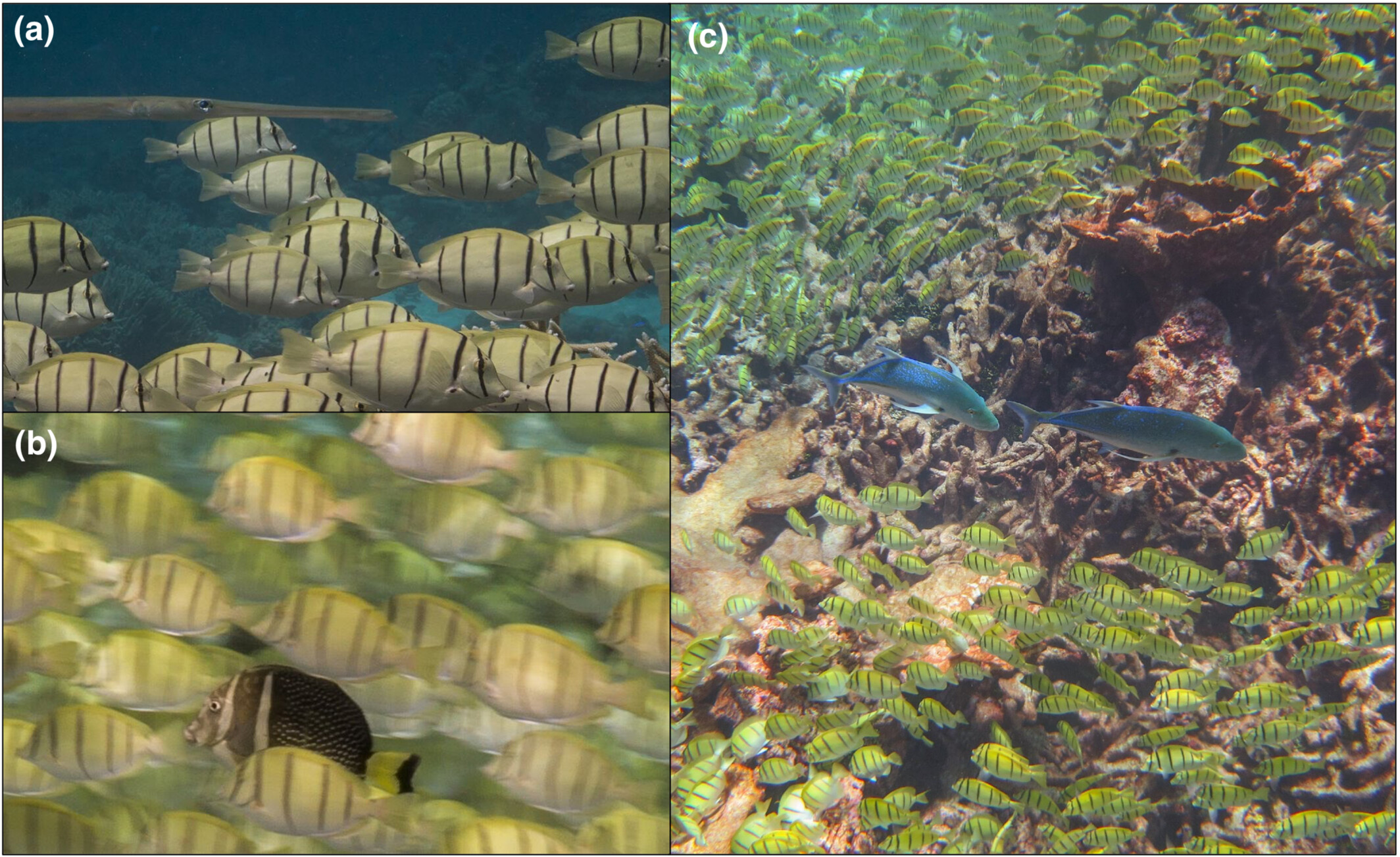
In this study, we characterized movement and foraging-associated behaviors of shoaling and solitary surgeonfish on coral reefs. We found differences in movement, grazing, and interactions with heterospecific fish between shoaling and solitary fish. These observations suggest that the social behavior of individuals may play an important role in mediating their ecological function.
Chloroplast phylogenomics and the taxonomy of Saxifraga section Ciliatae (Saxifragaceae)
- First Published: 06 January 2023

Subdivisions of sect. Ciliatae proposed in various taxonomic systems have not been adequately tested in previous phylogenetic studies, partly due to low taxonomic sampling density, but also to the use of few DNA markers. In this study, based on the 94 chloroplast genomes of sect. Ciliatae, we explored the phylogenetic relationships of this group.
Evidence of the niche expansion of crofton weed following invasion in China
- First Published: 06 January 2023
Plasticity in oviposition and foraging behavior in the invasive pest Drosophila suzukii across natural and agricultural landscapes
- First Published: 06 January 2023
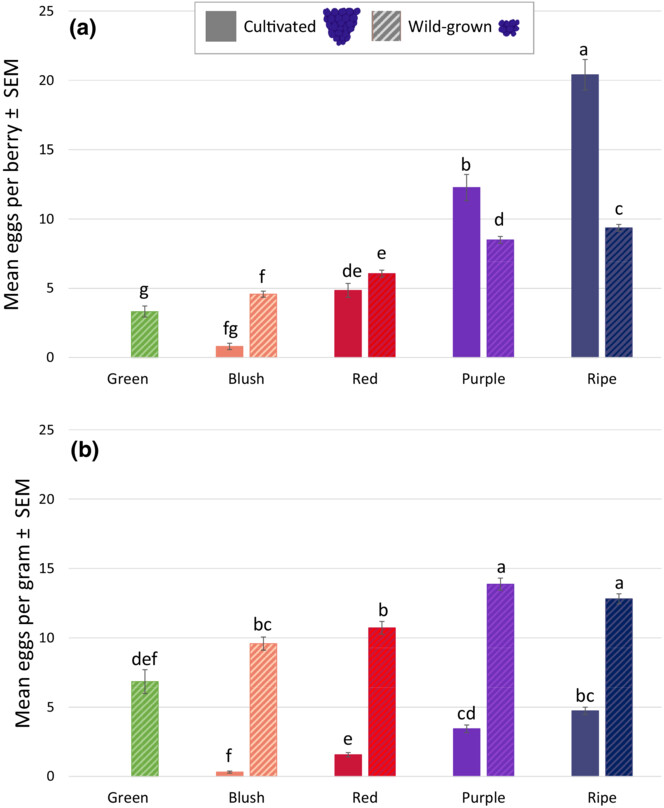
The invasive Drosophila suzukii infests both wild-growing and cultivated blackberry fruit. The infestation pattern differs between the two types, where wild-growing berries received more eggs by weight and in more underripe stages while cultivated fruit received more eggs per berry for the two ripest stages. These findings suggest oviposition behavior may differ by fruit type and environment.
The spectral composition of a white light influences its attractiveness to Culex pipiens mosquitoes
- First Published: 06 January 2023
Harsh nutritional environment has positive and negative consequences for family living in a burying beetle
- First Published: 06 January 2023
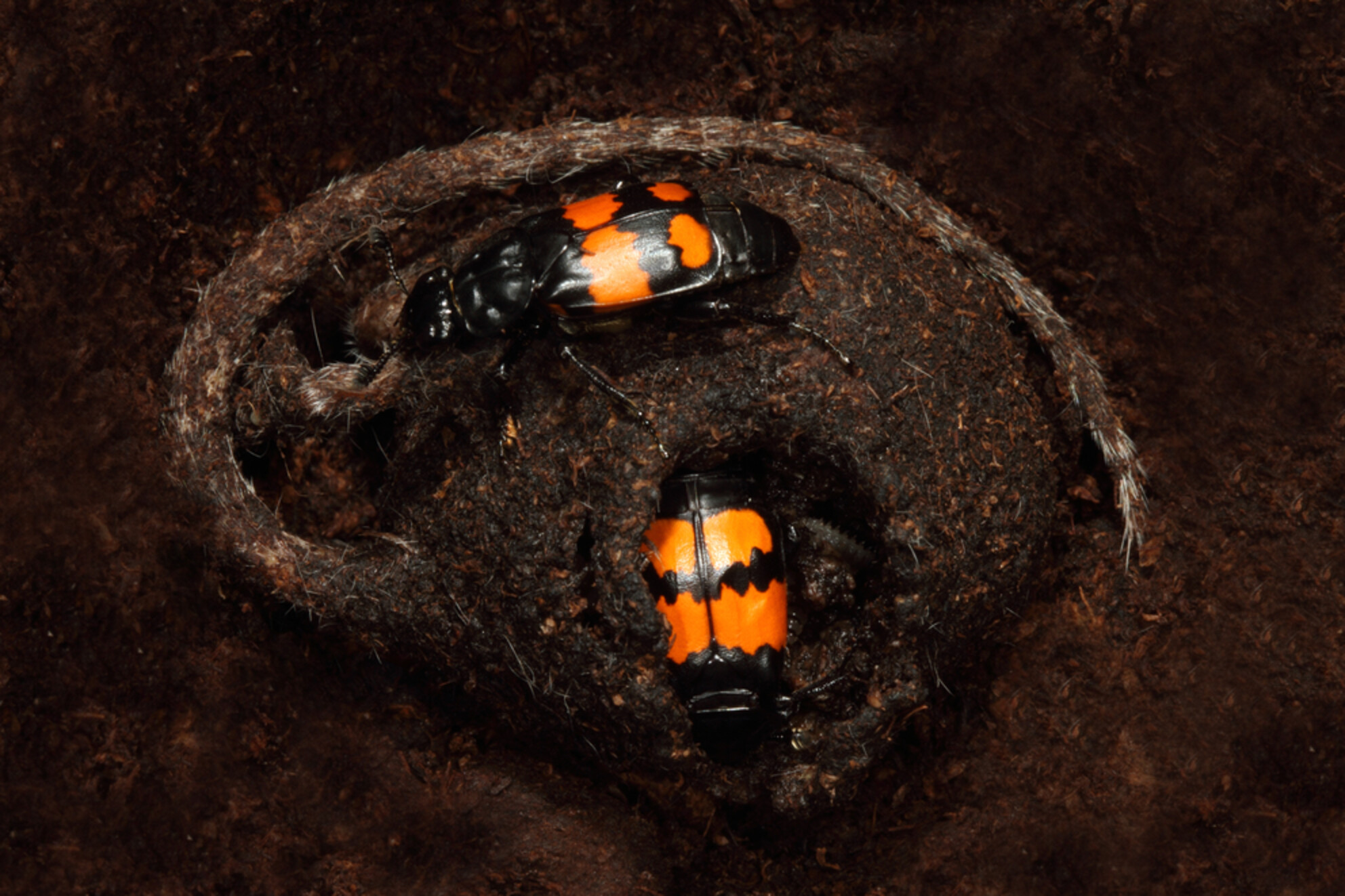
In this study, we showed that a harsh nutritional environment can have different effects on the breeding success of biparental pairs or single females. Burying beetle pairs that experience nutritional stress before breeding rear larvae with a higher survival rate compared to larvae of well-fed pairs. Additionally, we showed that competition between family members is intensified on small carcasses and females raise bigger broods than pairs.
Diet composition and selection of Père David's deer in Hubei Shishou Milu National Nature Reserve, China
- First Published: 06 January 2023
Resource availability modulates the effect of body size on reproductive development
- First Published: 06 January 2023
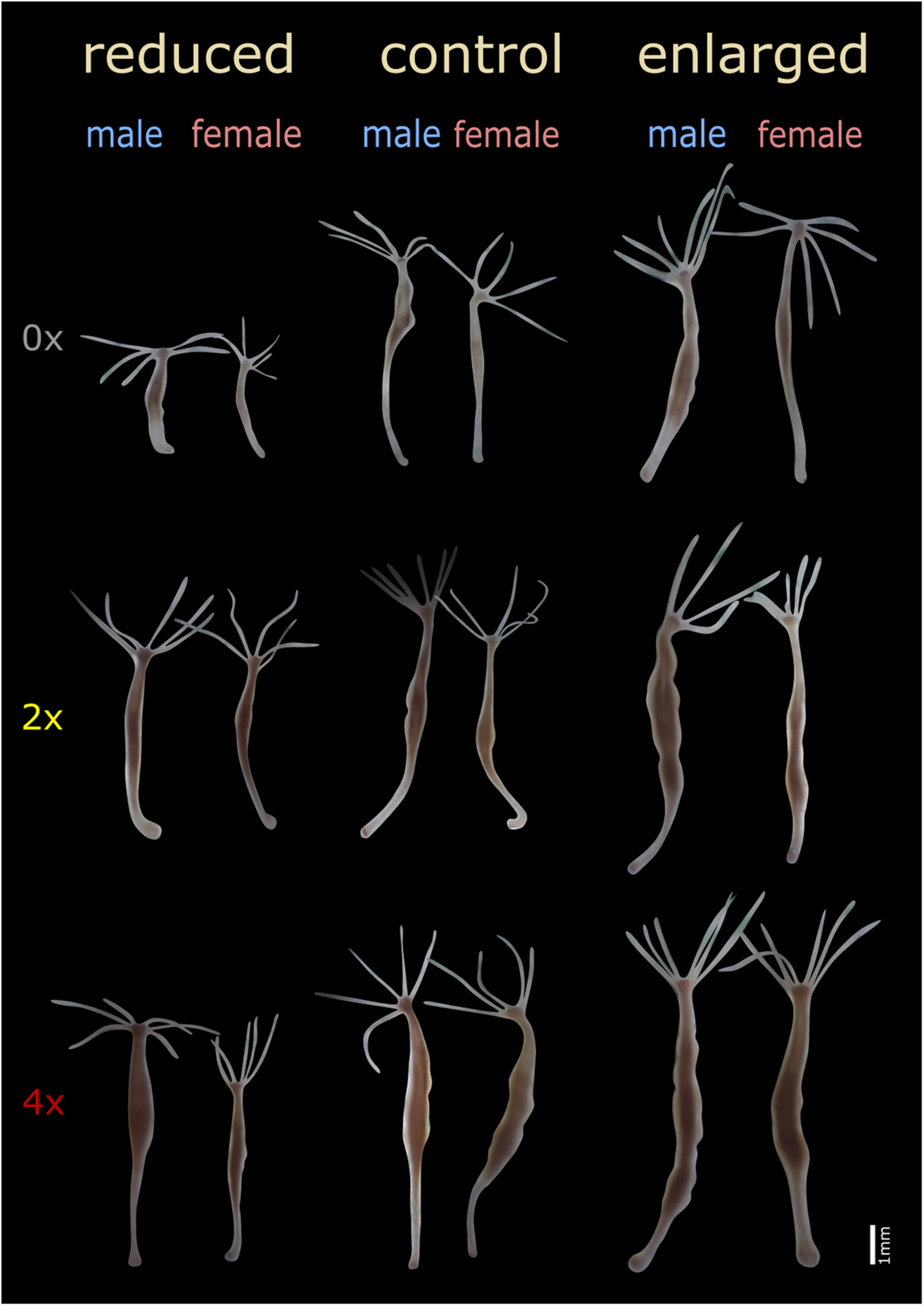
We attempted to untangle the body size—fitness trait correlations with Hydra oligactis model system, by grafting procedure to directly manipulate body size, and with food availability manipulation. With these treatments, we attempted to reveal the effects of body size, resource availability, and their interaction on reproduction and survival.
TDFCAM: A method for estimating stable isotope trophic discrimination in wild populations
- First Published: 06 January 2023
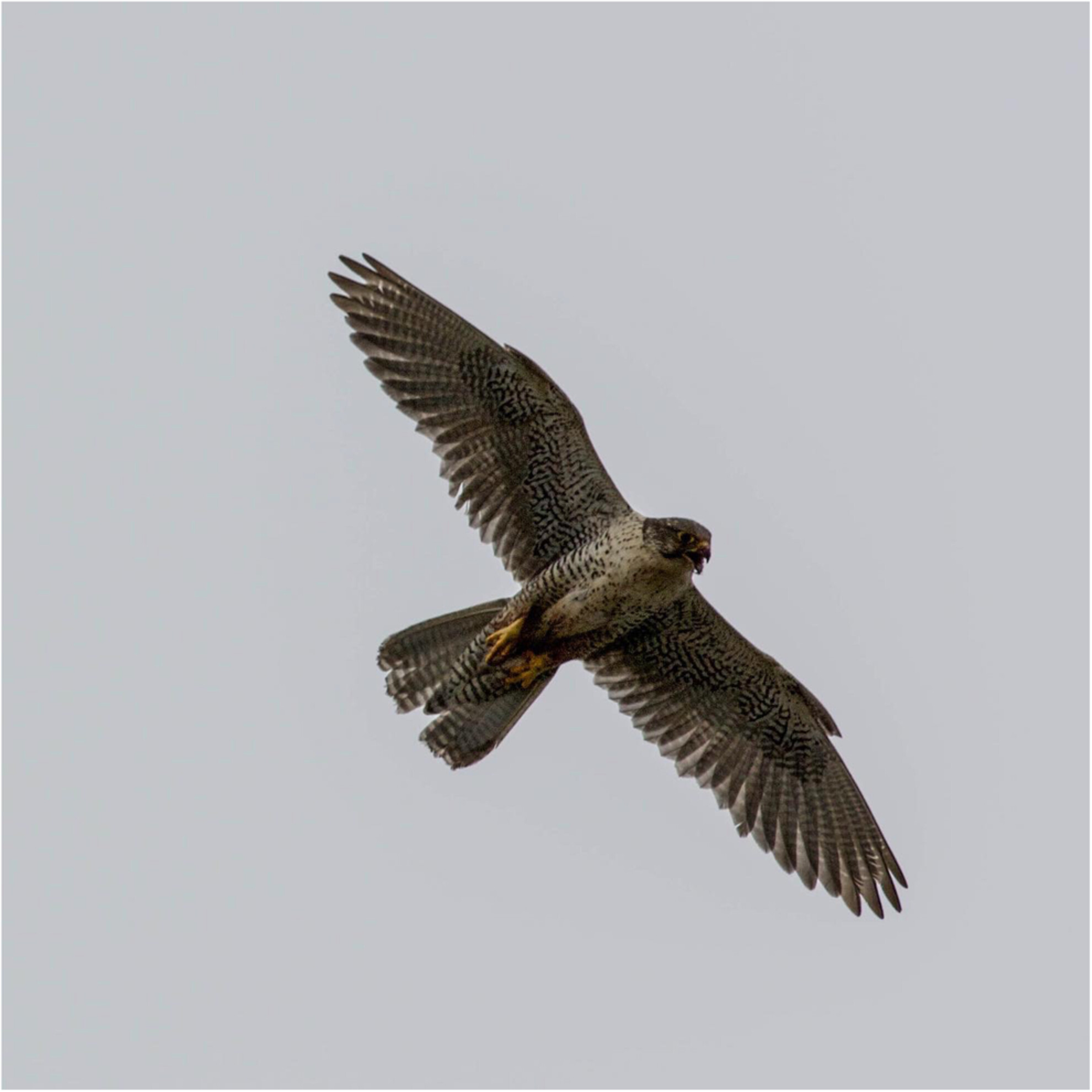
Trophic discrimination factors (TDFs) are an important component of stable isotope mixing models (and their use for characterizing wild animal diets) but are difficult to estimate under realistic conditions. We developed a method (TDFCAM) to estimate TDFs in wild populations using stable isotopes in conjunction with a secondary high-precision diet estimate. We evaluated this approach in three wild raptor datasets, which had contemporaneous stable isotope and nest camera diet data, and found TDFcams to outperform any other TDF tested and produce reliable population-level estimates of diet composition.
Naturalization of an alien ancient fruit tree at a fine scale: Community structure and population dynamics of Cydonia oblonga in China
- First Published: 06 January 2023
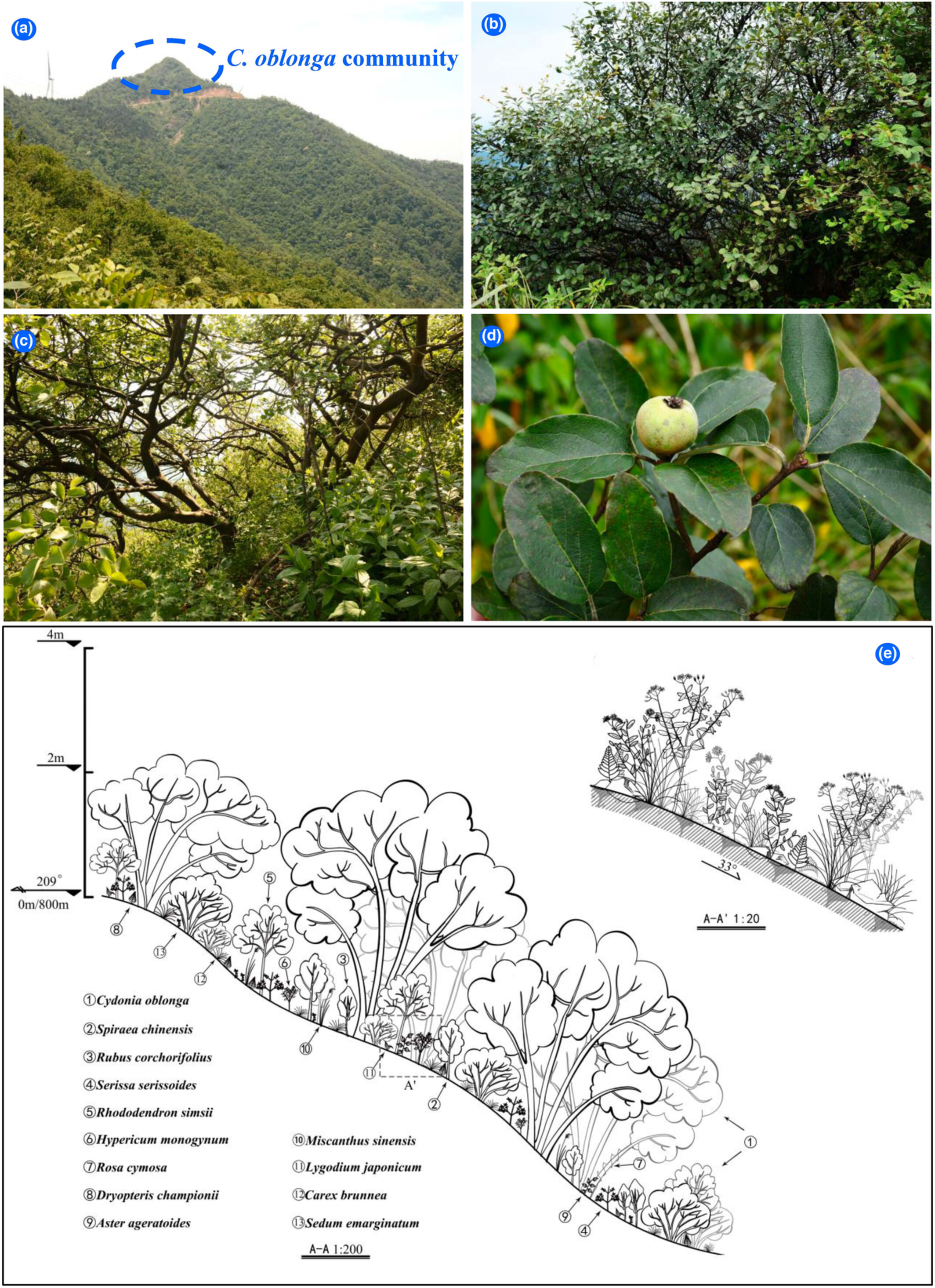
We report for the first time the naturalization of Cydonia oblonga in China and East Asia based on community structure and population dynamics at a fine scale. We conducted a comprehensive survey of the species through field community investigation, interviews, and literature information. The results suggest that alien species closely related to native species are more likely to invade, naturalize, and become dominant species in local habitats, which strongly supports the “pre-adaptation hypothesis” at a fine scale.
The role of landscape in shaping bird community and implications for landscape management at Nanjing Lukou International Airport
- First Published: 06 January 2023
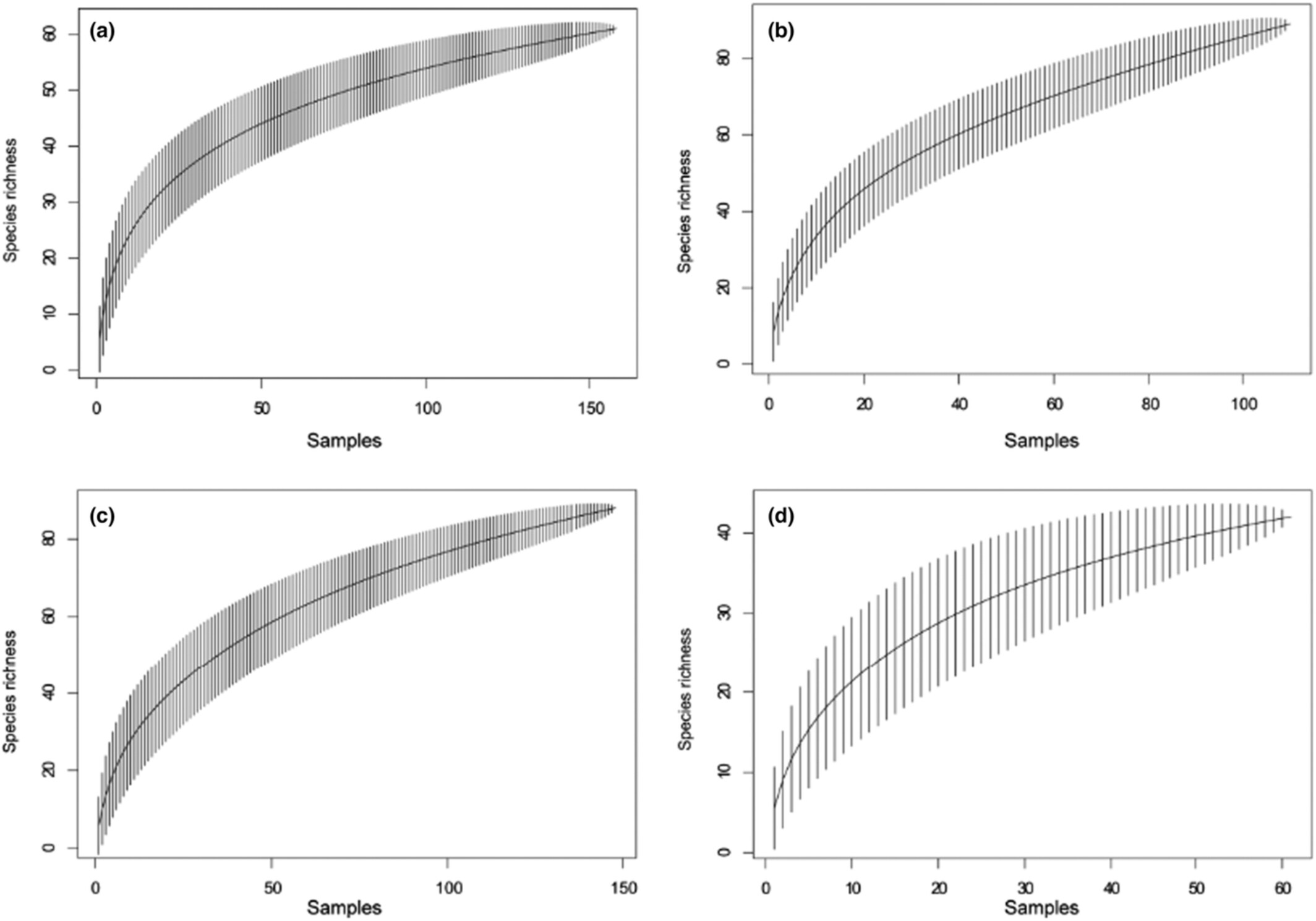
Bird multi-dimensional diversity were strongly affected by landscape matrix types. Landscape played an important role in shaping bird communities. Edge density, shape complexity and area were the relatively important explanatory factors. Our results suggest that landscape management surrounding airports can provide new approaches for policymakers to mitigate wildlife strikes
Environmental and topographic drivers of amphibian phylogenetic diversity and endemism in the Iberian Peninsula
- First Published: 06 January 2023

Our study addresses the drivers of biodiversity patterns. We build on existing research regarding spatial diversity patterns to identify potential drivers of species diversity patterns, using Iberian amphibians as a case study. Our findings show that water-energy availability and historical climate instability are the most important drivers of diversity in our study. However, the strength of these predictors in our case study is weaker than it tends to be at global scales.
Odontocete spatial patterns and temporal drivers of detection at sites in the Hawaiian islands
- First Published: 06 January 2023
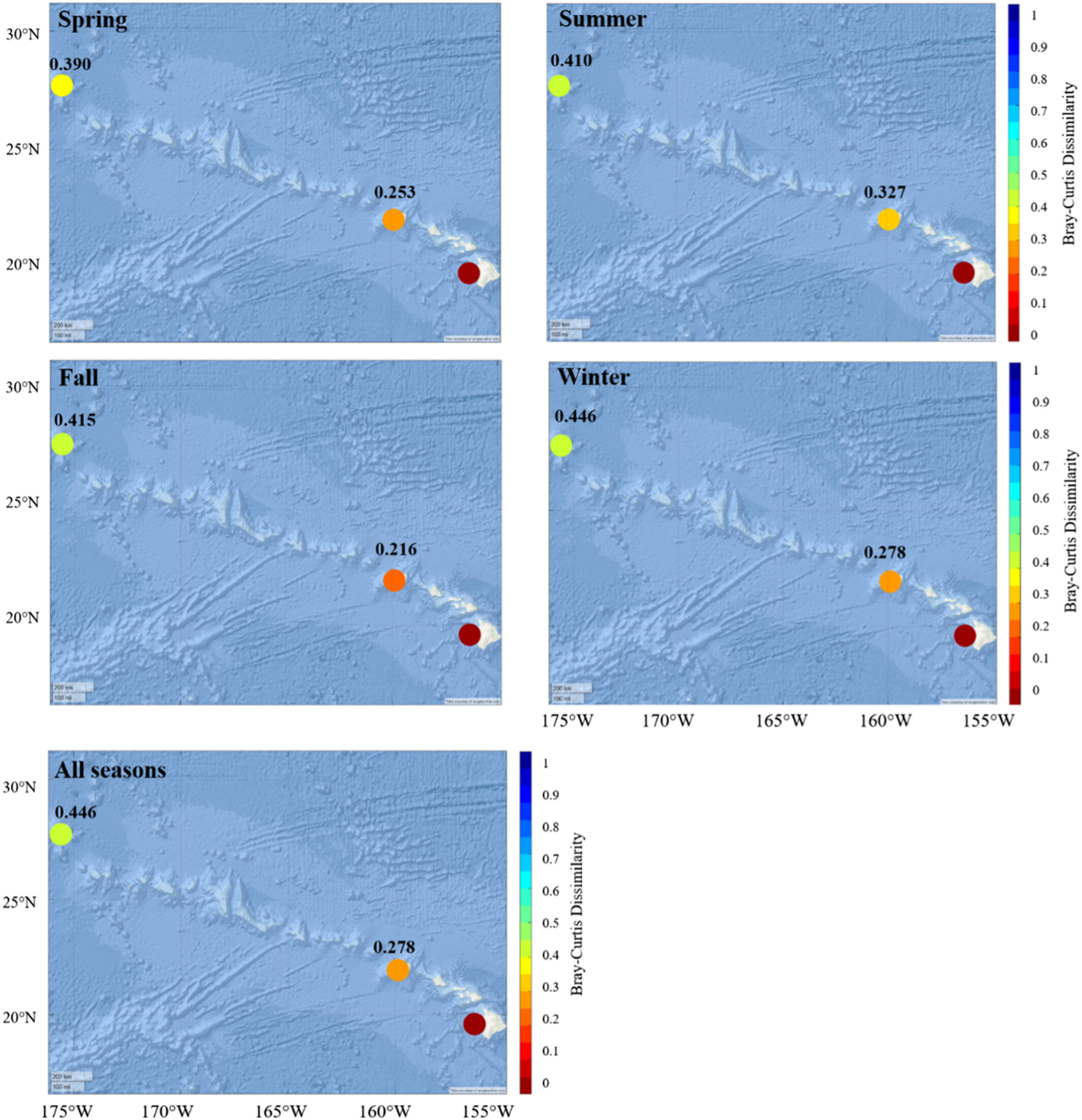
In this study, we make use of an existing long-term, labeled PAM data set to examine spatiotemporal patterning of at least 10 odontocete (toothed whale) species in the Hawaiian Islands using compositional analyses and modeling techniques. We demonstrate the variability of temporal patterns even at relatively close sites, which may imply that wide-ranging models of species presence are missing key fine-scale movement patterns.
Phage-resistant mutations impact bacteria susceptibility to future phage infections and antibiotic response
- First Published: 06 January 2023
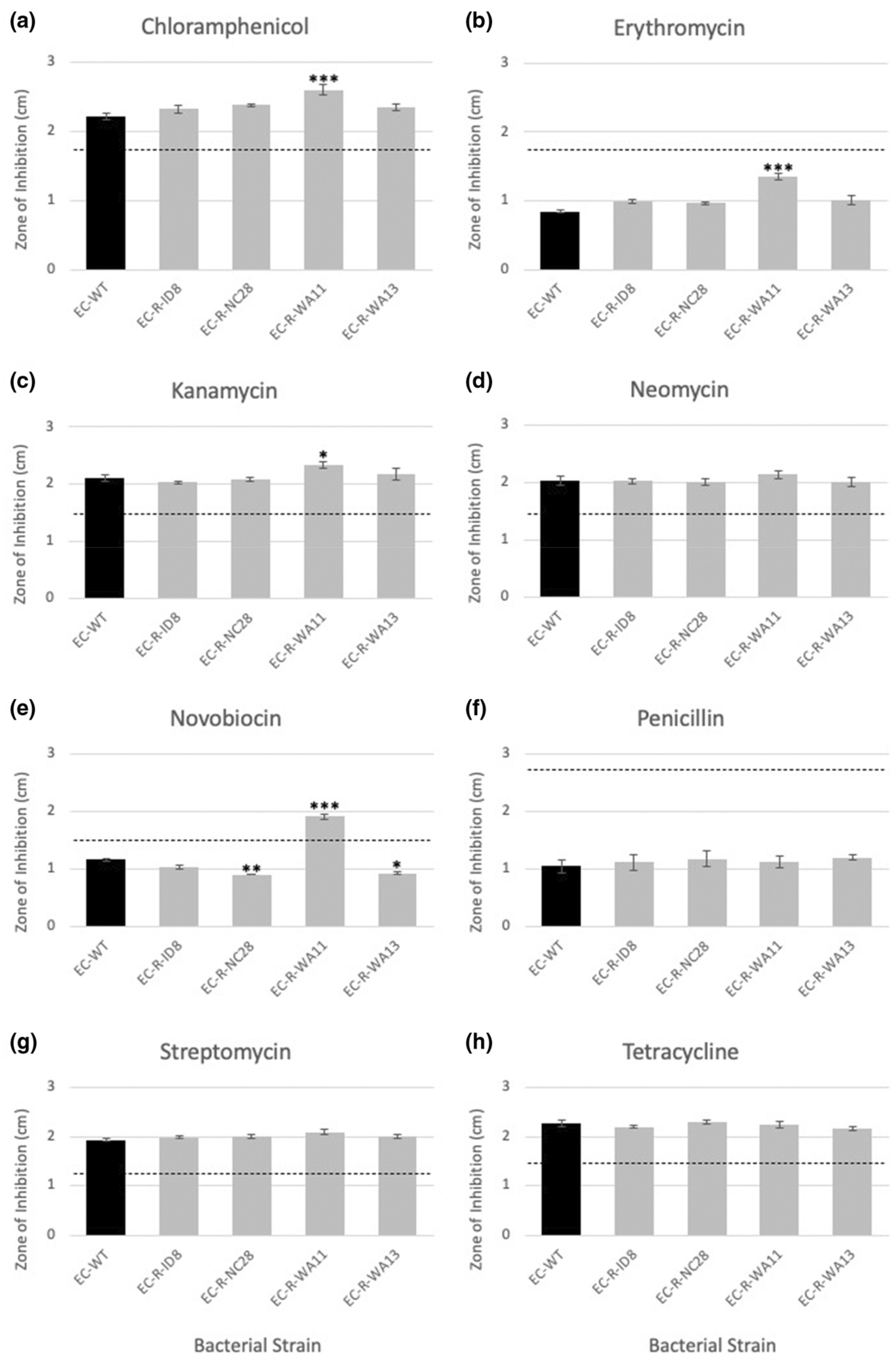
We describe how exposure to bacteriophages results in the evolution of E. coli phage-resistance, and this resistance is conferred to related phages that the bacteria were never exposed. Evolved phage-resistance may come at a cost of antibiotic resistance, but the interactions are mutation and antibiotic context-dependent.
Seasonal flooding decreases fruit-feeding butterfly species dominance and increases spatial turnover in floodplain forests of central Amazonia
- First Published: 06 January 2023
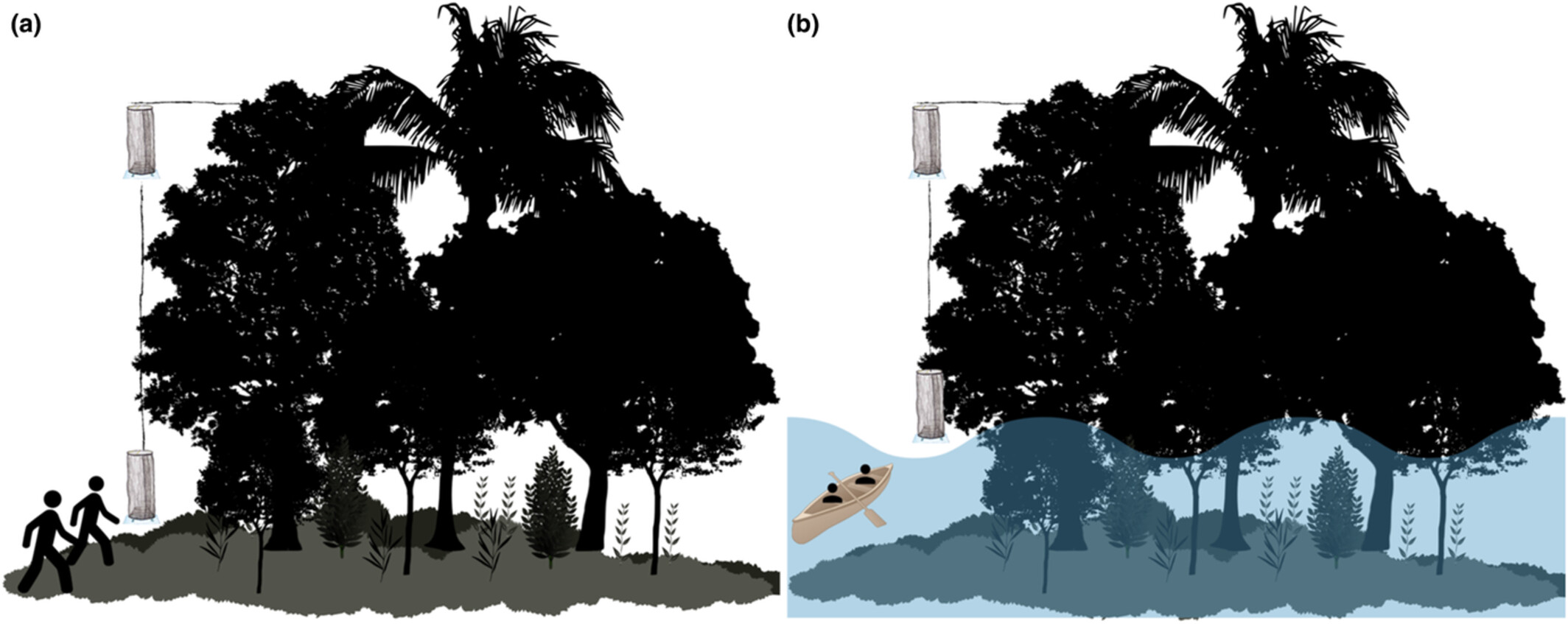
This is the first study that assessed the effect of seasonal flooding pulse on butterfly communities in the Amazon. We evaluate assemblage metrics of fruit-feeding butterflies in the low- and high-water seasons in each forest type and different forest stratum. The seasonal flood increases spatial turnover in all forest types and strata.
A simple, low-cost method to age mammals? An alternative to cementum annuli analysis
- First Published: 06 January 2023
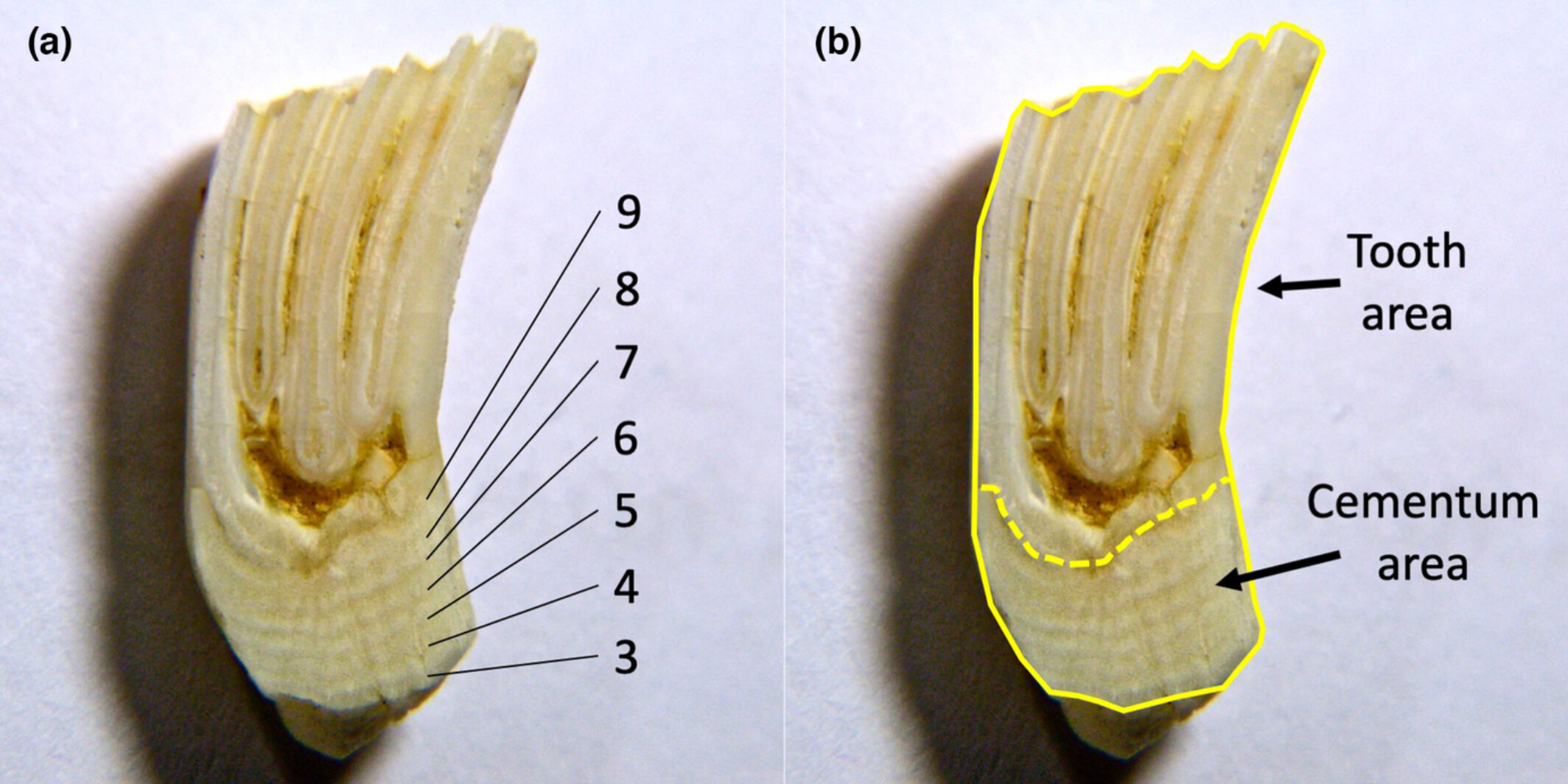
Using beavers (Castor canadensis) as a test species, we developed a straightforward method to age mammals that requires little specialized equipment. The method consists of: (1) digitizing longitudinally sectioned teeth and measuring the proportion of tooth surface area comprised of cementum (“proportion cementum”), (2) evaluating the relationship between proportion cementum and specimen age (determined from either known-age samples or cementum annuli analysis), and (3) using the modeled relationship to estimate the age of other individuals based solely on proportion cementum.
Correlation with a limited set of behavioral niches explains the convergence of somatic morphology in mygalomorph spiders
- First Published: 09 January 2023
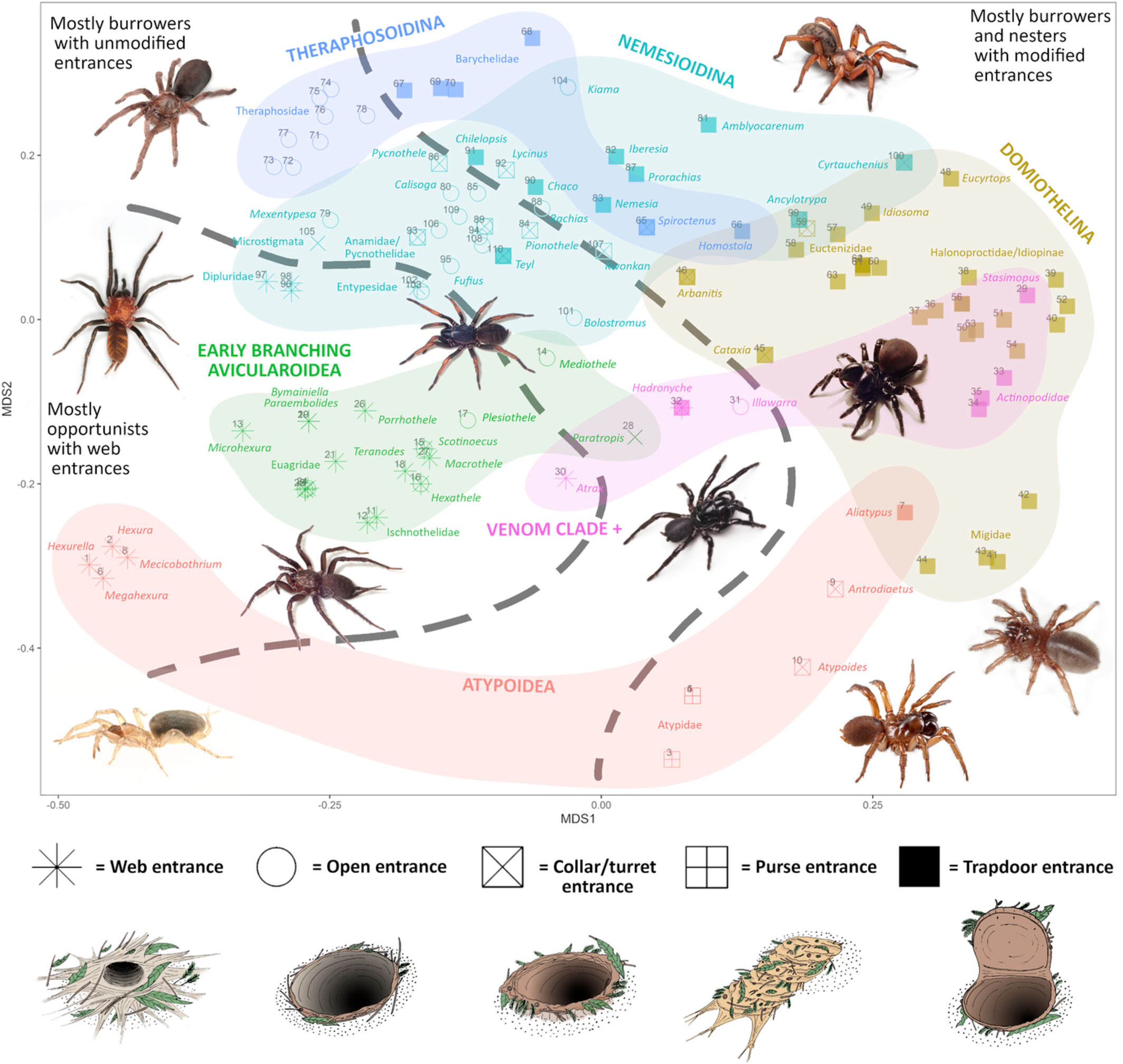
We reconstruct the evolution of burrowing behavior in mygalomorph spiders, compare the influence of behavior and evolutionary history on their somatic morphology, and test hypotheses of correlated evolution between specific morphological features and behavior. We find that shifts across the simple adaptive landscape of the Mygalomorphae are common in their evolutionary history and that their somatic morphology is heavily influenced by behavior, with taxa inhabiting the same behavioral niche often more similar morphologically than more closely related but behaviorally divergent taxa. We identify a suite of 11 somatic features that show significant correlation with particular behaviors.
Intraspecific variation in growth response to drought stress across geographic locations and genetic groups in Coffea canephora
- First Published: 03 January 2023
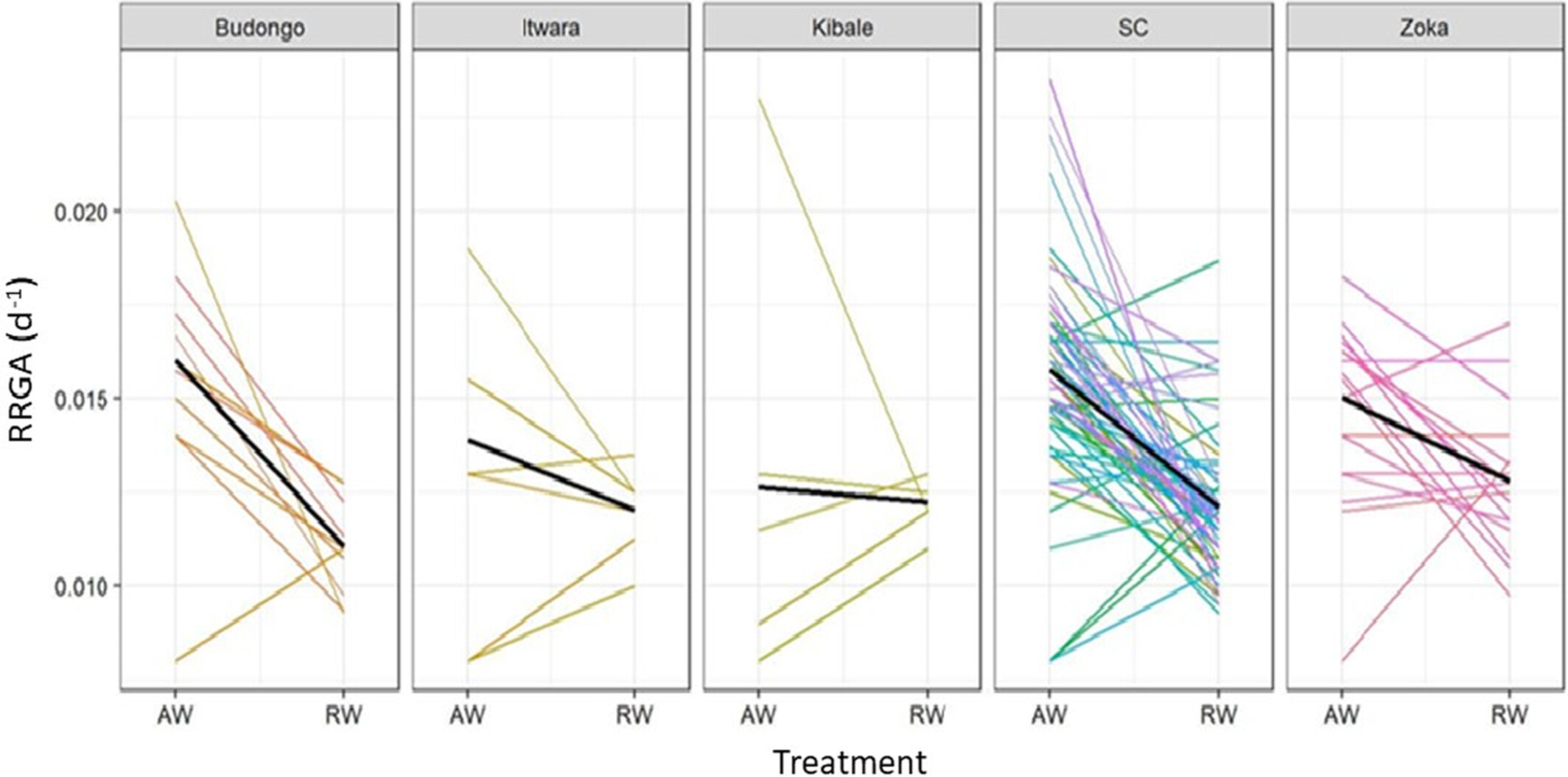
Drought tolerance within C. canephora is negatively linked to growth. Drought tolerance of Uganda's C. canephora is weakly though significantly linked to the local climate. Intraspecific diversity, associated with adaptation to local conditions, can be exploited in breeding for climate-resilient cultivars.
The role of reed management and habitat quality on brood parasitism and chick survival of the brood parasitic Common Cuckoo
- First Published: 03 January 2023
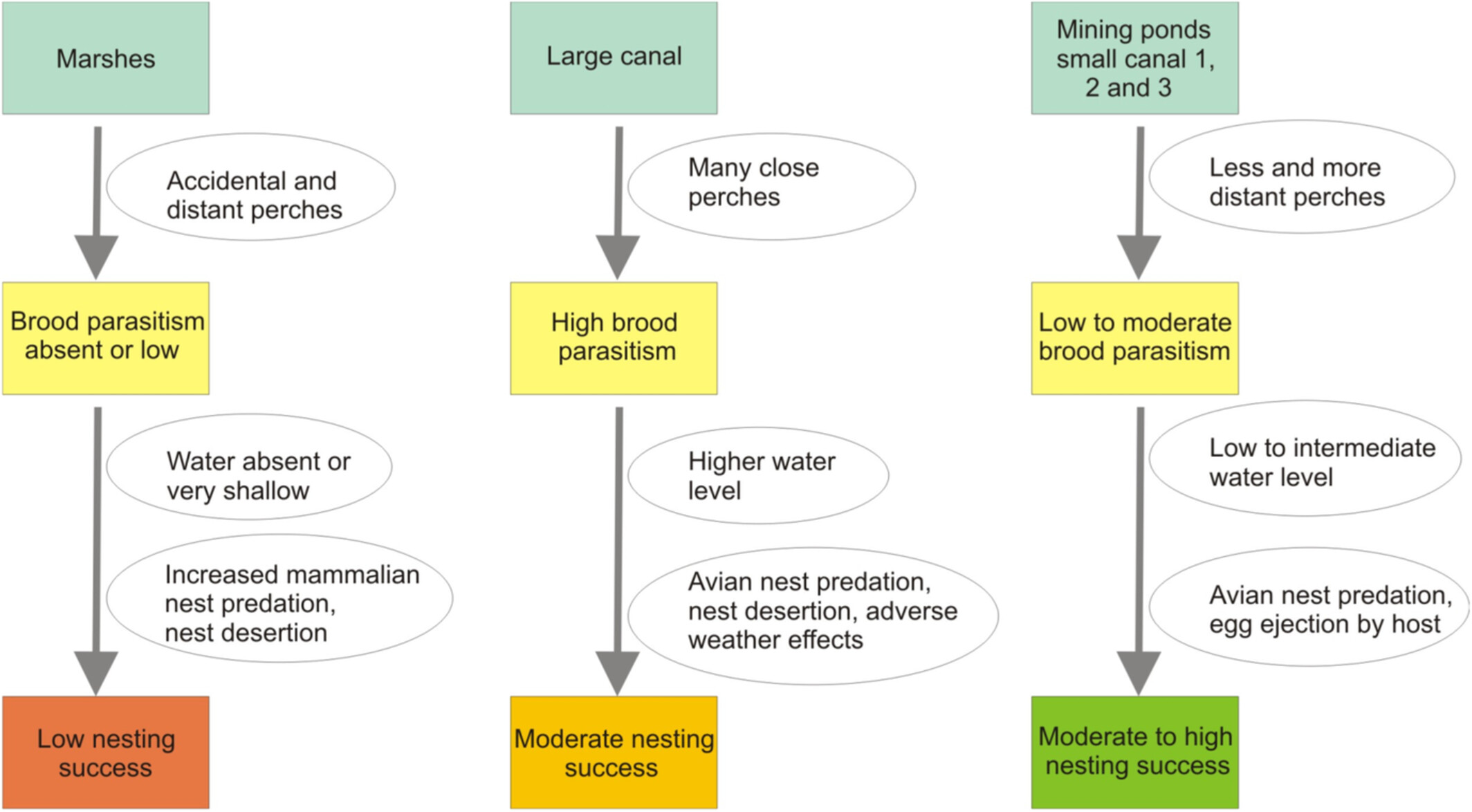
We studied how reed habitat quality and management influence brood parasitism rate and offspring survival in Common Cuckoos parasitizing nests of Great Reed Warblers in six reed habitats in an intensive agricultural landscape. Brood parasitism rate was highest on large canals and was positively influenced by the availability of potential perches, while the Cuckoo chick survival decreased with water depth and was not affected by other factors. Our results suggest that the habitat-dependent detectability of host nests was central in brood parasitism rate and that water level was central in Cuckoo chick survival.
Soil microbial community shifts explain habitat heterogeneity in two Haloxylon species from a nutrient perspective
- First Published: 03 January 2023
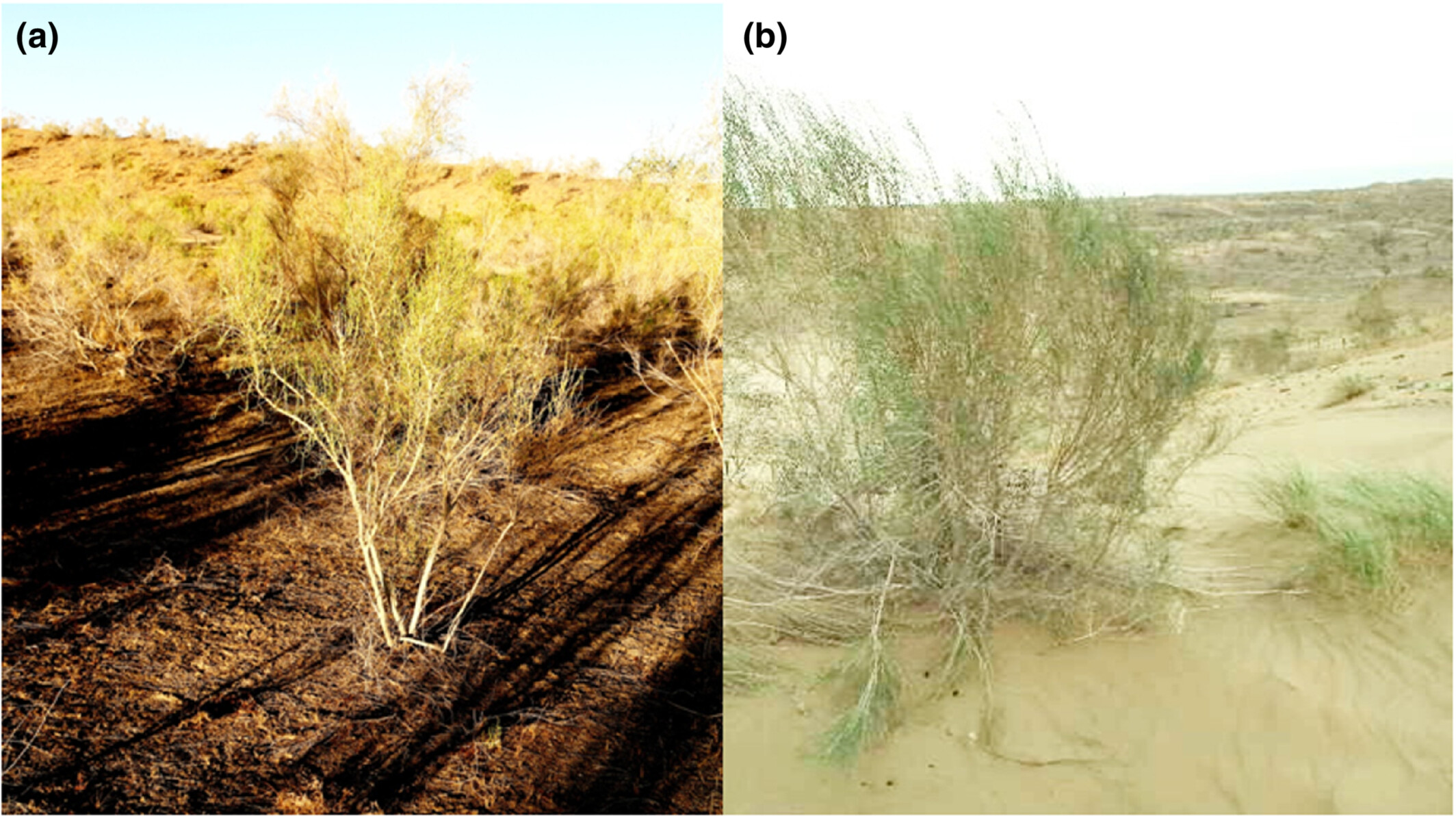
Haloxylon ammodendron and Haloxylon persicum (as sister taxa) grow in adjacent and distinct habitats in the Gurbantonggut Desert, with the former growing on interdunes and the latter on sand dunes. The rhizosphere of H. ammodendron recruited more copiotrophs (e.g., Proteobacteria, Bacteroidetes, N-fixing microbes, and AOB), and with stronger microbial activities, which helps it maintain a competitive advantage in relatively nutrient-rich lowlands. H. persicum relied more on eukarya, fungi, actinomycetes, and archaea (including AOA), with higher nutrient use efficiency, which help it adapt to the poorer sand dunes.
Can vegetation be discretely classified in species-poor environments? Testing plant community concepts for vegetation monitoring on sub-Antarctic Marion Island
- First Published: 03 January 2023
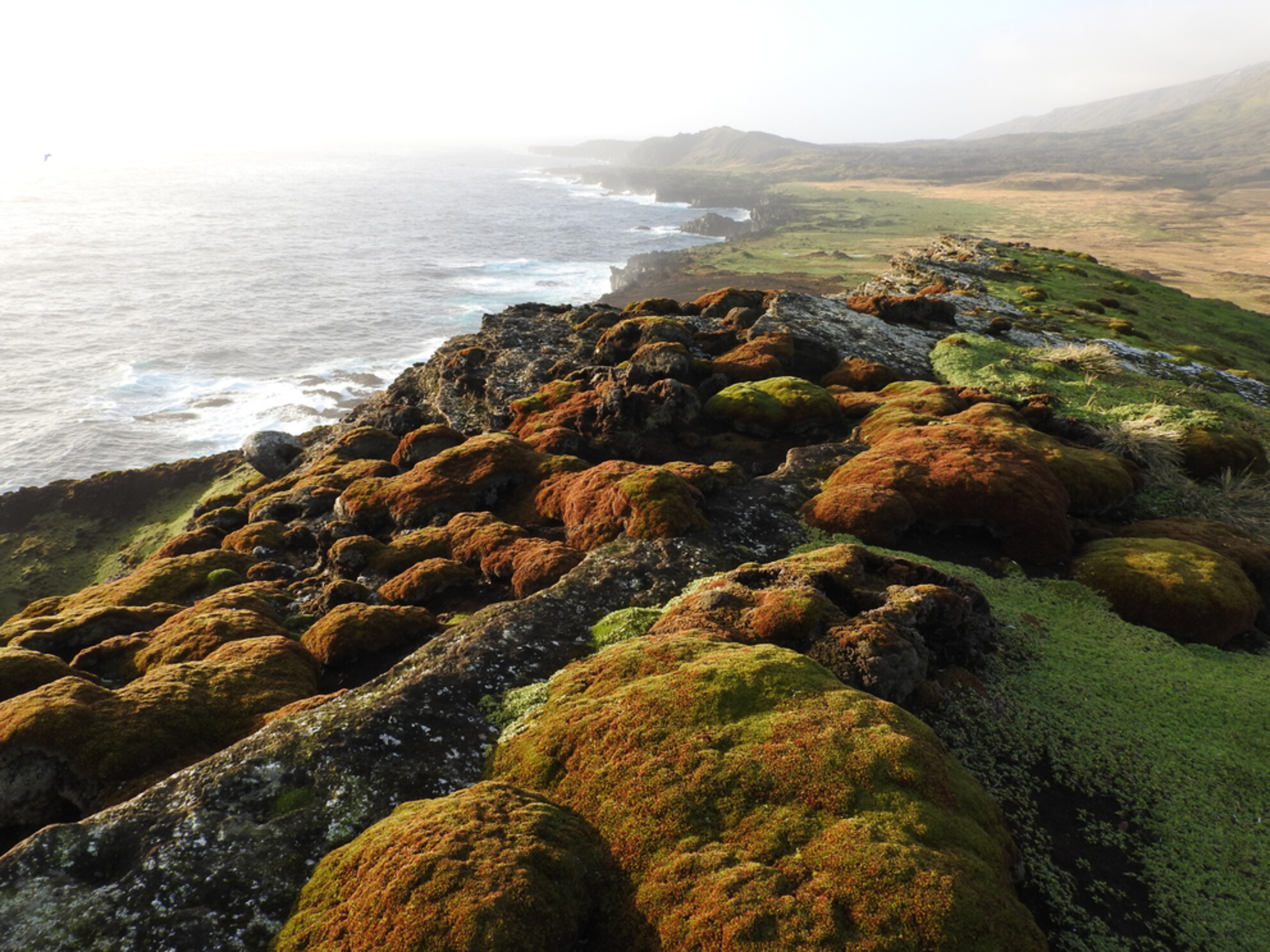
We reexamined the classification of vegetation on sub-Antarctic Marion Island and found that there were no strong floristic grounds for a discrete classification. A community-level classification using species composition may not be suitable in such species-poor environments. Species-level, rather than community-level, monitoring may be more appropriate in species-poor environments.
Individual flowering phenology shapes plant–pollinator interactions across ecological scales affecting plant reproduction
- First Published: 04 January 2023
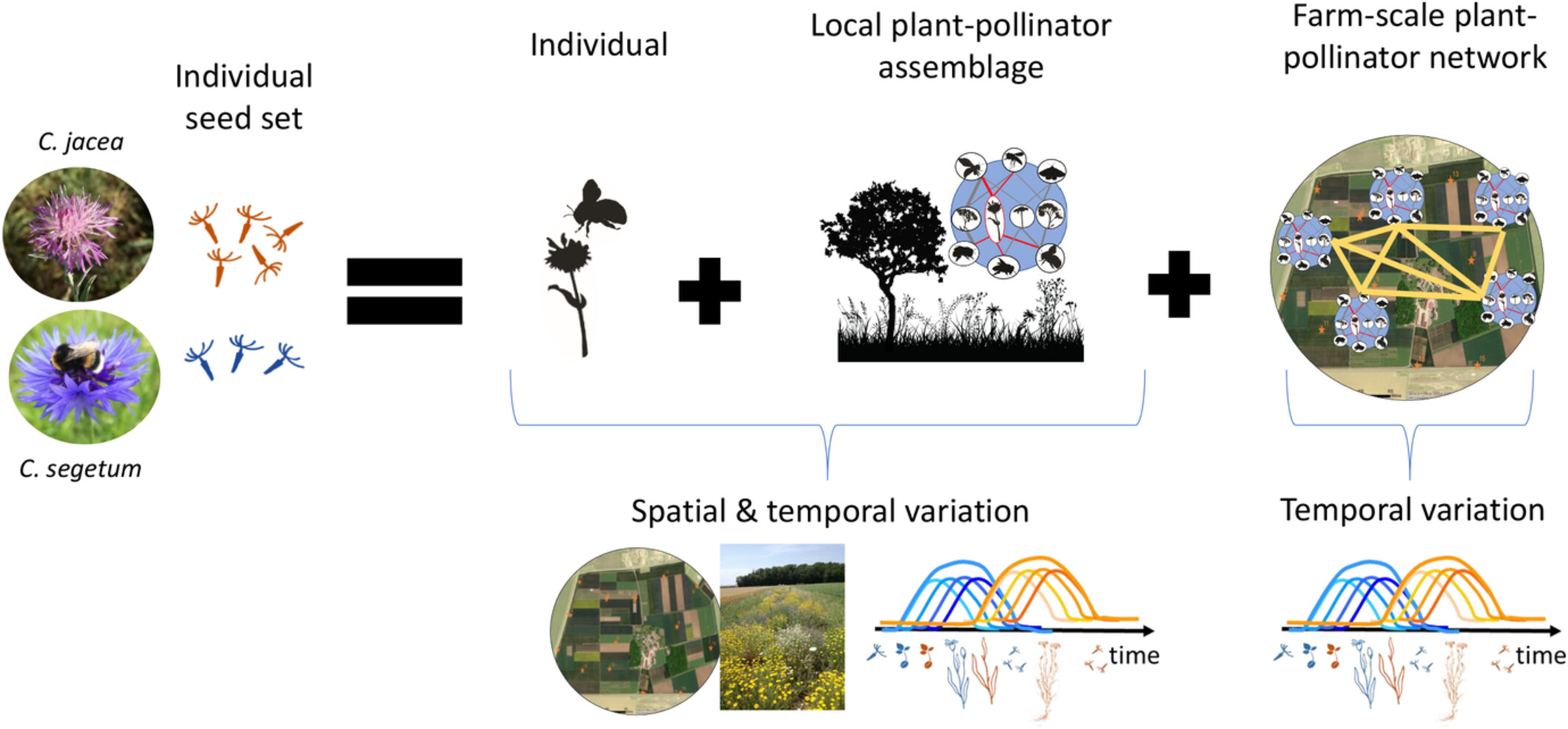
Using a farm-scale experiment we investigated how intraspecific variation in flowering phenology and spatial heterogeneity in floral resources affected wild plant reproduction by modifying plant–pollinator interactions at the scale of the plant individual, the local assemblage, and the interaction network of agroecological infrastructures across the farm. We applied an original individual-centered approach that ensured the spatio-temporal variation in predictors of seed set (floral resources, pollinator activity, and interaction topology) matched exactly each individual plant's flowering period. These phenologically explicit models revealed that individual plant seed set in our two focal plant species (Cyanus segetum and Centaurea jacea) was influenced by patterns in plant–pollinator diversity and network structure that imply a co-occurrence of pollinator-mediated facilitative and competitive interactions operating within and between ecological scales. Icons sourced from: https://thenounproject.com/CC BY-NC-ND 2.0: (lluisa Iborra, Yu Luck, Les vieux garçons, Gan Khoon Lay, Blair Adams, Nareerat Jaikaew, and Prosymbols) and https://www.shutterstock.com (a free trial).
Evolution of a hybrid zone of two willow species (Salix L.) in the European Alps analyzed by RAD-seq and morphometrics
- First Published: 04 January 2023
Range reexpansion after long stasis: Italian otters (Lutra lutra) at their northern edge
- First Published: 04 January 2023

The paper focuses on range reexpansion of the endangered Eurasian otter (Lutra lutra) in Italy. We modeled the rate of range expansion at the northern expanding front (central Italy) to gain insights into mechanisms of species reexpansion. We analyzed a time series of occupancy rates and distance measures on northernmost occurrences of the species (1985–2021). On the premise that the reexpansion of a species is a non-linear process, we were able to identify the onset of reexpansion and test for different model forms underlying different hypotheses using segmented regression. The main results support the hypothesis that range reexpansion starts when the occupancy rate at the expanding front reaches a threshold value.
(Not) far from home: No sex bias in dispersal, but limited genetic patch size, in an endangered species, the Spotted Turtle (Clemmys guttata)
- First Published: 04 January 2023
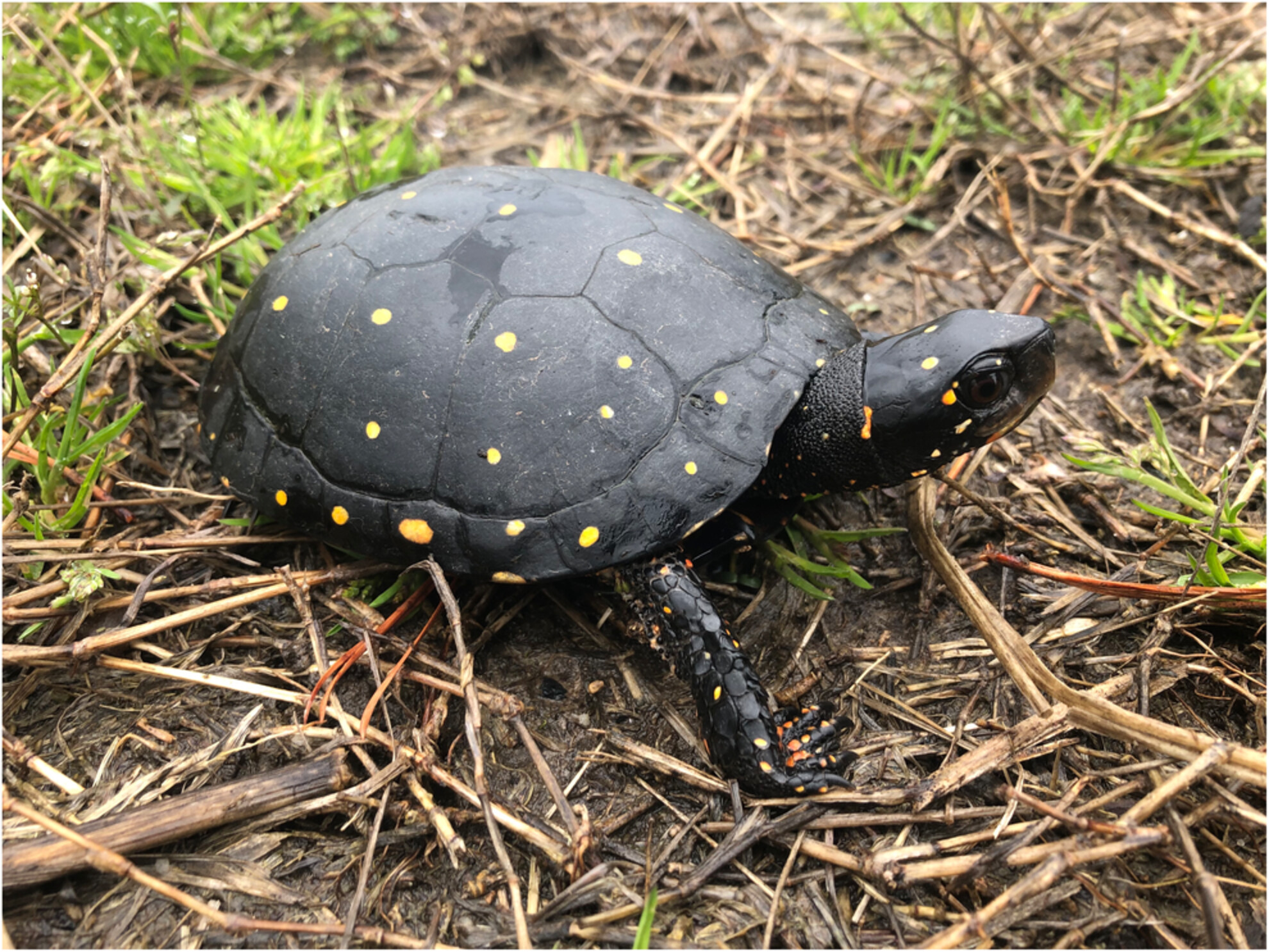
Sex-biased dispersal is common in many animals, with male-biased dispersal often found. We found significant spatial genetic structure in both sexes, but male and female dispersal patterns mimicked each other, with higher than expected related at distances <25 km. Lack of male-biased dispersal was surprising, but a genetic patch size of <25 km is concerning for an endangered species whose populations are often separated by large distances.
The maternal energetic environment affects both egg and offspring phenotypes in green anole lizards (Anolis carolinensis)
- First Published: 06 January 2023
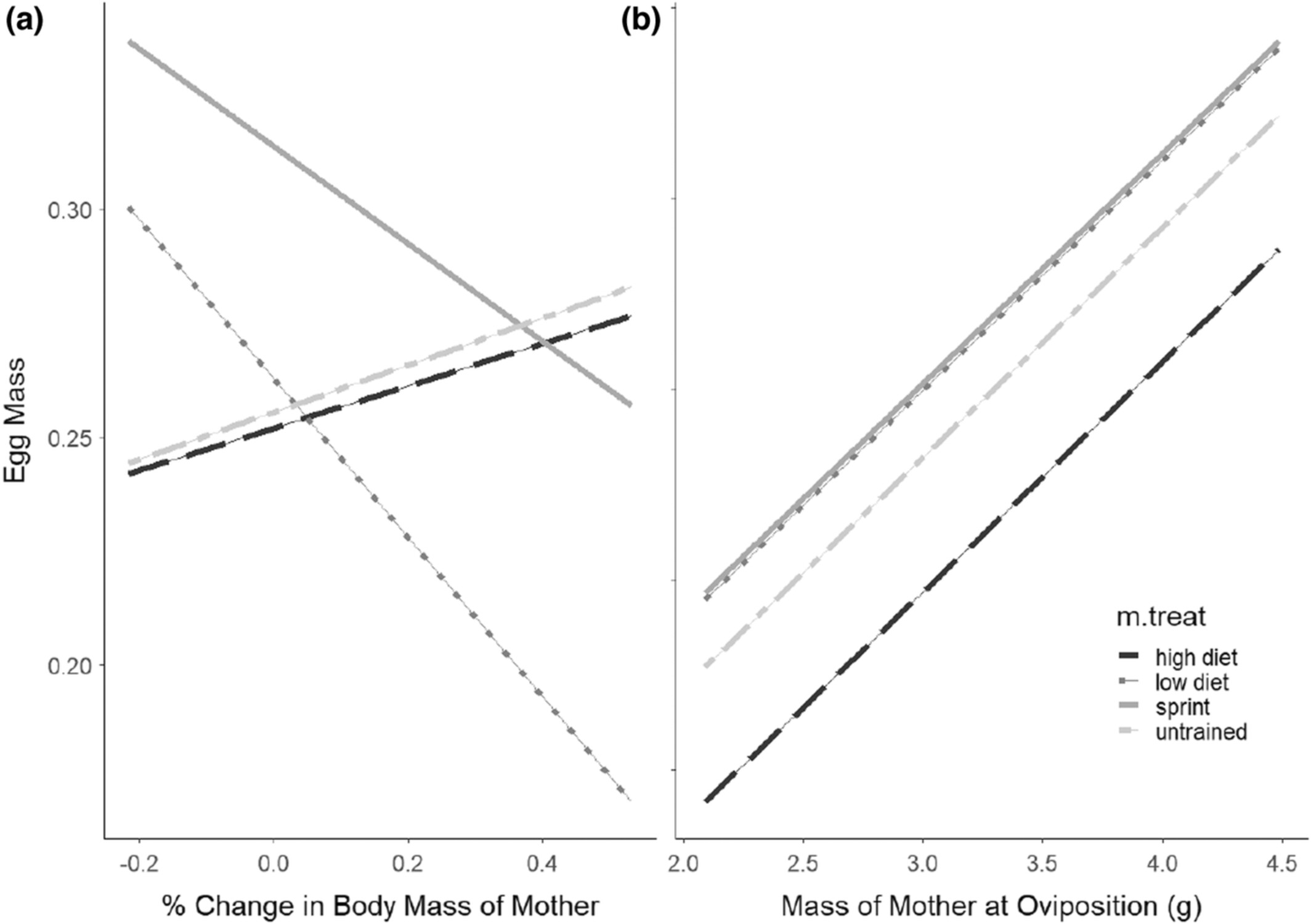
We manipulated diet (low quantity of food or high quantity of food) and energetic output (sprint trained or untrained) in green anole (Anolis carolinensis) females to test how variation in the maternal environment affects offspring phenotype. We learned that these different environments caused different phenotypic effects, such as affecting egg mass, incubation period, and hatchling mass. These results demonstrate that the maternal energetic environment (i.e., the amount of available energy to the mother) has significant effects on both the egg and offspring phenotypes.
Territory and population attributes affect Florida scrub-jay fecundity in fire-adapted ecosystems
- First Published: 15 January 2023
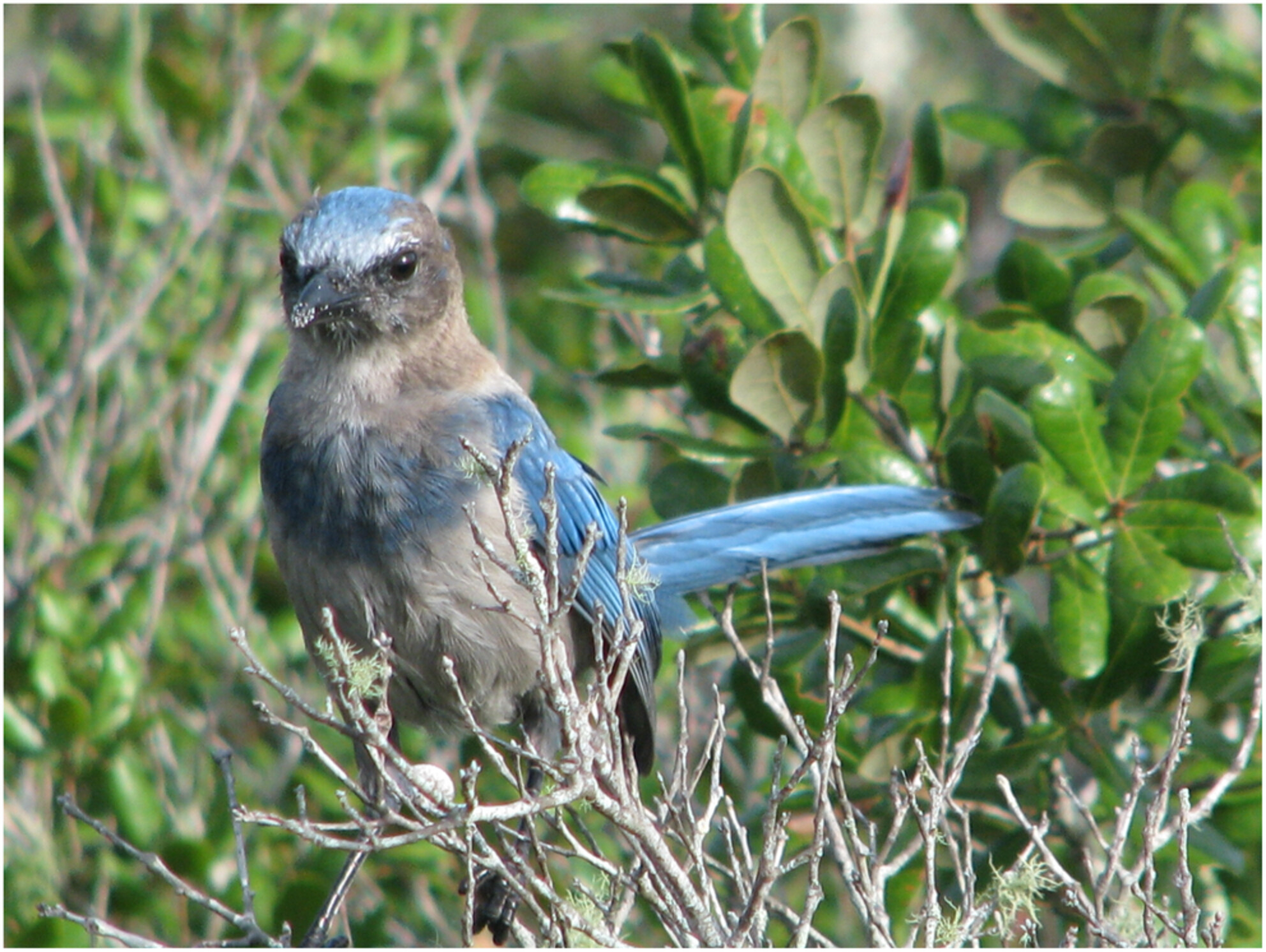
We conducted long-term study to quantify how habitat, sociobiology, population factors, and random effects influenced Florida scrub-jay fecundity to support adaptive fire management of an endangered species dependent on regular habitat disturbances. We used Bayesian hierarchical modeling of success (whether a family produced young) and counts (how many young) because many breeding pairs were unsuccessful in producing independent young during a breeding season.
Integrating carbon stocks and landscape connectivity for nature-based climate solutions
- First Published: 09 January 2023
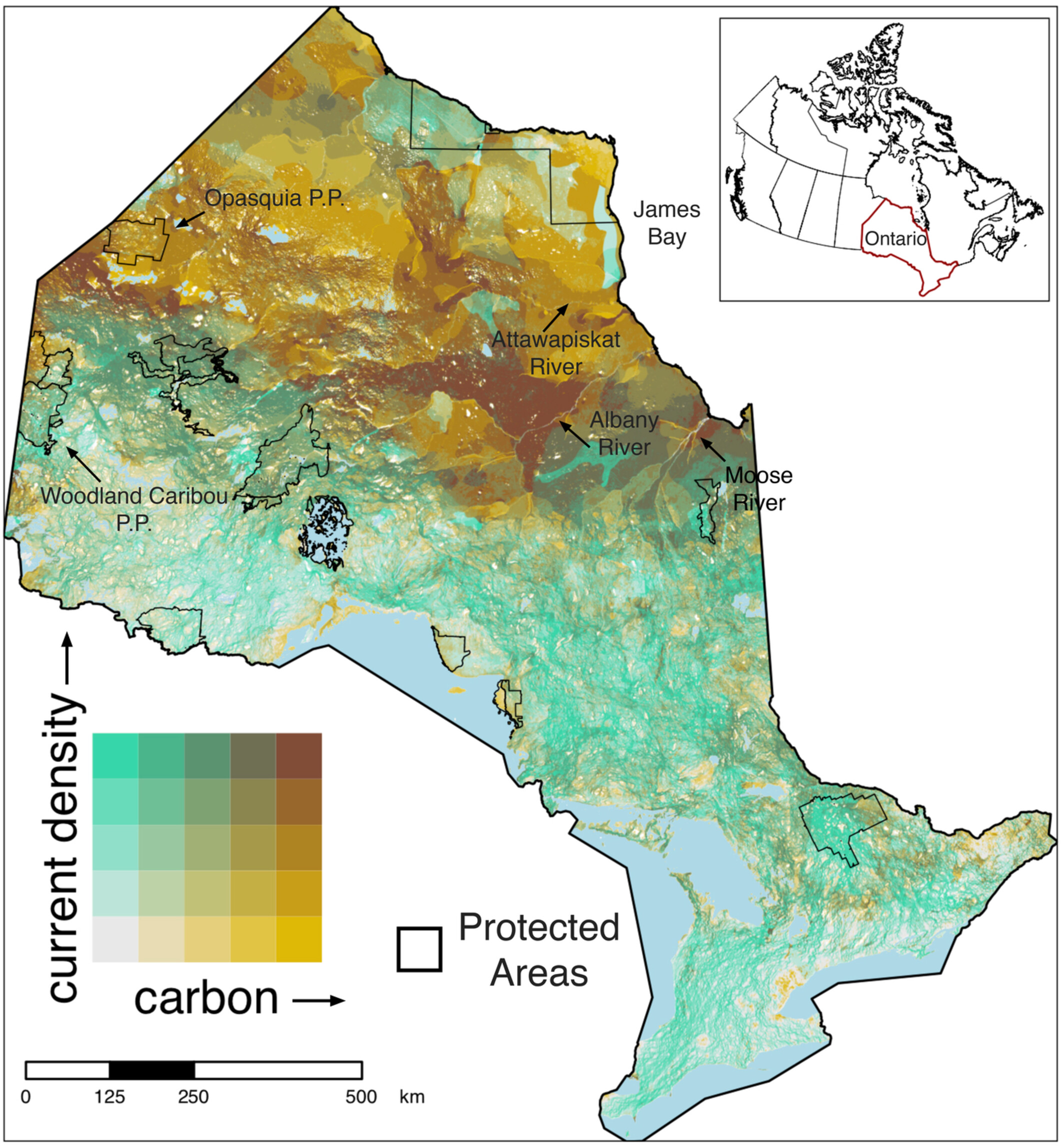
We identified areas important for the implementation of nature-based climate solutions and biodiversity conservation in Ontario, Canada by intersecting high-resolution spatial data for carbon storage and landscape connectivity. We found large hotspots, with high values for both indices, throughout the boreal forest and northern peatlands of the province. Further, our results show that current protected and conserved areas in Ontario only cover 13% of landscapes with the highest values for both carbon storage and connectivity suggesting these areas are priorities for protection and would make significant contributions toward ambitious national targets to reduce greenhouse gas emissions and conserve biodiversity.
Phylogeny of Saxifraga section Saxifraga subsection Arachnoideae (Saxifragaceae) and the origin of low elevation shade-dwelling species
- First Published: 09 January 2023
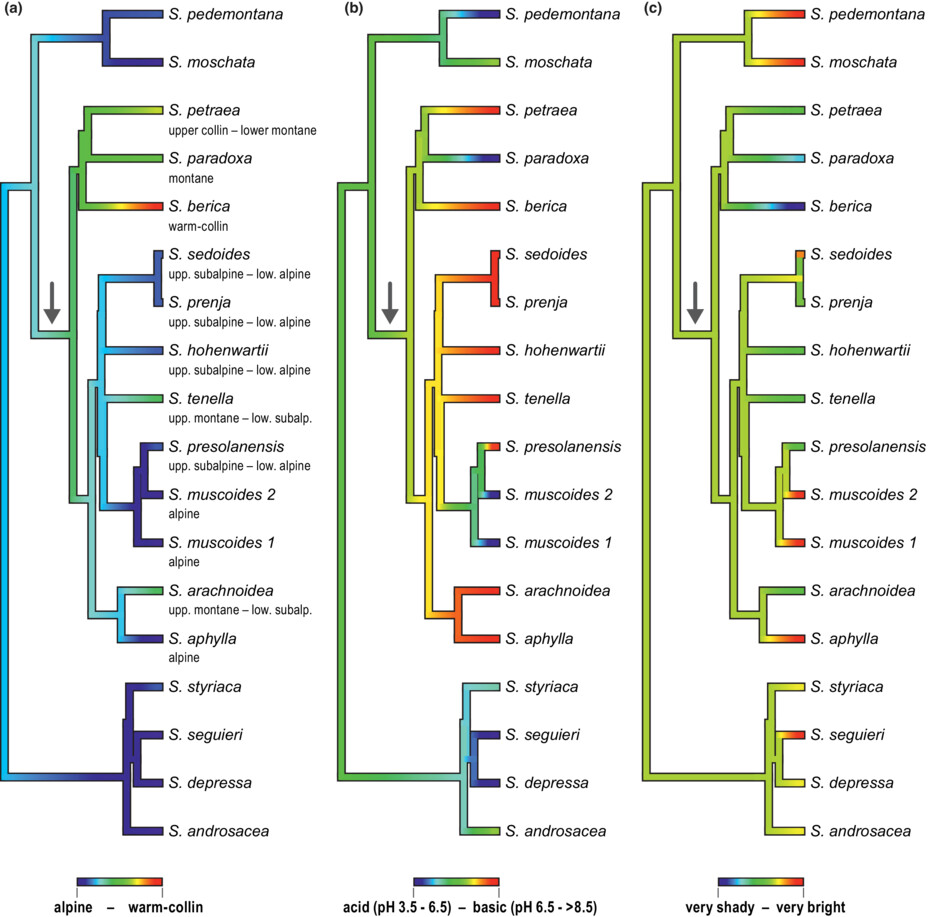
Saxifraga sect. Saxifraga subsect. Arachnoideae is unusual in terms of ecological diversification by containing both high elevation species from exposed alpine habitats and low elevation species from shady habitats. Based on phylogenetic relationships, the geographical distribution of species in relation to refugial areas in the Alps and a reconstruction of ecological preferences we hypothesize that low light requirements evolved when species persisting in cold-stage refugia were forced into marginal habitats by more competitive warm-stage vegetation.
Enhancing structural complexity: An experiment conducted in the Black Forest National Park, Germany
- First Published: 09 January 2023
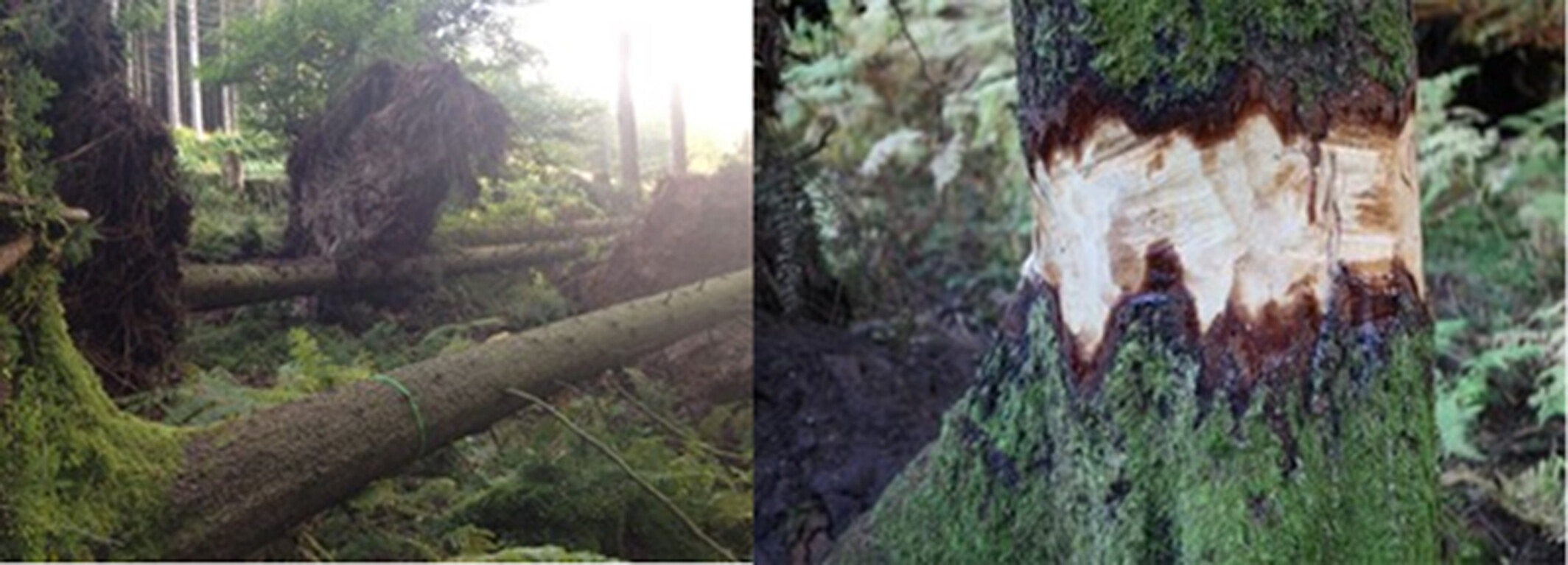
Here we report about the forest structural changes brought about by a strcutural complexity enhancement approach in secondary spruce stands in the Black Forest National Park. Five years after the initial treatment (toppling and ring-barking of some trees), the dead wood volume and tree-related microhabitats had significantly increased in the treated plots. Subsequent studies will show how this treatment has influenced species richness and diversity of a range of taxonomic groups.
Post-translocation dynamics of black-tailed prairie dogs (Cynomys ludovicianus): A successful conservation and human–wildlife conflict mitigation tool
- First Published: 09 January 2023
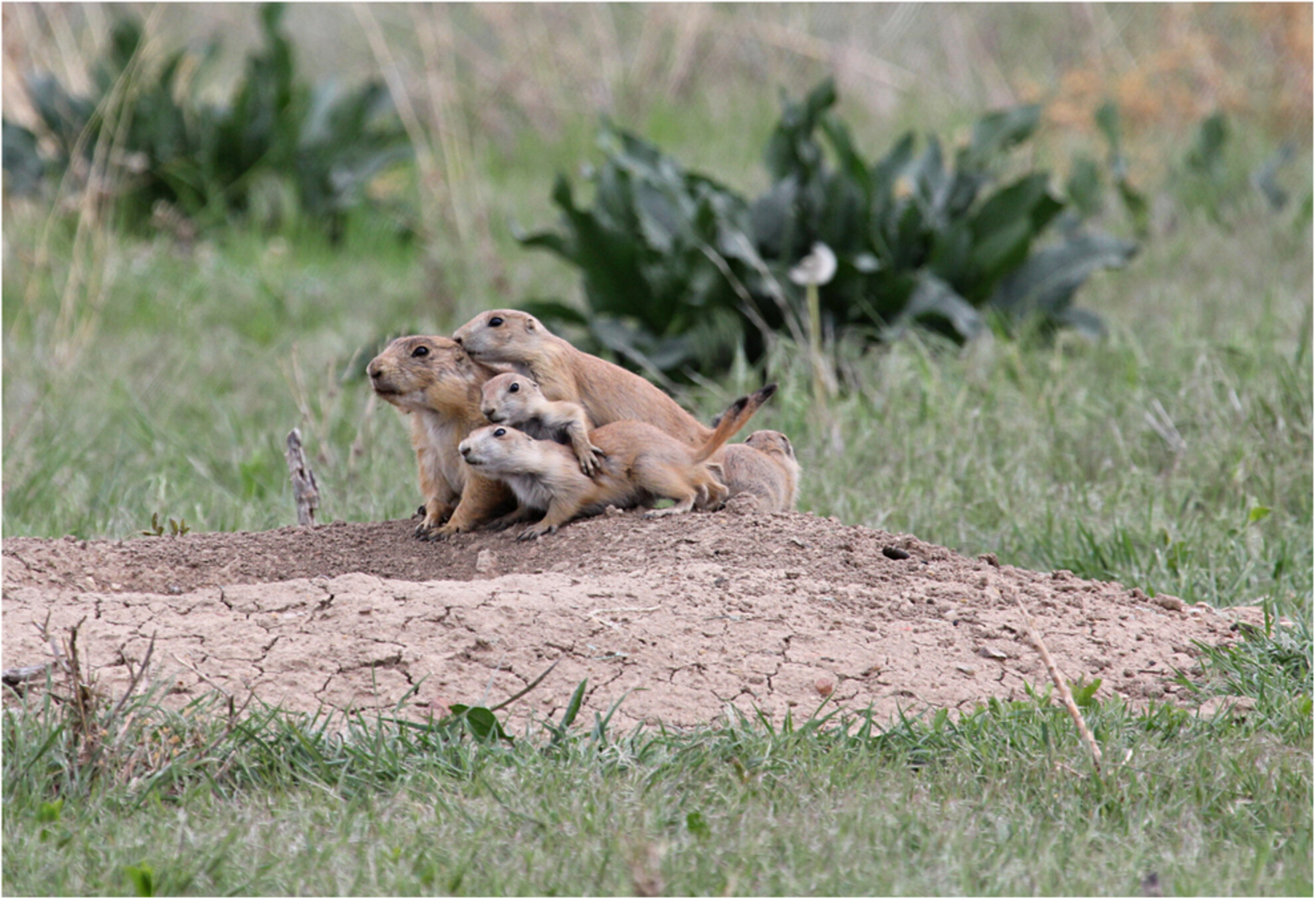
Prairie dogs have declined by 98% throughout their range in the grasslands of North America. We successfully translocated black-tailed prairie dogs into augered burrows and soft released within presumed coteries to reestablish colonies in previously occupied habitat. Prior to establishing new territories, prairie dogs made greater initial movements then expected demonstrating that while translocating prairie dogs may be socially disruptive initially, it is an important conservation tool.
Geothermal stickleback populations prefer cool water despite multigenerational exposure to a warm environment
- First Published: 10 January 2023

We tested whether sticklebacks from geothermally-warmed lakes prefer a higher water temperature in the laboratory than sticklebacks from ambient-temperature lakes. Surprisingly, we found that fish from both thermal habitats had an average preferred temperature of 13°C, which is considerably lower than the temperatures experienced by fish in warm habitats for most of the year. Our results challenge the assumption that there will be a shift in ectotherm temperature preferences in response to climate change and suggest that preferred temperature alone may be a poor indicator of a population's adaptive potential to a novel thermal environment.
Rapid evolution of a bacterial parasite during outbreaks in two Daphnia populations
- First Published: 16 January 2023
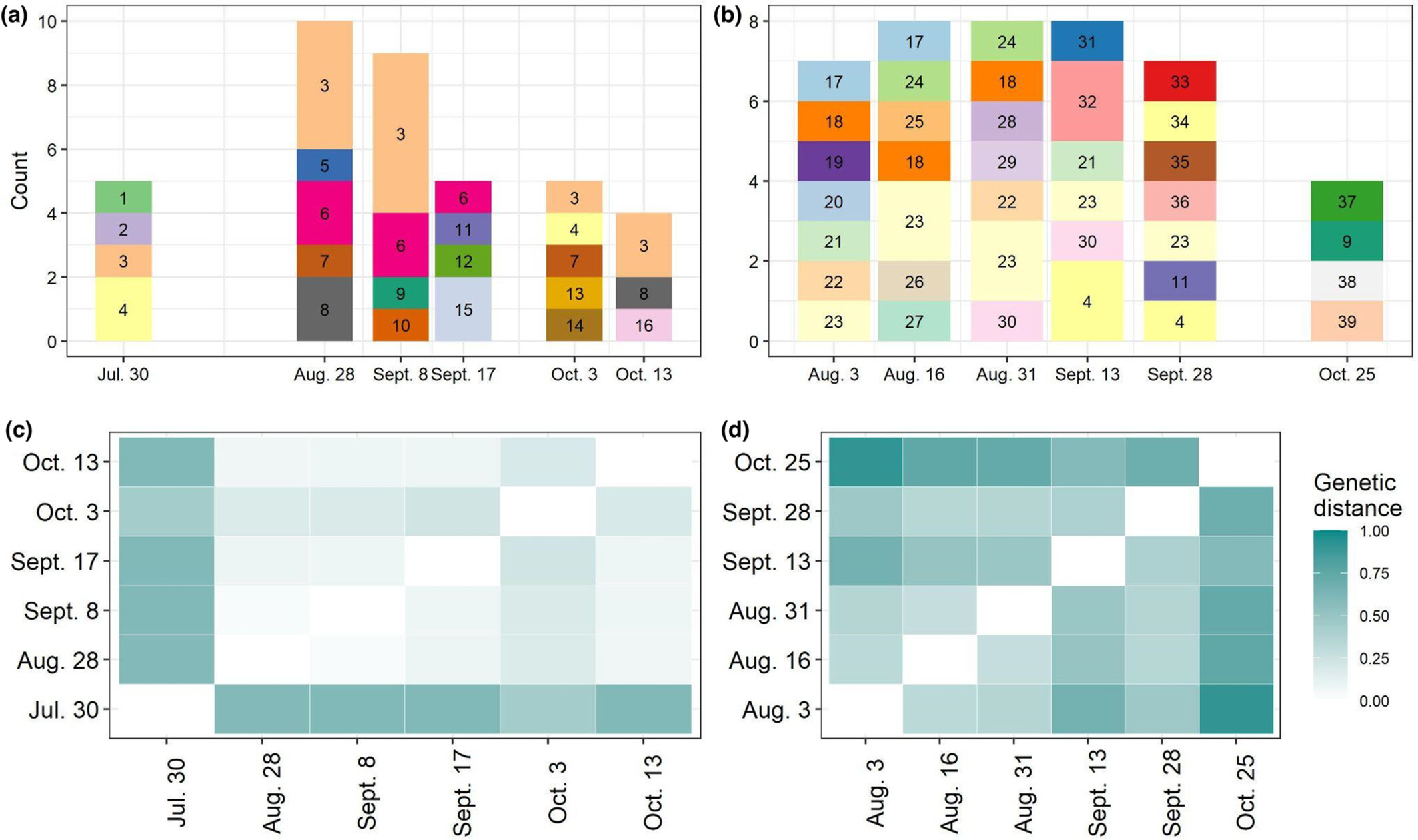
We examined the genetic structure and diversity of the parasite Pasteuria ramosa in two natural outbreaks using variable number tandem repeats to genotype the parasite in infected Daphnia dentifera hosts. We found evidence for parasite evolution within these outbreaks: the genetic distance between sampled parasite genotypes infecting hosts increased with time between sampling, but with notable differences between the two lakes. Although genotype diversity remained flat over time in both outbreaks, it was significantly higher in the lake with the smaller outbreak. This work is valuable for understanding evolution and patterns of parasite genetic diversity within outbreaks.
Ecological constraint, rather than opportunity, promotes adaptive radiation in three-spined stickleback (Gasterosteus aculeatus) on North Uist
- First Published: 10 January 2023
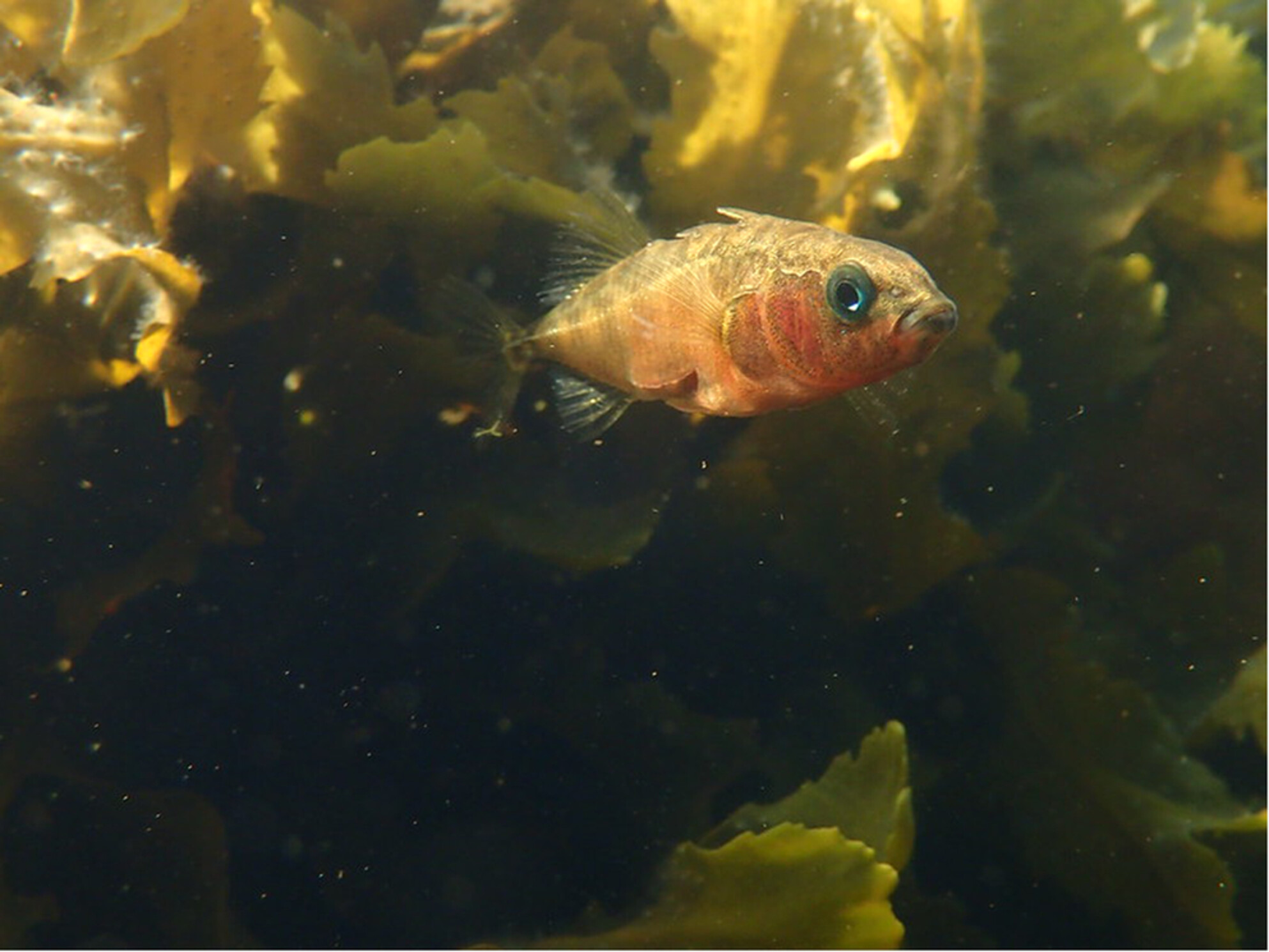
Evolutionary diversification is often thought to arise from “ecological opportunity:” A reduction in competition for resources following the invasion of a new habitat. Here, we show that diversification may be provoked by ecological constraint: Organisms invading habitats, in this case, acid freshwater, may be free from competition but have poor resource availability.
Wind-energy development alters pronghorn migration at multiple scales
- First Published: 10 January 2023
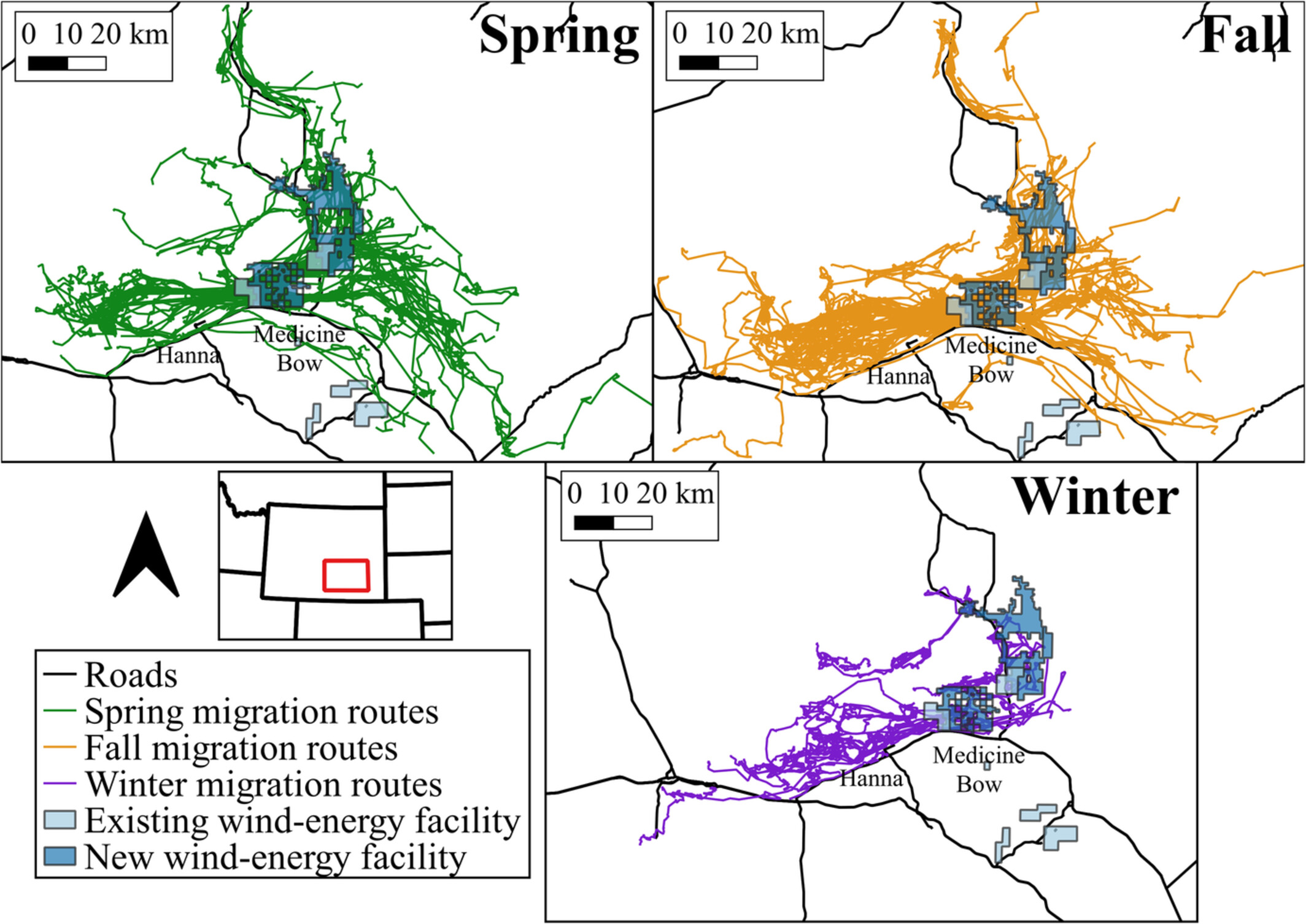
Wind energy is the world's fastest growing source of electricity and represents an important alternative to hydrocarbon extraction, but its effects on migratory species beyond birds and bats are not well understood. We found that while connectivity was not lost and pronghorn continued to migrate through wind-energy facilities, pronghorn made important behavioral adjustments relative to turbines during migration. These included avoiding turbines when selecting stopover sites, selecting areas farther from turbines at a small scale, moving more quickly near turbines in the spring, and reducing fidelity to migration routes relative to wind turbines under construction.
Density-habitat relationships of white-tailed deer (Odocoileus virginianus) in Finland
- First Published: 10 January 2023
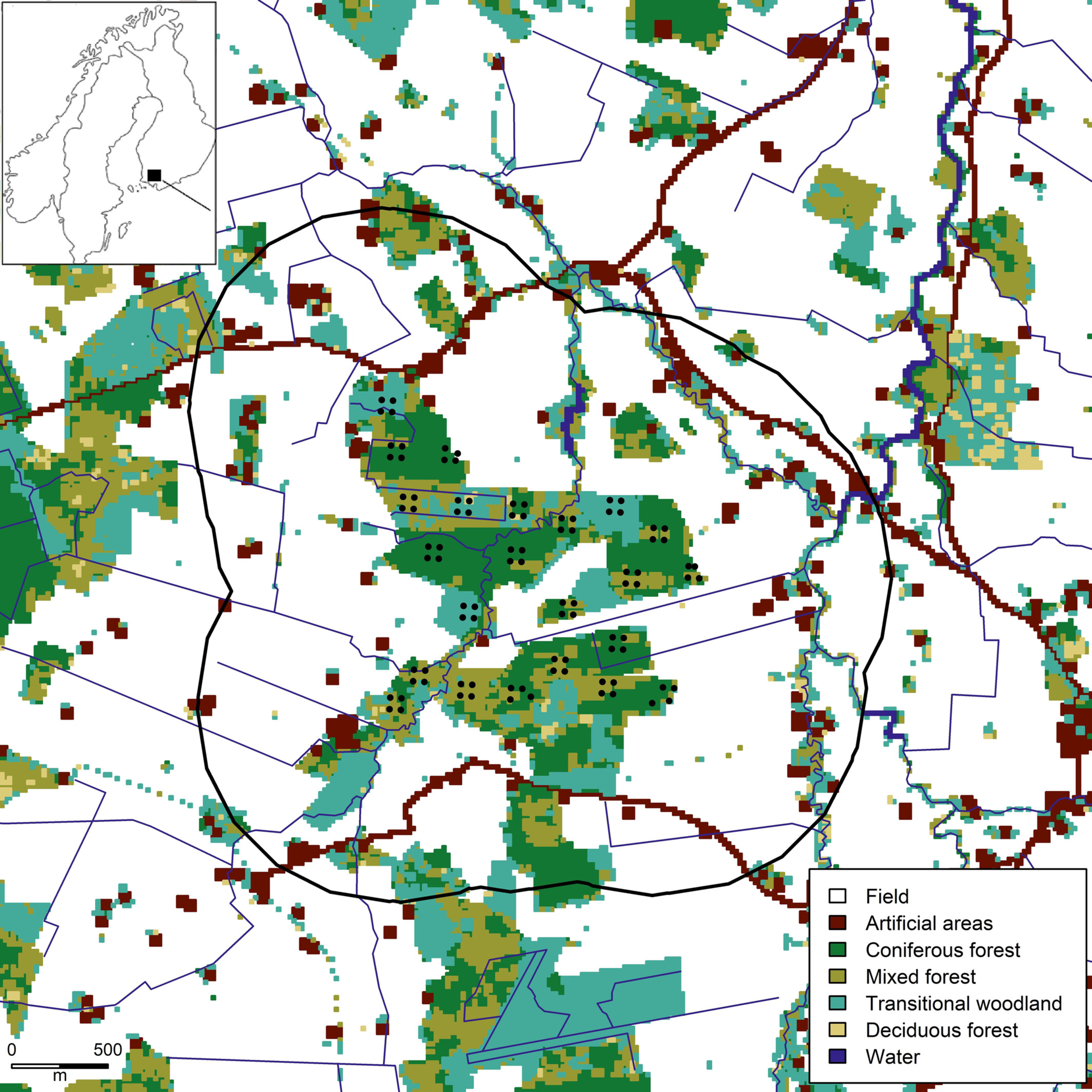
In heterogeneous landscapes, resource selection constitutes a crucial link between landscape and population-level processes such as density. We studied factors influencing white-tailed deer density and space use in Finland by using non-invasively collected fecal DNA samples and Spatial Capture-Recapture modeling. Here, we underlined the importance of incorporating habitat covariates when estimating density and exemplify that resource selection can be studied using non-invasive methods.
Rapid eco-phenotypic feedback and the temperature response of biomass dynamics
- First Published: 10 January 2023
Like a rolling stone: Colonization and migration dynamics of the gray reef shark (Carcharhinus amblyrhynchos)
- First Published: 10 January 2023
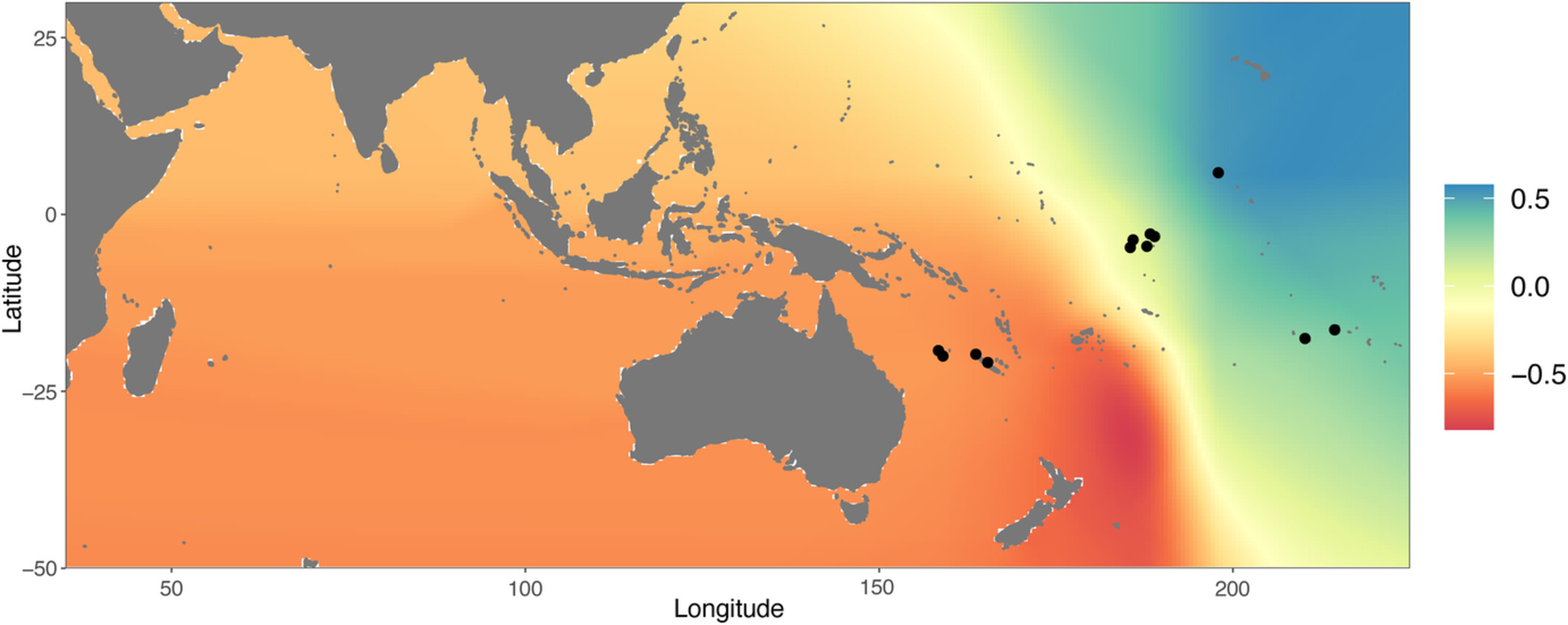
Carcharhinus amblyrhynchos is an endangered Indo-Pacific reef shark, which shows reef fidelity but long-distance movements, raising questions about connectivity patterns and the extent of conservation units. Using genomic data, we show that it has undergone a range expansion from the Indo-Australian Archipelago (IAA) and is organized as a meta-population characterized by homogeneous connectivity throughout its range. We highlight the low dependence of C. amblyrhynchos on reef availability and its ability to cross open sea expanses, which do not represent barriers to gene flow, contrasting with the sympatric Carcharhinus melanopterus, whose dispersal is strictly dependent on local reef distribution. Conversely, both species share similar range expansion dynamics, suggesting a major importance of the IAA as a source of biodiversity for reef sharks.
Optimization of the “in-silico” mate-pair method improves contiguity and accuracy of genome assembly
- First Published: 11 January 2023
Nocturnal surveys of lined seahorses reveal increased densities and seasonal recruitment patterns
- First Published: 11 January 2023
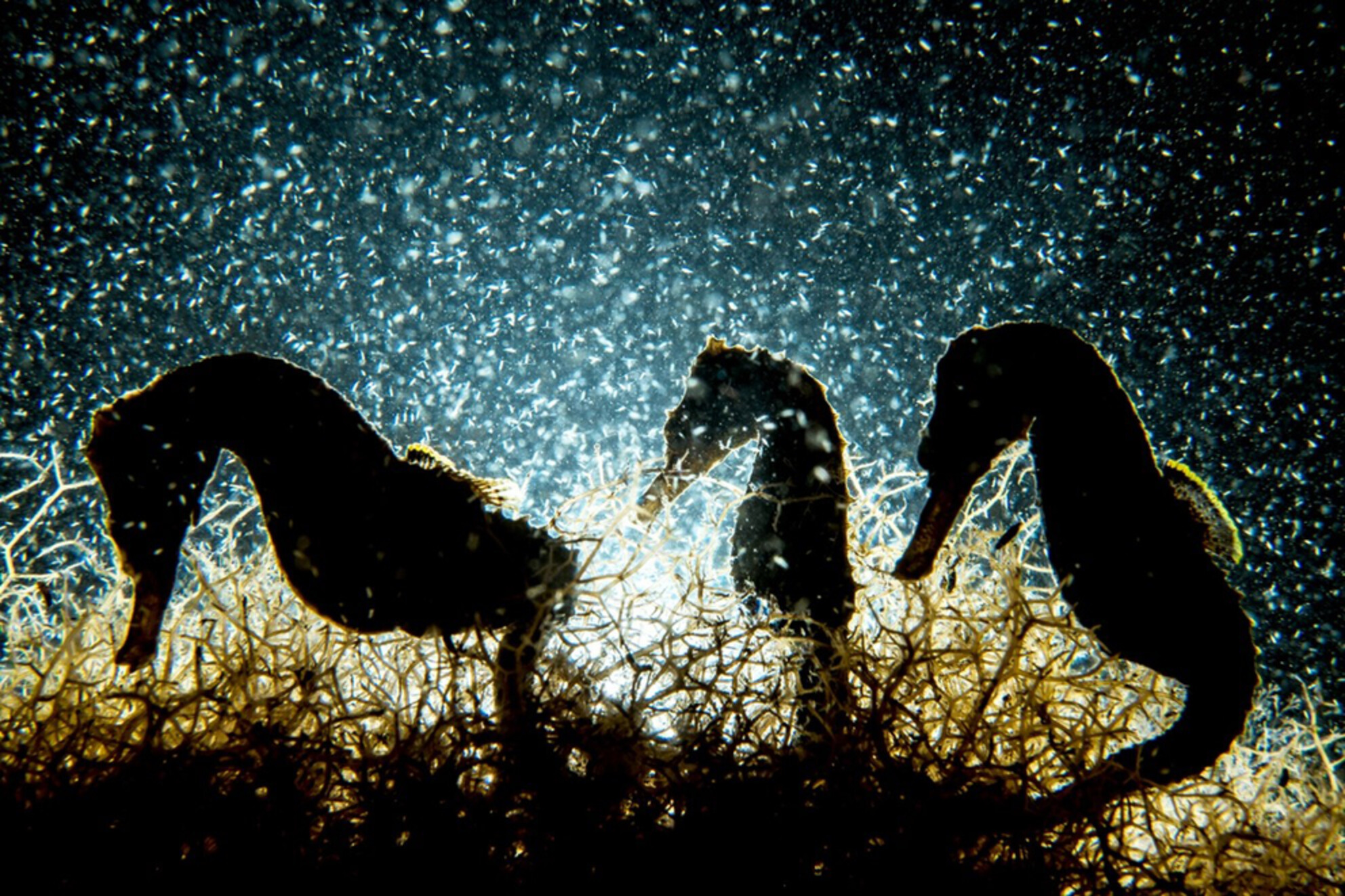
Night reveals lined seahorses from an isolated saltwater lake displaying behaviors previously undescribed when compared to daytime. Far more seahorses were observed at night compared with day, with evidence of nocturnal juvenile recruitment. We observed cryptic behaviors during the day and upright body posture and higher position in the water column at night. We investigated predators that may drive these behaviors, as potential predator density was also higher at night than during the day.
Variation in adult and pup wolf diets at natal den sites is influenced by forest composition and configuration
- First Published: 11 January 2023
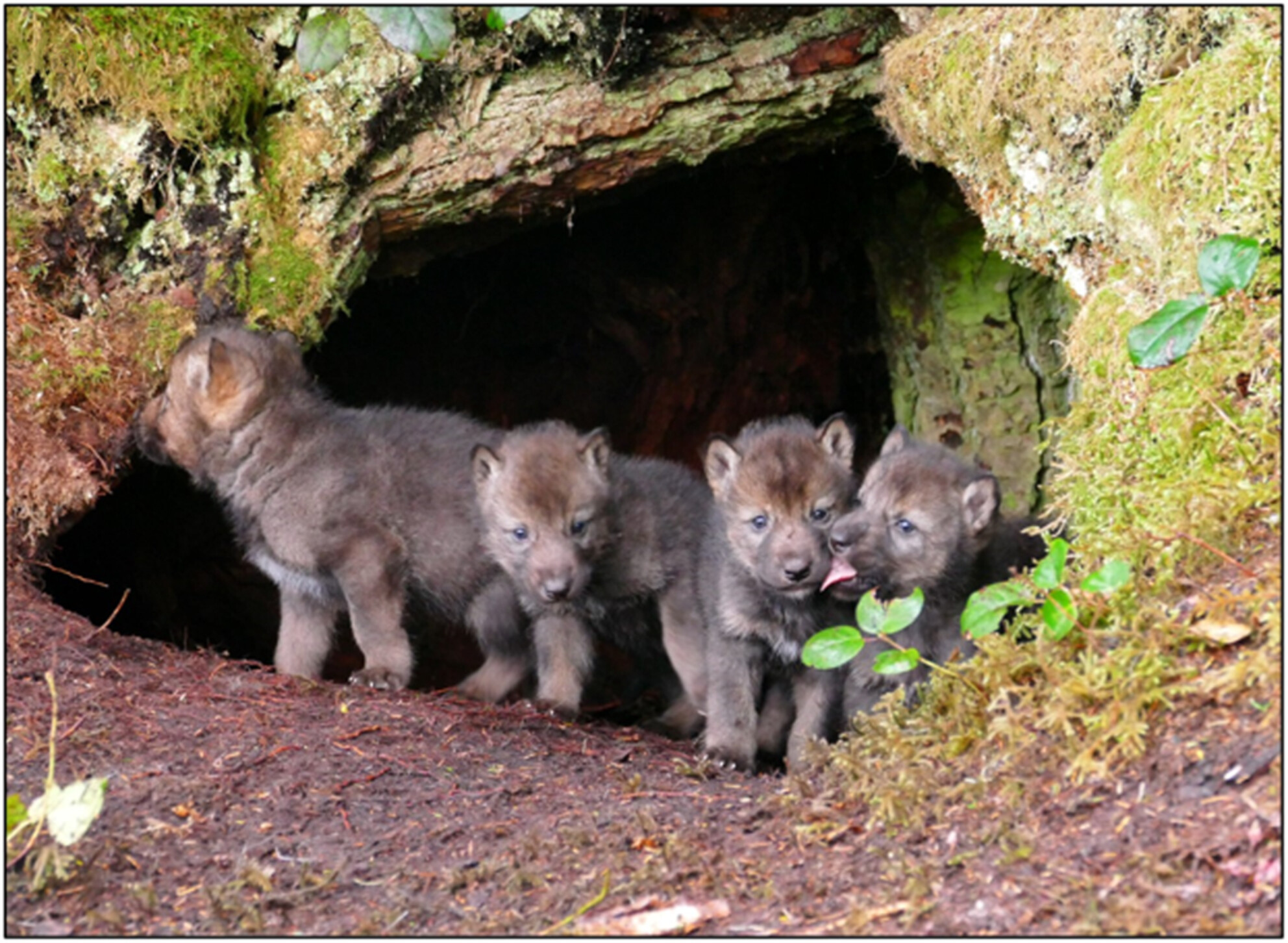
Despite demonstrated dietary plasticity throughout their life cycle, wolves had a narrow dietary niche during the denning season focused on Sitka black-tailed deer (Odocoileus hemionus sitkensis), and pups nearly exclusively consumed deer during their first 2 months of life. Wolf consumption of deer was influenced by the availability of early successional forest, closed logging road density, and forest patchiness, suggesting these habitat qualities were influential for increasing the availability of deer to wolves. The contribution of deer in wolf diets had a positive effect on litter size providing a link to wolf fitness.
Continent-wide evidence that landscape context can mediate the effects of local habitats on in-field abundance of pests and natural enemies
- First Published: 11 January 2023
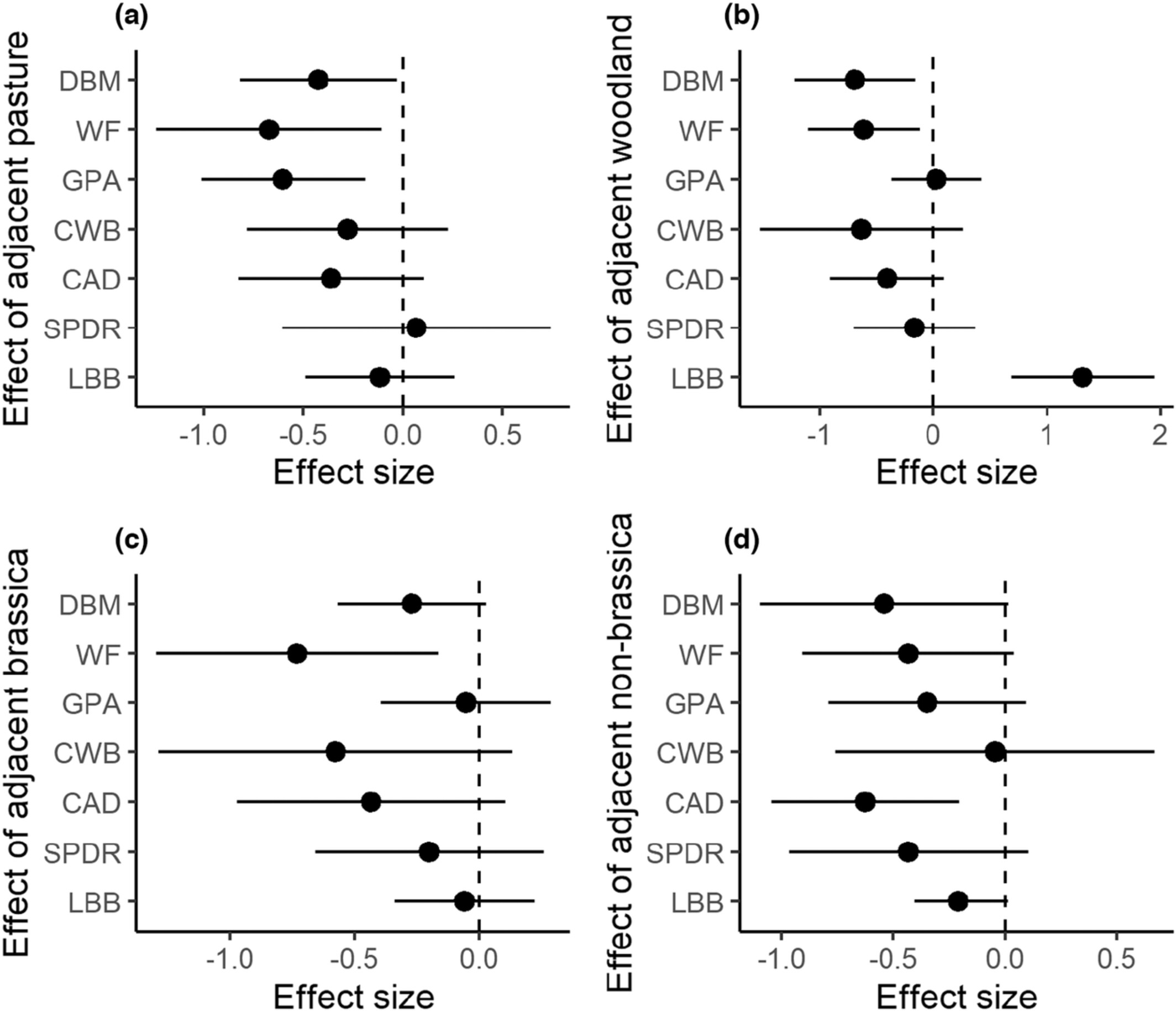
This article attempted to investigate the longer and shorter range effects of landscapes on the in-field abundance of pests and natural enemies in brassica vegetable fields. Although woody vegetation can enhance natural enemy abundance in the fields, the risk of these habitats in enhancing pest insects needs to be considered in the future pest management plan.
Tri-trophic interactions among Fopius arisanus, Tephritid species and host plants suggest apparent competition
- First Published: 11 January 2023
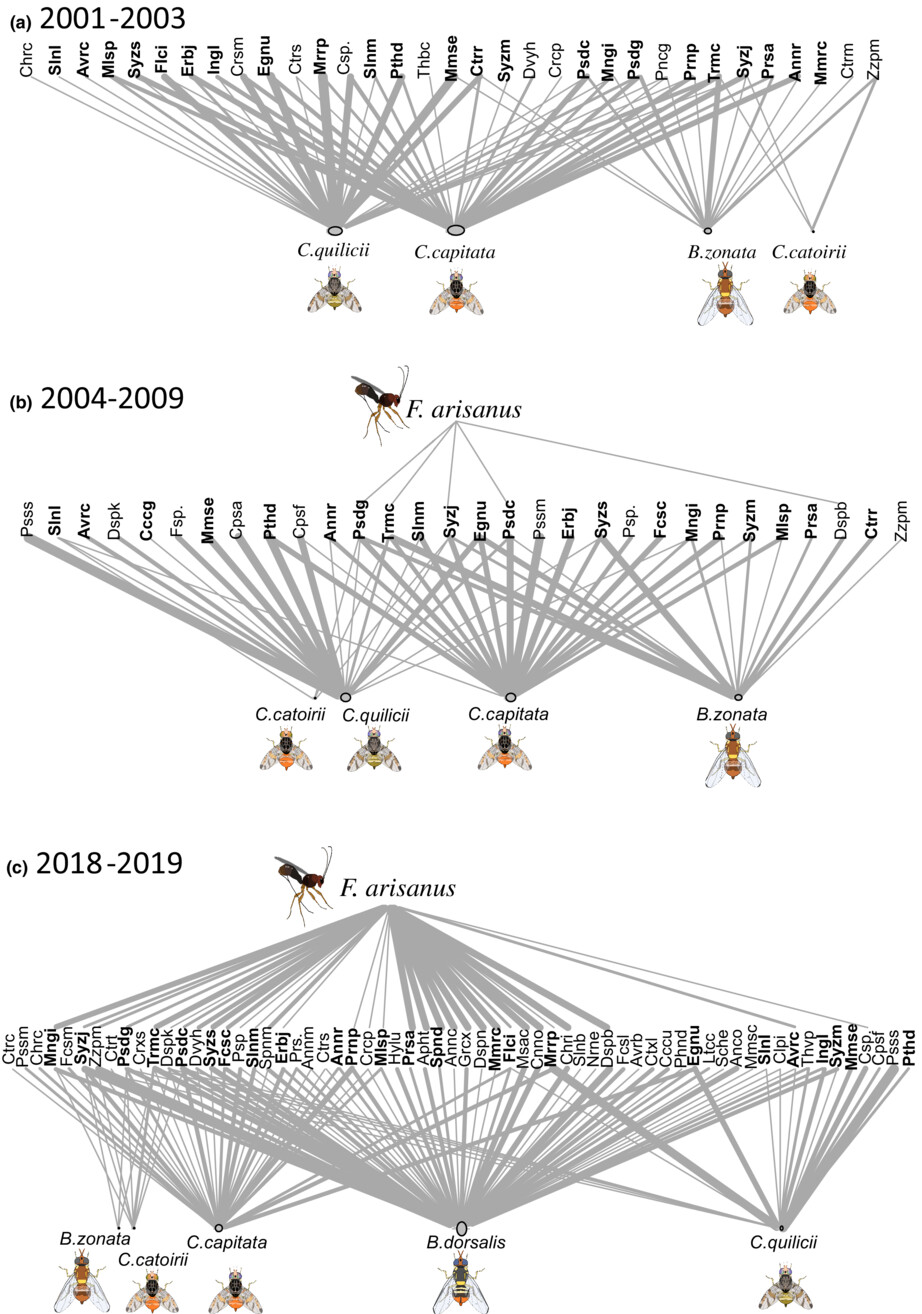
Our main objective was to characterize the tri-trophic interactions between Fopius arisanus, fruit fly and host plant species by long-term field database and laboratory assays. Results suggest a possible existence of apparent competition between Bactrocera dorsalis and Bactrocera zonata via F. arisanus.
Phylomorphometrics reveal ecomorphological convergence in pea crab carapace shapes (Brachyura, Pinnotheridae)
- First Published: 16 January 2023
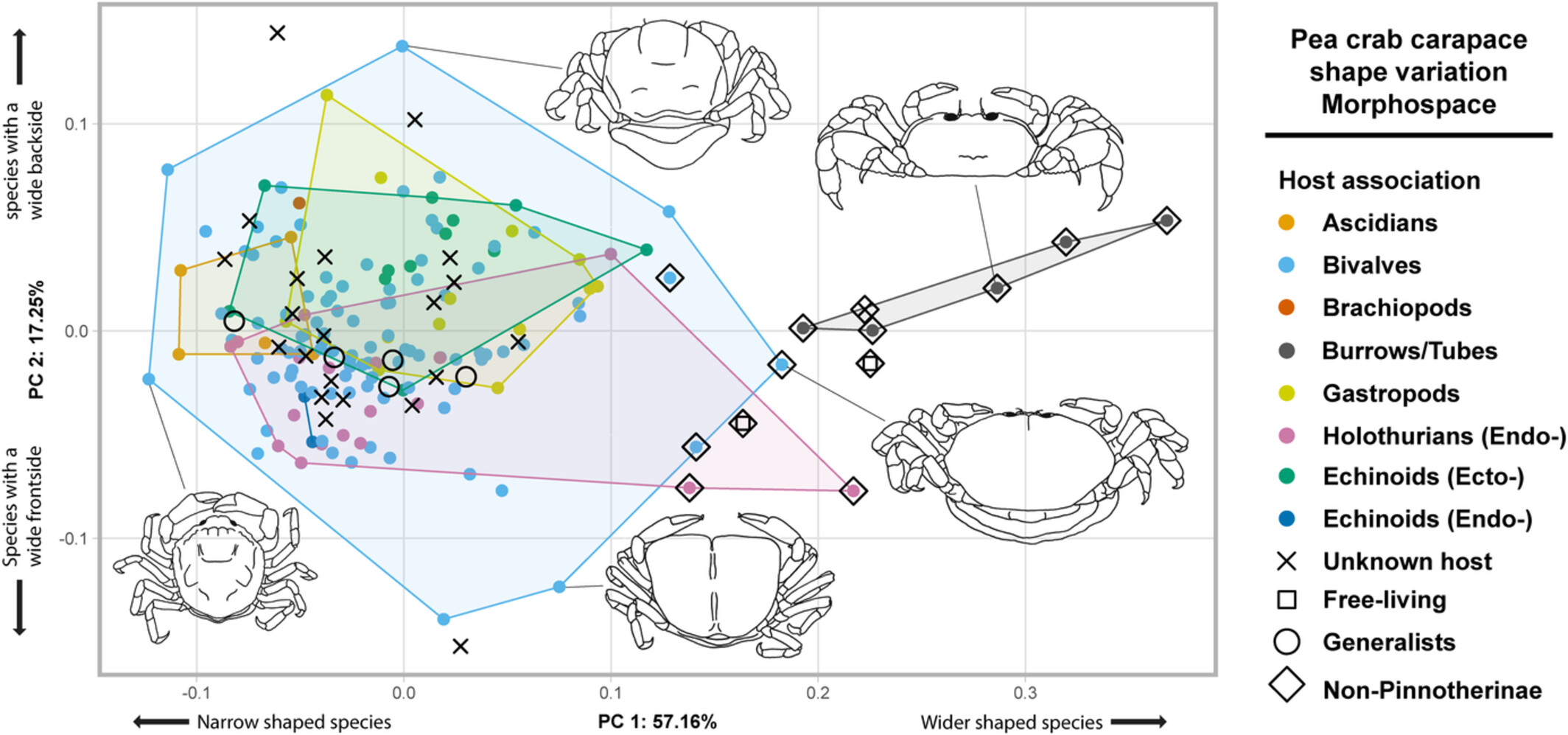
The speciose pea crab family is studied using landmark-based morphometrics. Mean carapace shapes of species groups, based on their host associations, are compared and visualized. Additionally, with the inclusion of a phylogeny, three morphological convergence events are studied and statistically tested in a phylomorphometric framework.
Determinants of departure to natal dispersal across an elevational gradient in a long-lived raptor species
- First Published: 16 January 2023
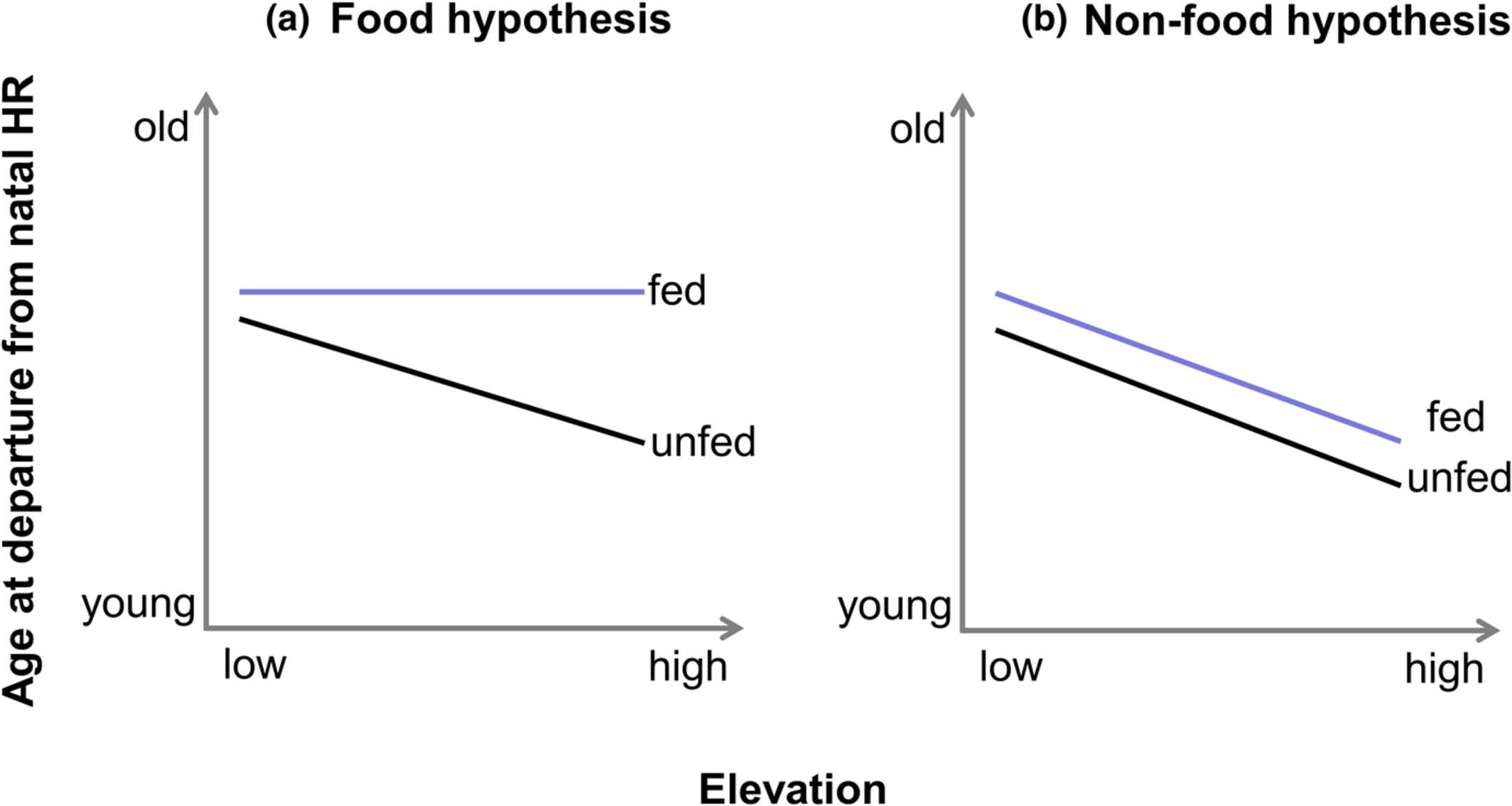
By conducting a food supplementation experiment, we aimed at disentangling food availability and co-varying elevational gradients affecting the onset of dispersal in juvenile red kites (Milvus milvus) along an elevational gradient toward the upper range margin. We found an effect of food supplementation and of breeding density on age at departure, as well as an elevational gradient in timing of breeding. We show that the elevational delay in breeding is compensated by premature departure resulting in an elevational gradient in departure age and therefore conclude that elevational differences in dispersal behavior likely arise due to climatic factors affecting timing of breeding.
Autumn fueling behavior in passerines in relation to migratory distance and daylength
- First Published: 16 January 2023
Breeding origins of a uniquely regular migrant songbird in the Galápagos Islands
- First Published: 16 January 2023
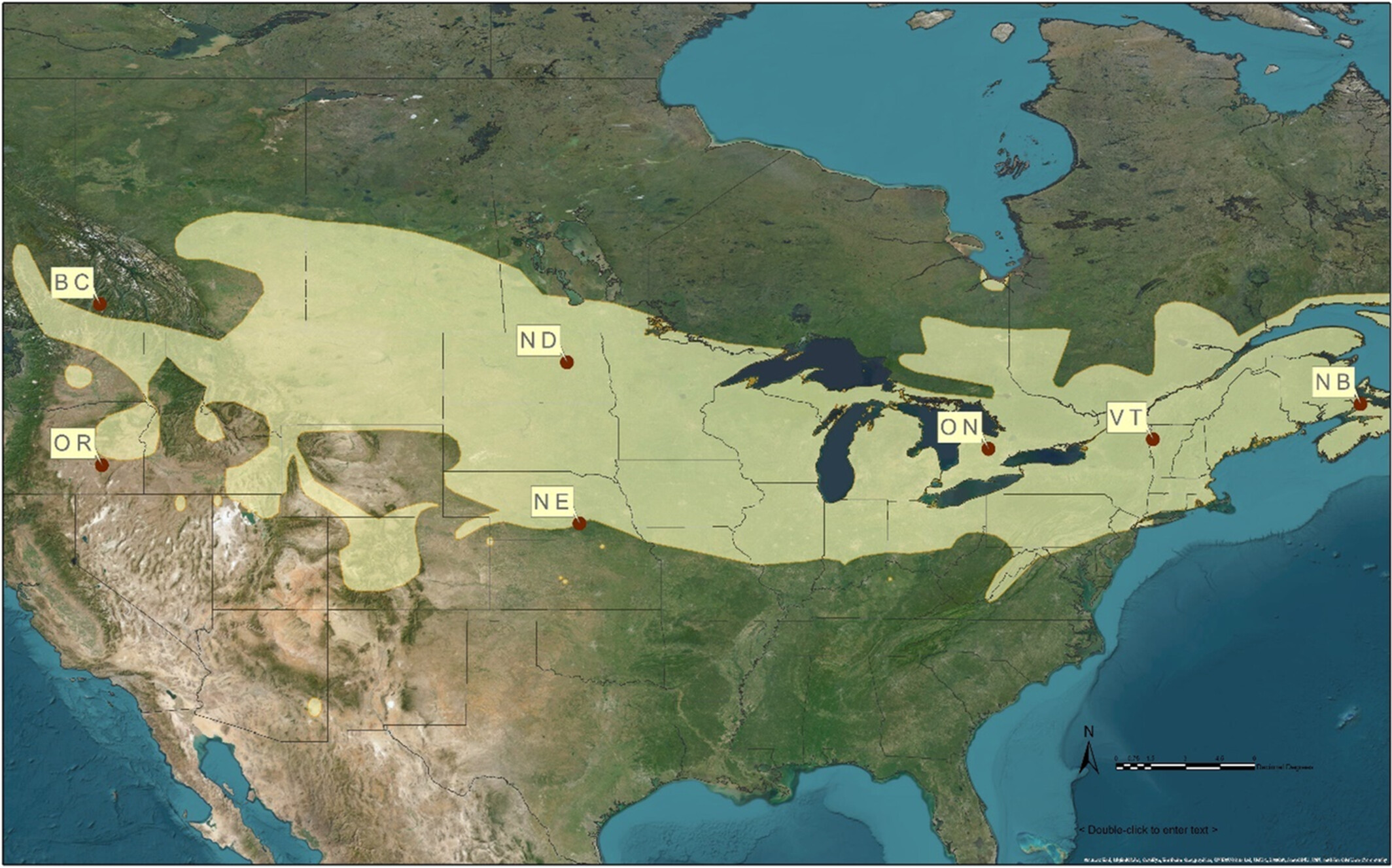
Little is known about the causes and consequences of alternative pathways flown by long-distance migratory birds. Using population genetic analyses, we compared samples from migratory Bobolinks stopping over in Galapagos with samples from seven locations across their breeding distribution to determine the migrant's breeding population of origin. Galapagos Bobolinks shared the genetic structure of a cluster in the eastern portion of the breeding range in North America that includes New Brunswick, Vermont, and Ontario.
Population genetics of the African snakehead fish Parachanna obscura along West Africa's water networks: Implications for sustainable management and conservation
- First Published: 16 January 2023
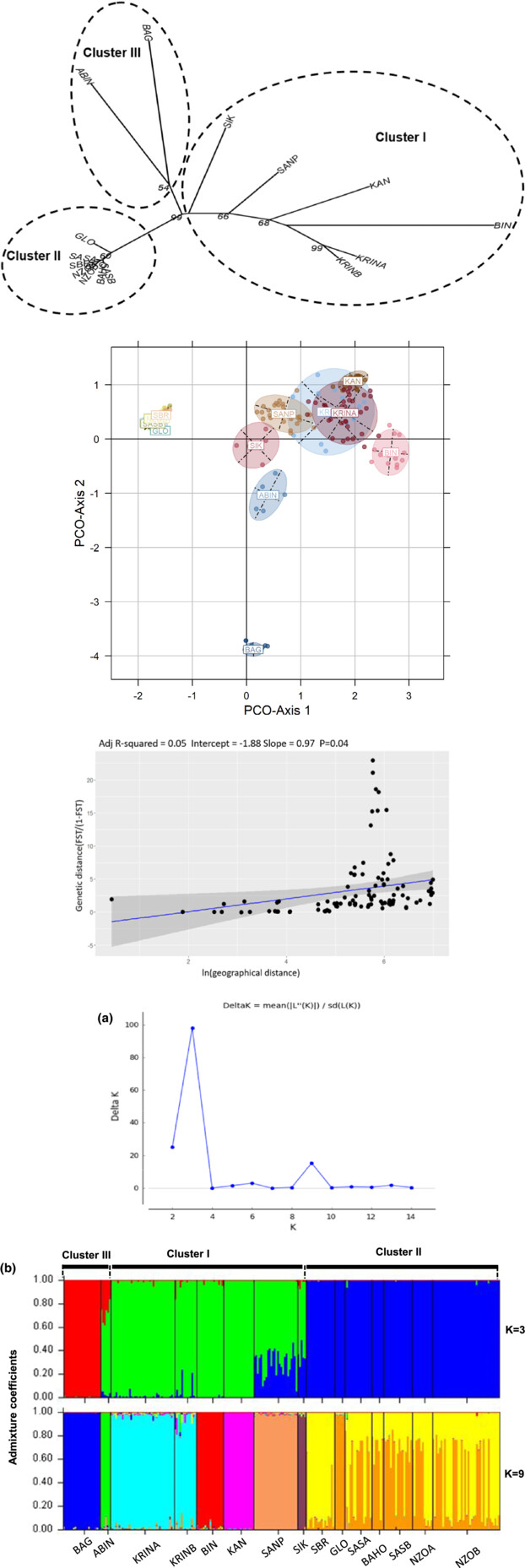
The long geological history of Africa may induce stronger among-population divergence and lower within-population divergence in fish populations of African watersheds. The study developed a set of 21 highly polymorphic microsatellite markers suitable for the analysis of genetic diversity among Parachanna obscura. We found relatively low intragenetic diversity and high genetic differentiation, resulting in limited gene flow, a dominance of local adaptation processes and an allopatric development in watersheds without hydraulic connectivity.
Comparative analysis of chloroplast genomes of endangered heterostylous species Primula wilsonii and its closely related species
- First Published: 16 January 2023
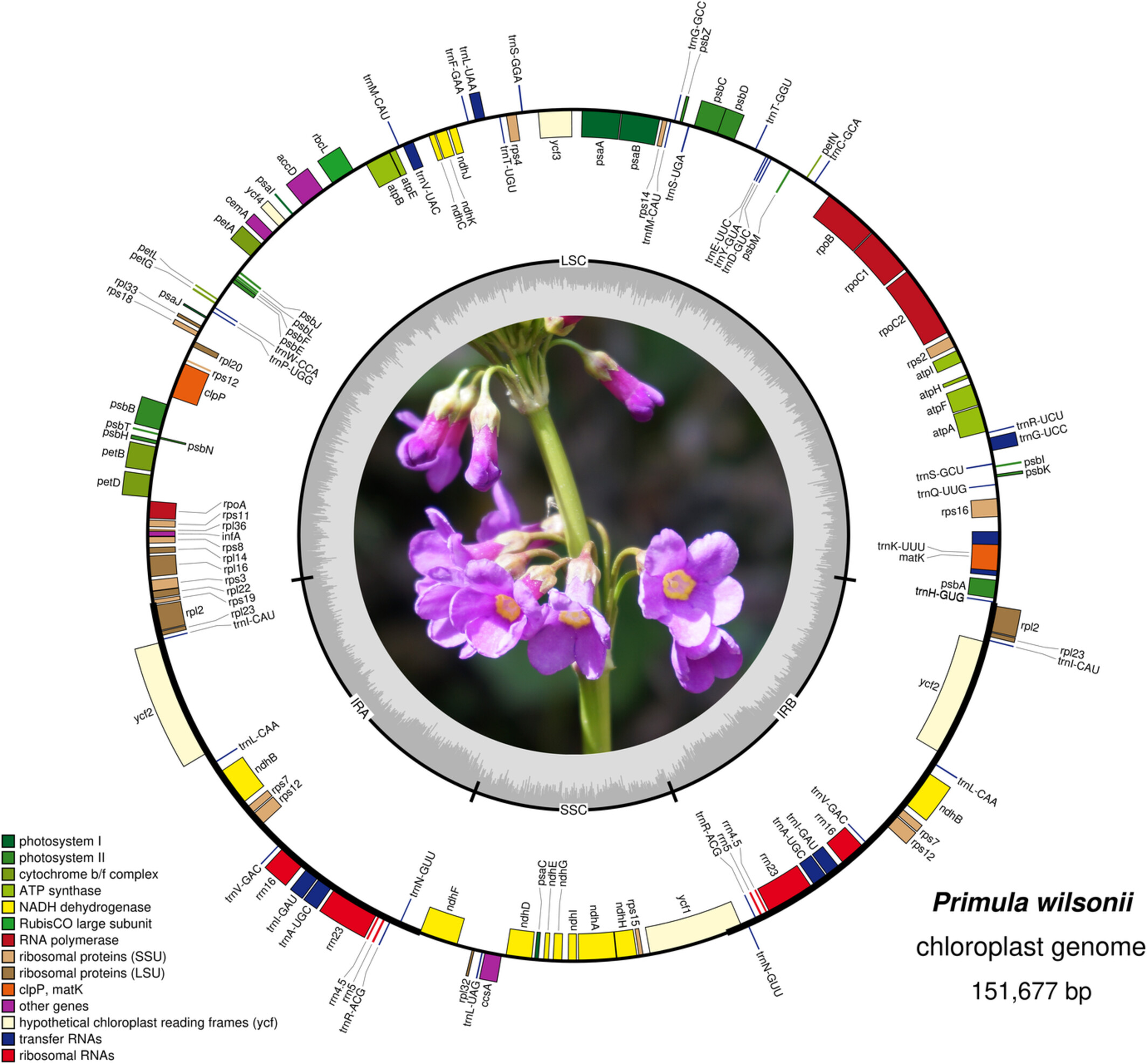
The study concentrated on the comparison of chloroplast genomes between a PSESP (plant species with extremely small populations) species and its closely related species in the genus Primula. The polymorphic repeat sequences were detected which could be used for further studies of Primula species. Furthermore, the phylogenetic relationships of Chinese Primula were conducted using chloroplast sequences.
Topoclimate effect on treeline elevation depends on the regional framework: A contrast between Southern Alps (New Zealand) and Apennines (Italy) forests
- First Published: 16 January 2023
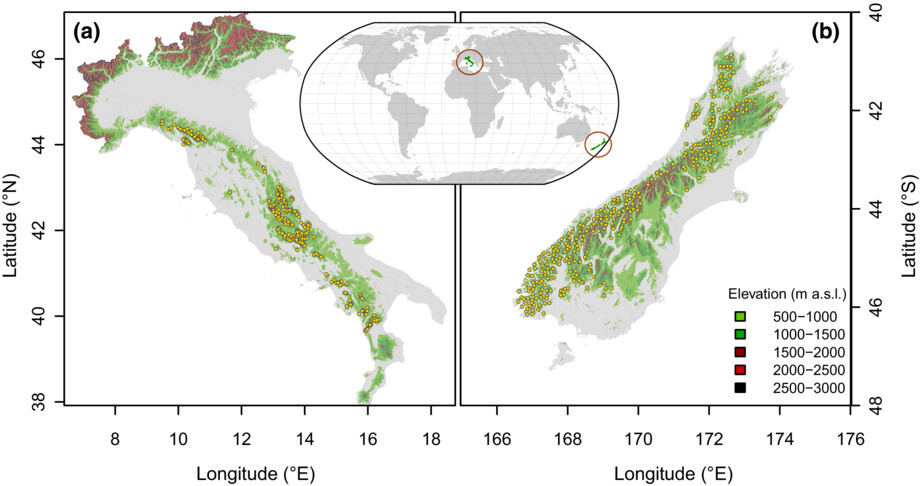
The major difference between the Southern Alps and Apennines treeline limit is associated with their mountain aspects. Contrary to what would be expected based on temperature limitation, the elevation of F. sylvatica treelines in the Apennines was higher on colder, pole-facing slopes than on equator-facing, warmer mountainsides. While the position of the Fagus and Nothofagus treelines converge on similar isotherms of annual average temperature, a striking isothermal difference between the treelines concerning the temperatures of the hottest month on which the two taxonomic groups grow exists. We conclude that actual treeline elevation reflects the ecological processes driven by a combination of local-scale topoclimatic conditions, and human disturbance legacy.
The diversity of resident passerine bird in the East Yunnan-Kweichow Plateau is closely related to plant species richness, vertical altitude difference and habitat area
- First Published: 17 January 2023
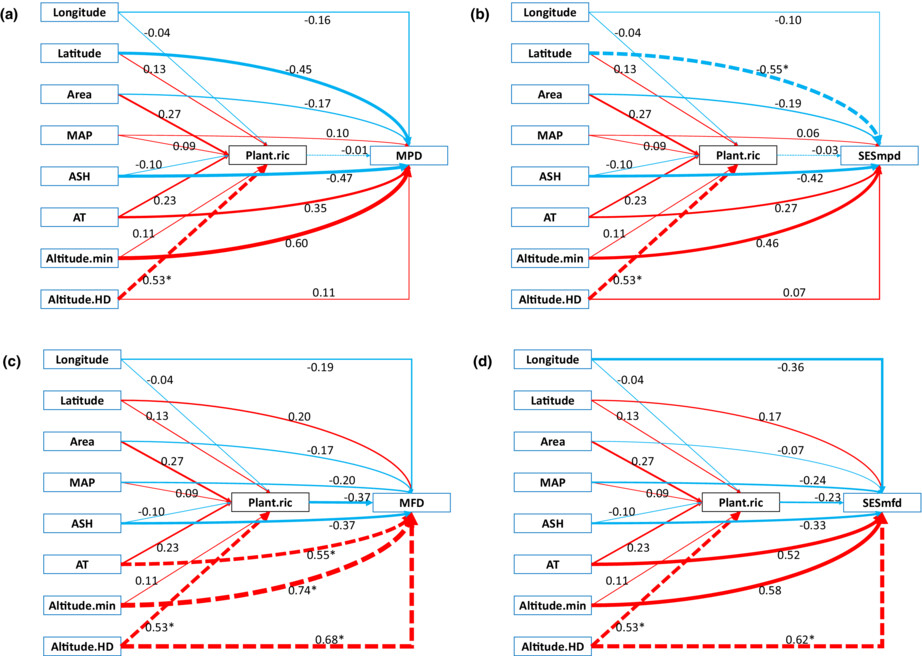
The bird diversity in the East Yunnan-Kweichow Plateau was analyzed on a large spatial scale for the first time. The distribution pattern and main influencing factors of bird diversity in East Yunnan-Kweichow Plateau were analyzed from three dimensions: taxonomic diversity, phylogenetic diversity, and functional diversity. This paper preliminarily revealed that the main driving factors of the spatial distribution of bird diversity in the East Yunnan-Kweichow Plateau were plant species richness, vertical elevation difference, and habitat area. Structural equation model (SEM) was used for data analysis in this paper.
Nested singletons in molecular trees: Utility of adding morphological and geographical data from digitized herbarium specimens to test taxon concepts at species level in the case of Casearia (Salicaceae)
- First Published: 17 January 2023
Domestication provides durum wheat with protection from locust herbivory
- First Published: 17 January 2023
Identification of runs of homozygosity in Western honey bees (Apis mellifera) using whole-genome sequencing data
- First Published: 17 January 2023
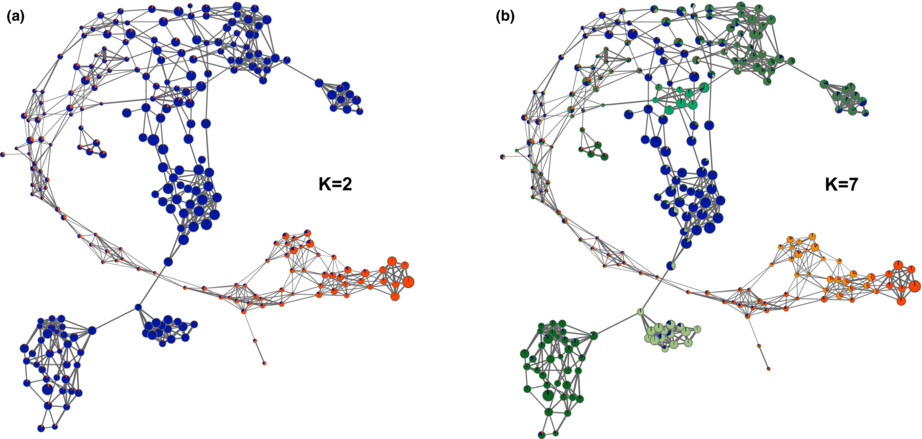
Past genetic diversity analyses in honey bees especially focused on drone genomes, as their haploid nature facilitated cost-efficient whole-genome sequencing. To substantially improve the quality of population structure analyses in honey bees we have used reconstructed queen genotypes from pooled workers to identify runs of homozygosity (ROH) in 265 Western honey bee colonies, including two subspecies namely Apis mellifera mellifera and Apis mellifera carnica. We integrated individual ROH patterns and admixture levels in a high-resolution population network visualization, which allowed us to ascertain major differences between the two subspecies.
Breeding populations of Marbled Godwits and Willets have high annual survival and strong site fidelity to managed wetlands
- First Published: 18 January 2023
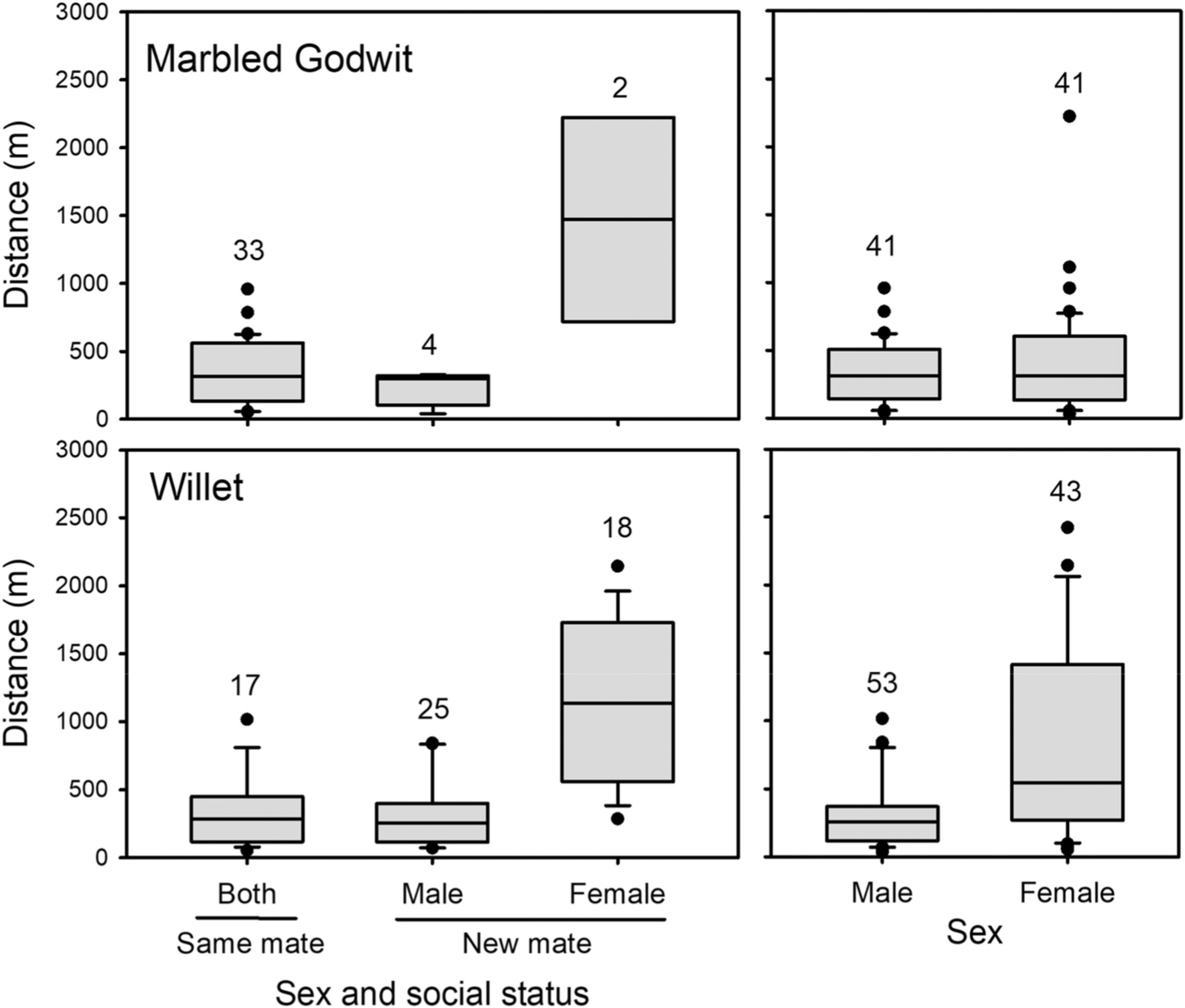
Demographic causes of population declines of wetland birds are poorly understood. We conducted a population study of Marbled Godwits and Willets breeding in southern Alberta. Annual survival rates were among the highest rates reported for any species of large-bodied shorebird. Site and mate fidelity were high for birds breeding in managed wetlands. Conservation plans for shorebirds should prioritize reducing exposure to anthropogenic losses because losses to collision or harvest are likely to cause additive mortality.
Museum specimens of a landlocked pinniped reveal recent loss of genetic diversity and unexpected population connections
- First Published: 18 January 2023
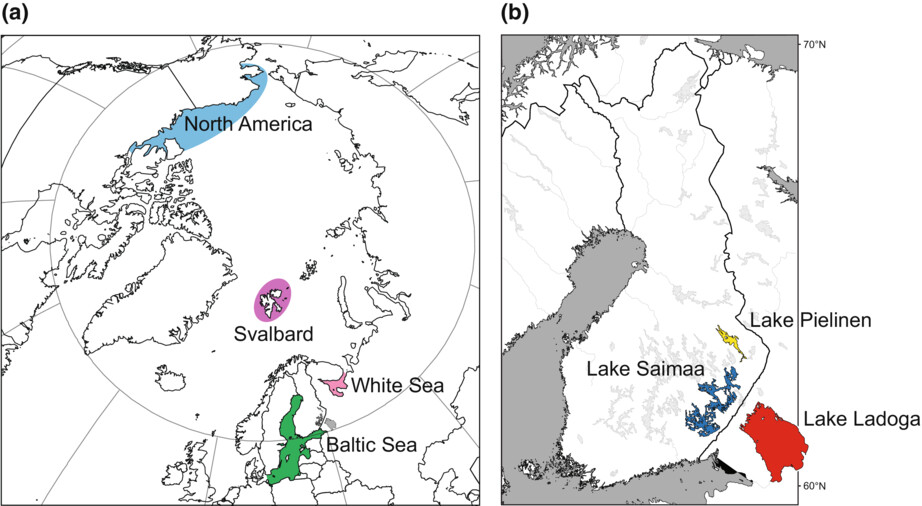
The Saimaa ringed seal, endemic to Lake Saimaa in Finland, is thought to have originated when parts of the ringed seal population of the Baltic region were trapped in lakes emerging due to postglacial bedrock rebound around 9000 years ago. By studying mtDNA from 60 up to 125-years-old museum specimens of the Saimaa ringed seal, we observed temporal fluctuations in haplotype frequencies and loss of haplotypes accompanied by a recent reduction in female effective population size, as well as surprising connections to North American ringed seals.
Macroinvertebrate diversity and ecosystem functioning across the eutrophication gradients of the middle and lower reaches of Yangtze River lakes (China)
- First Published: 18 January 2023
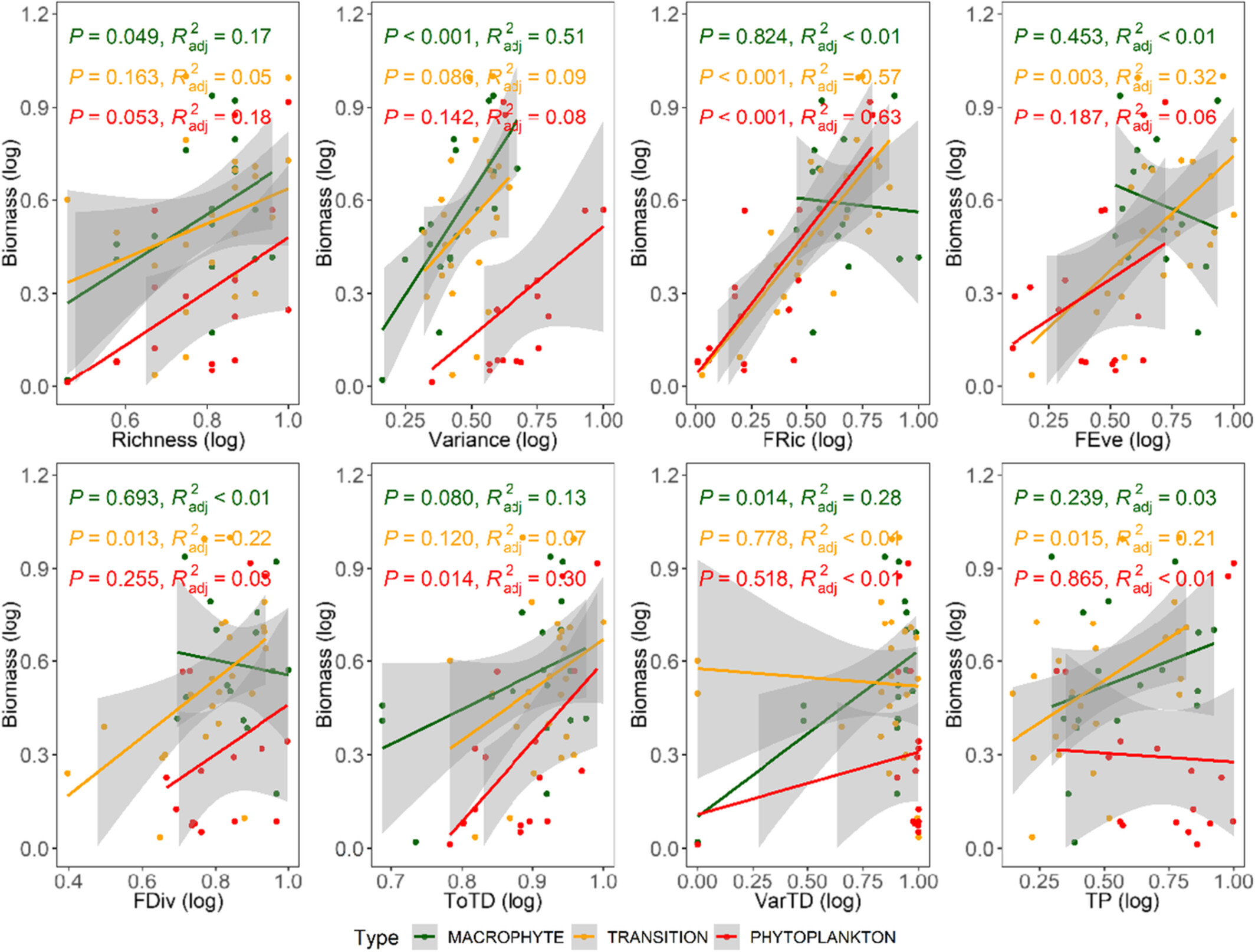
The relationship between macroinvertebrates diversity (species diversity, functional diversity, phylogenetic diversity) and macroinvertebrates biomass varied across eutrophication gradients. Macrophyte cover presence is important in maintaining macroinvertebrates diversity and biomass, while the relative abundance of macrophyte would change the biodiversity and ecosystem function (BEF) relationship. This study highlights the indispensable role of macrophytes in macroinvertebrates diversity, the dynamics of biomass, and the BEF relationship in Yangtze River lakes.
Pollinator and host sharing lead to hybridization and introgression in Panamanian free-standing figs, but not in their pollinator wasps
- First Published: 18 January 2023
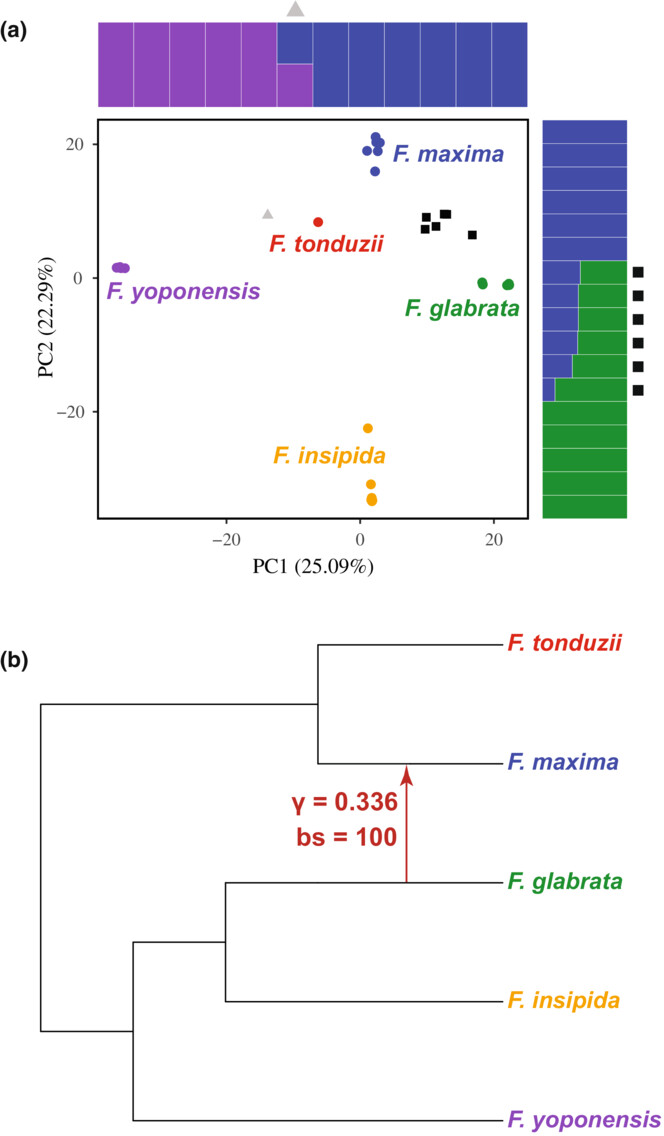
Deviations from strict host specificity in obligate pollination mutualisms provide opportunities for interspecific interactions between plant species, pollinator species, or both. We find fig–pollinator wasps to be well-delimited species, deeply divergent from one another, with no evidence for hybridization or introgression. By contrast, host fig species demonstrate hybridization in shallow time scales and introgression in deep time scales, suggesting different evolutionary processes shape diversification in the fig and fig wasp mutualism.
Trends in the direction of global plant invasion biology research over the past two decades
- First Published: 18 January 2023
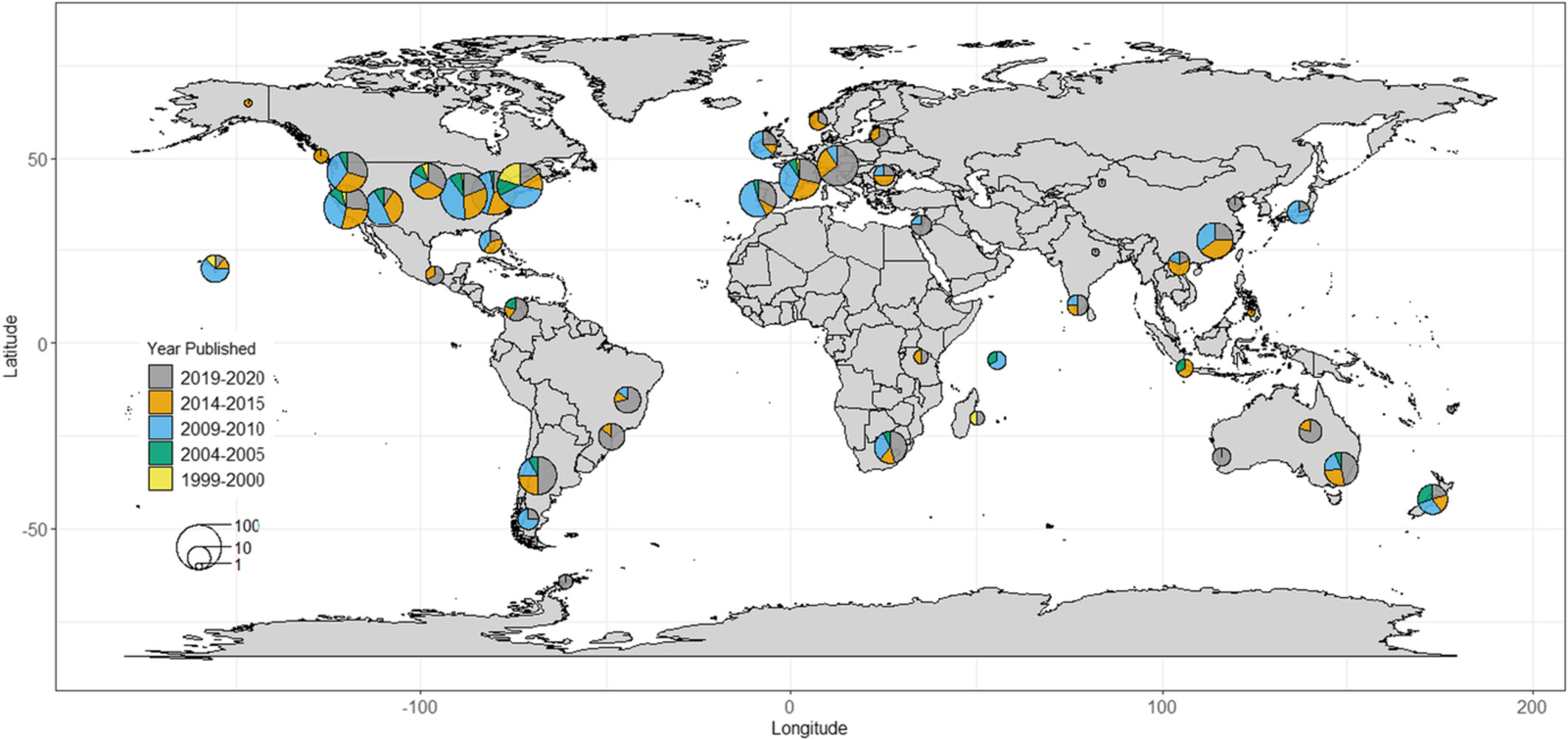
We analyzed 458 invasive plant papers sampled from two journals of invasion biology, Biological Invasions and Neobiota, across the past two decades. The analysis identified several trends and biases in invasion plant, and these findings help identify critically understudied areas of invasion plant biology worldwide, in particular within tropical ecosystems.
Patterns of stress response to foreign eggs by a rejecter host of an obligate avian brood parasite
- First Published: 18 January 2023
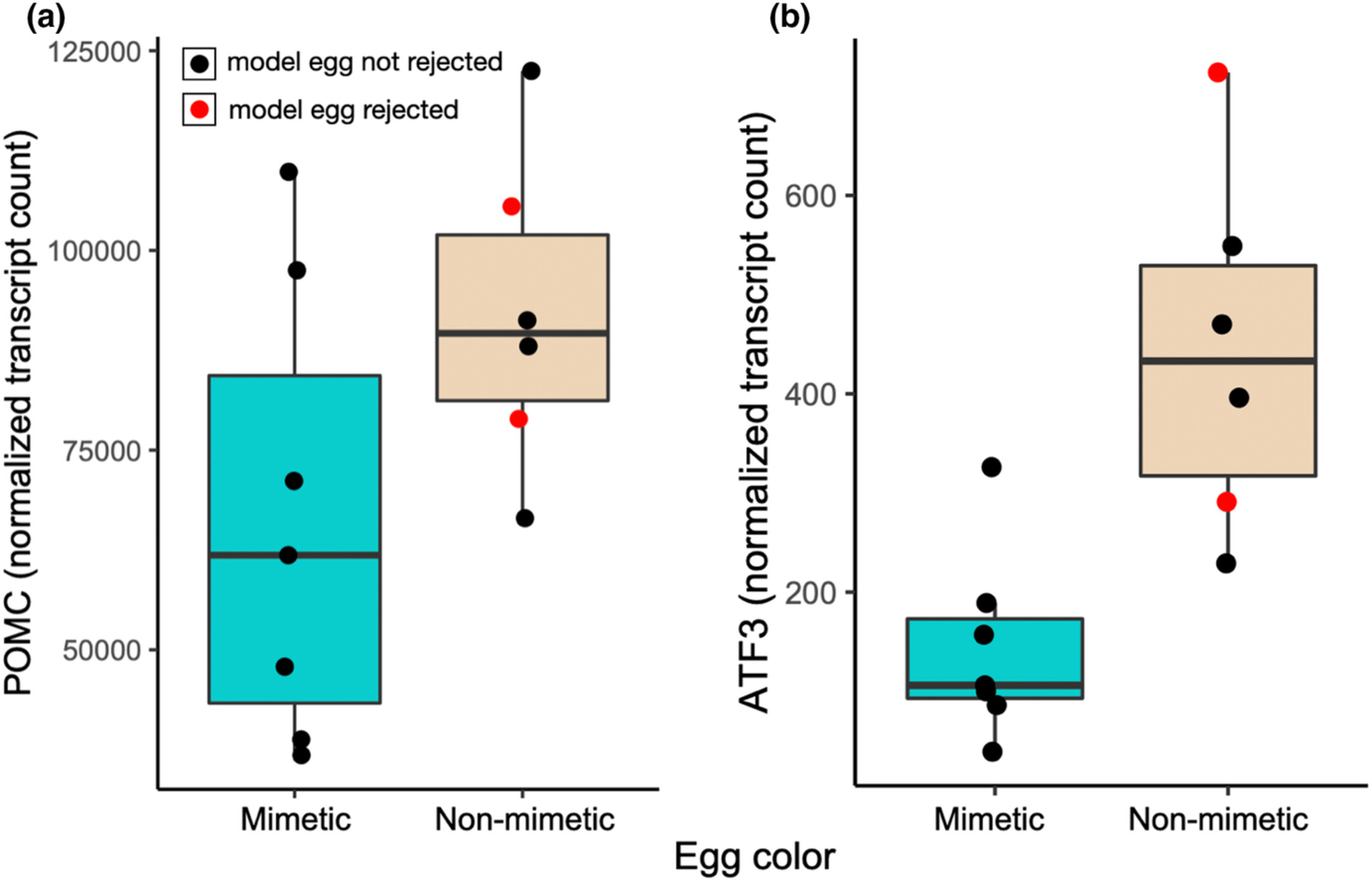
Stress-related signaling has been shown to mediate anti-parasitic behaviors in avian brood parasite hosts. Here we tested if brood parasite-like model eggs activated the hypothalamic–pituitary–adrenal (HPA) axis and autonomic nervous system compared with host-like model eggs. We show that, compared with experimental parasitism with mimetic eggs, parasitism with nonmimetic eggs does not affect blood corticosterone or heart rate, but that exposure to parasitic eggs may increase the expression of POMC gene, a precursor to ACTH, a central hormone in the HPA axis.
Spatiotemporal variation in vegetation phenology and its response to climate change in marshes of Sanjiang Plain, China
- First Published: 18 January 2023
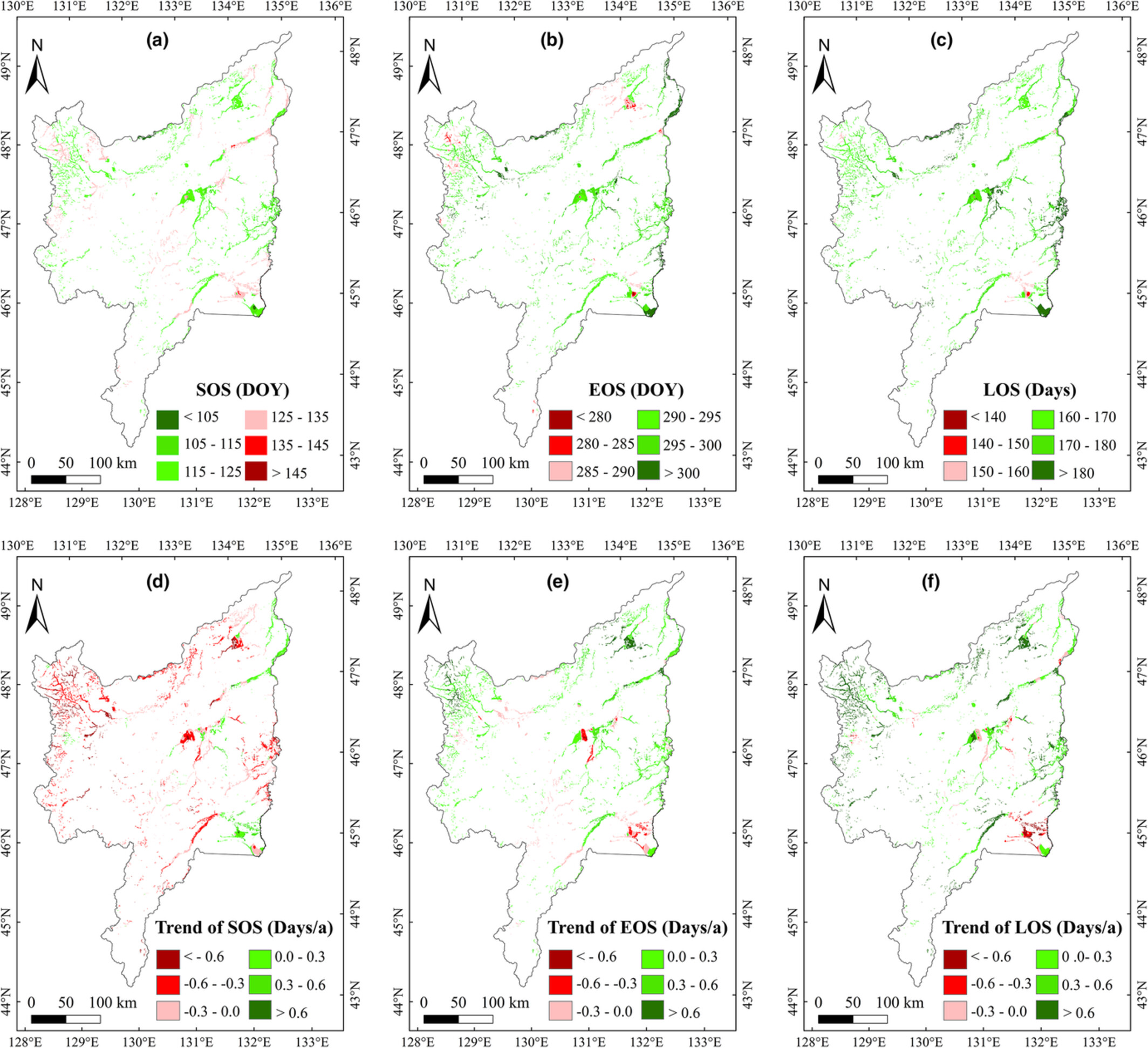
Under the influence of global climatic change, identifying the changes in phenology and their responses to climatic variation in the marsh of Sanjiang Plain is essential for assessing the carbon stocks of marsh ecosystems in that region. Using climate and NDVI data, this paper analyzed the spatiotemporal variations in the start (SOS), end (EOS), and length (LOS) of the vegetation growing season, and explored the responses of vegetation phenology to climatic variation in marshes of the Sanjiang Plain.
Effects of warming seasonal rotational grazing on plant communities' structure and diversity in desert steppe
- First Published: 19 January 2023
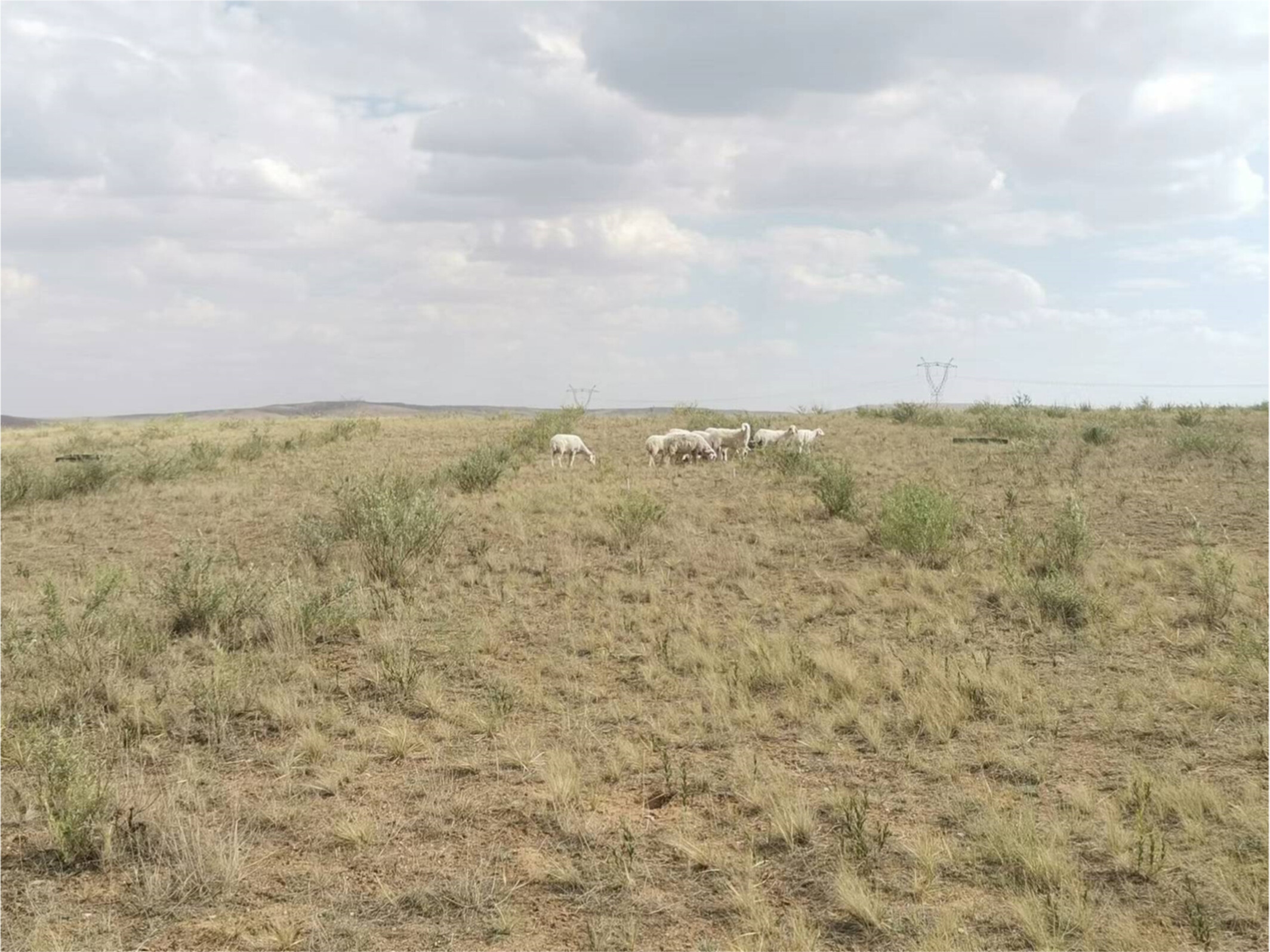
Grazing is the basic way of grassland utilization and an important way to maintain the health and production stability of grassland ecosystem. However, the traditional grazing in winter and spring is negative for the sustainable development and management of ecosystem in desert steppe. Determining reasonable grassland grazing methods is to remain a critical issue for the ecological conservation and rational utilization of desert steppe. Therefore, our objectives were to explore the effects of warming seasonal rotation grazing on the species diversity and functional diversity of grassland plants, and revealing controlling factors of plant communities. The results of the redundancy analysis showed that the diversity of plant communities was mainly affected by soil-available nitrogen. These observations indicated that delayed start grazing can improve vegetation diversity. Our findings can provide a theoretical basis for formulating a reasonable and scientific grazing system in desert steppe.
Trait adaptation enhances species coexistence and reduces bistability in an intraguild predation module
- First Published: 23 January 2023
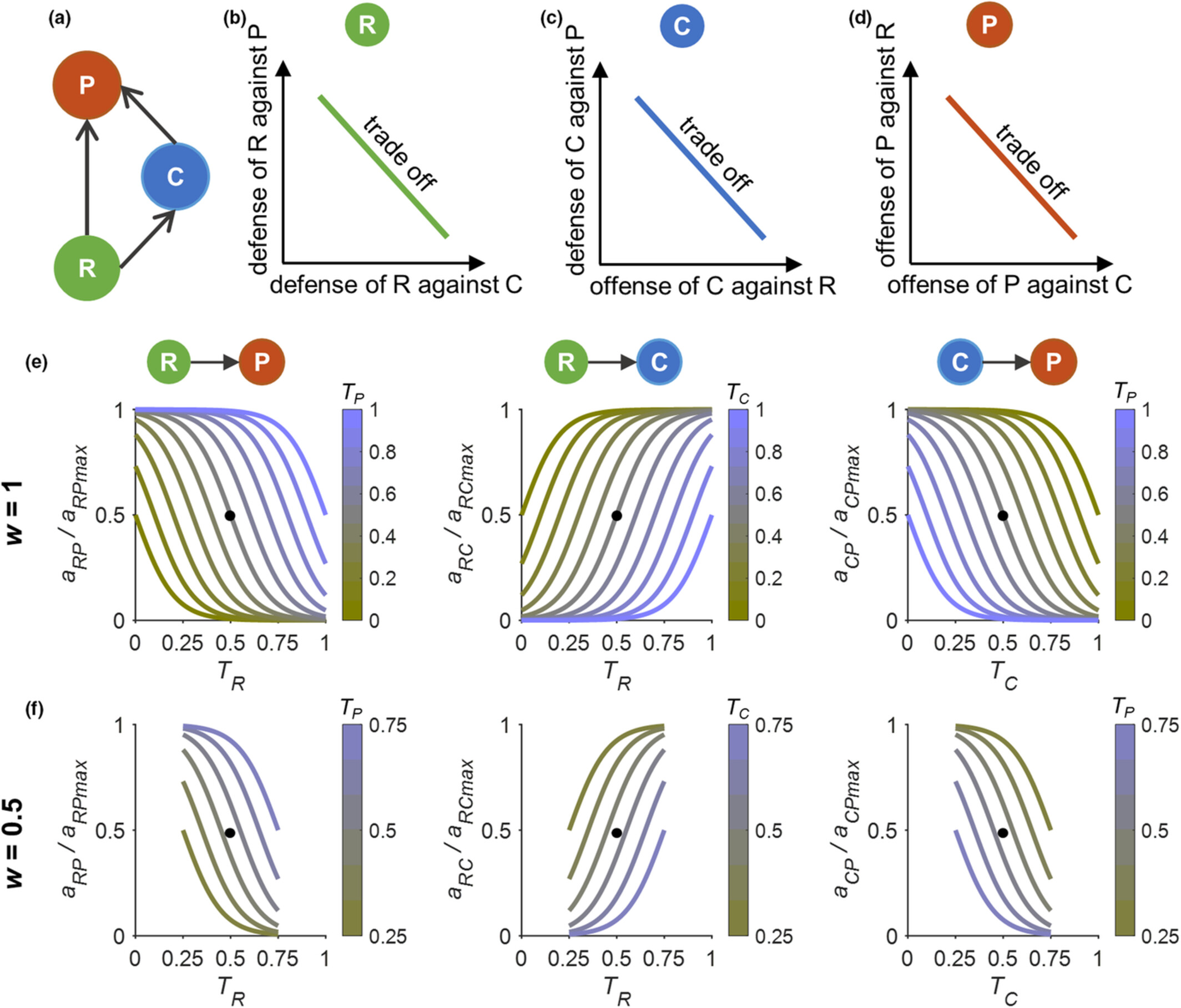
We found that trait adaptation within multiple species greatly enhanced the coexistence of all species in the module. Increasing the speed of trait adaptation buffered the detrimental effects of enrichment on the temporal variability of biomasses of all species. The bistability encountered in the non-adaptive IGP model was strongly reduced when allowing trait adaptation.
Blowin' in the wind: Dispersal of Glossy Ibis Plegadis falcinellus in the West Mediterranean basin
- First Published: 19 January 2023
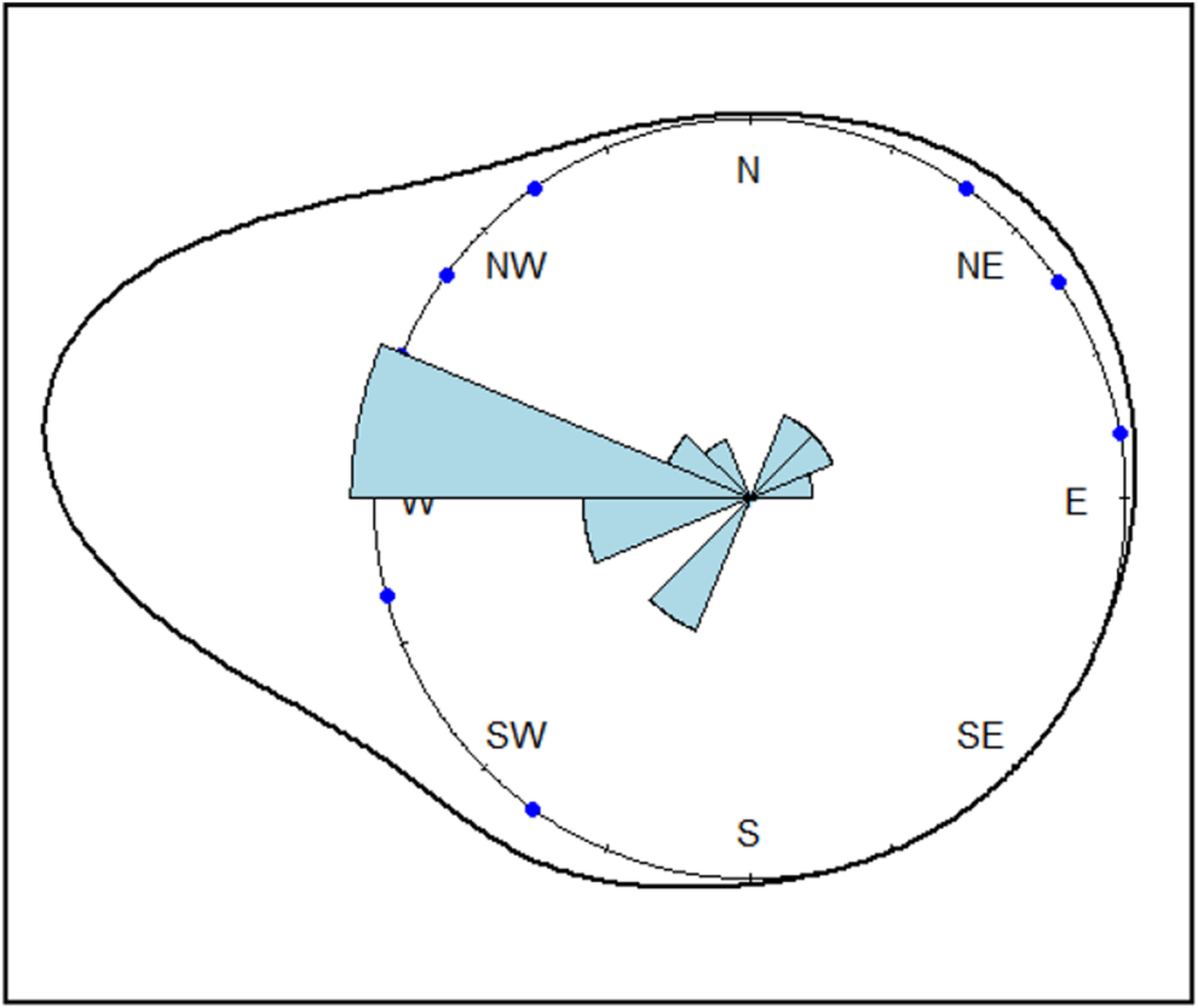
The Glossy Ibis Plegadis falcinellus is known as a trans-Saharan migrant capable of long-distance flights. Circular statistics and finite mixture models of natal dispersal indicated: (1) a strong West/Northwest-East/Southeast flight orientation; (2) Glossy Ibis colonies from North Africa and Southern Europe (particularly on the Iberian Peninsula) are closely linked through exchanges of juvenile and immature birds. The metapopulation dynamics of Glossy Ibis are likely driven by the diversity of wetlands in these two regions and the prevailing winds in the Western Mediterranean.
Pet cat personality linked to owner-reported predation frequency
- First Published: 24 January 2023
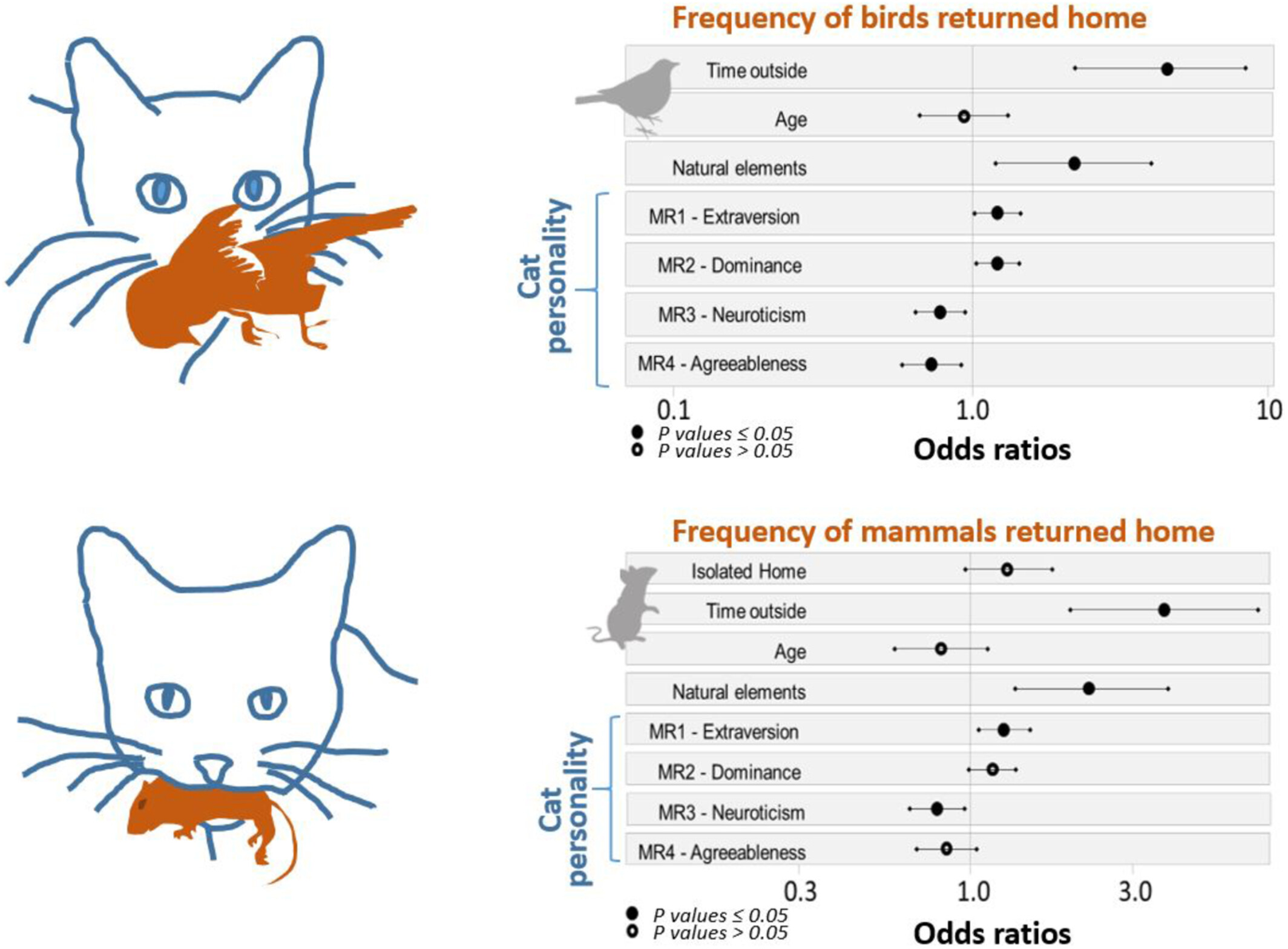
Because domestic cats can reach high population densities and generally retain at least some tendency to hunt, their overall impact on wildlife can be severe, leading to increasing international interest and concern. Domestic cats have highly variable predation rates, depending in part on individual cat characteristics, but the reasons for this high level of variation are poorly understood. In our study, we used surveys of more than 2500 cat owners living in France to show that personality differences contribute strongly to the large variability in predation rates among domestic cats.
Phylogenetic assessment of endangered and look-alike Pigtoe species in a freshwater mussel diversity hotspot
- First Published: 24 January 2023
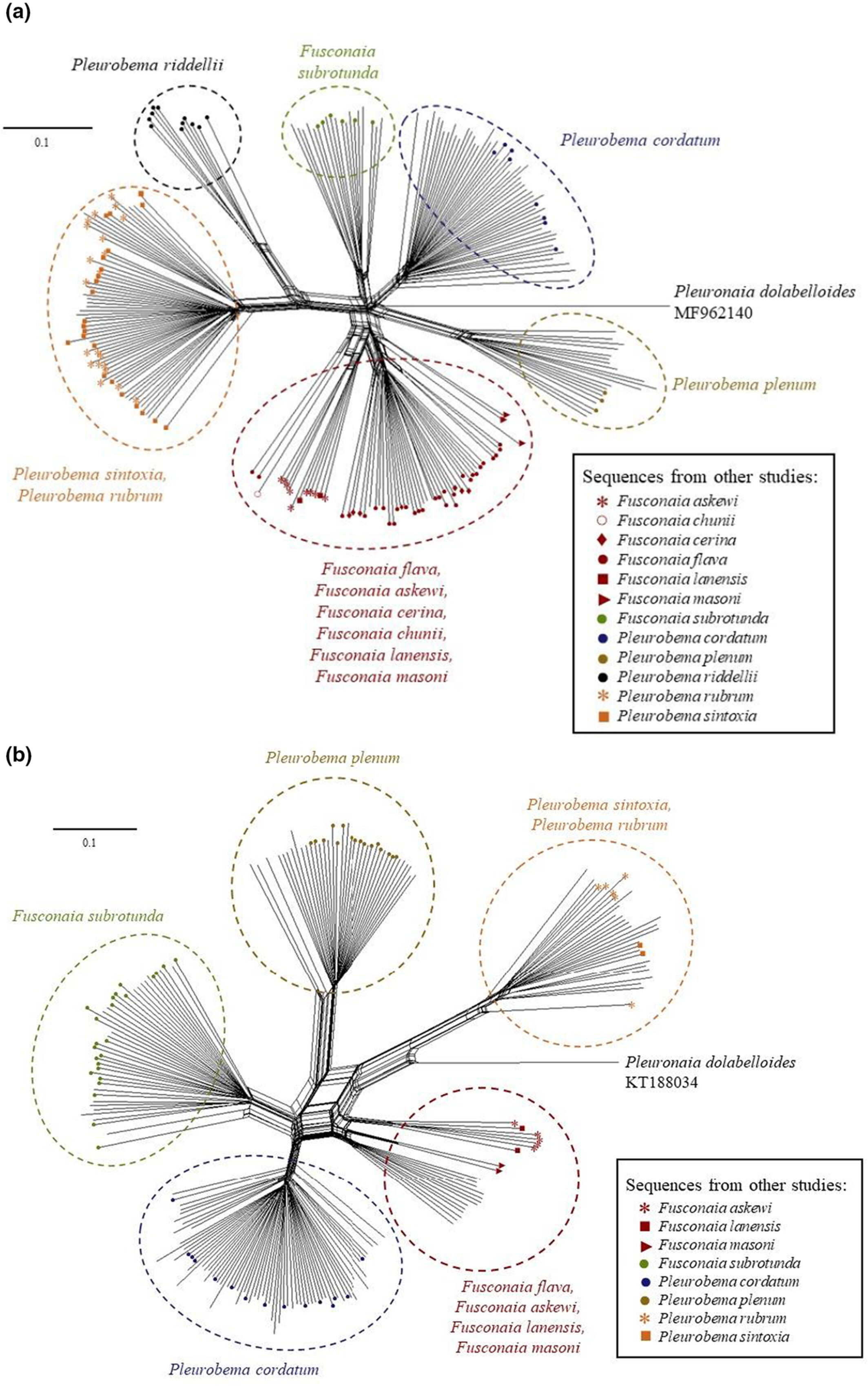
We delineated taxonomic boundaries among seven species and tested for cryptic biodiversity among these look-alike mussels utilizing mitochondrial and nuclear DNA sequence variation. Phylogenetic analysis of combined (1215 bp) mitochondrial DNA cytochrome oxidase I (COI) and NADH dehydrogenase 1 (ND1) genes showed five well-diverged groups that included F. flava, F. subrotunda, P. cordatum, and P. plenum as distinct clades, with P. sintoxia and P. rubrum grouped into a single clade. While our mitochondrial DNA analyses did not distinguish P. sintoxia and P. rubrum as phylogenetically distinct species, the typical shell forms of these two nominal taxa are very distinct.
Limited population genetic variation but pronounced seascape genetic structuring in populations of the Mediterranean mussel (Mytilus galloprovincialis) from the eastern Adriatic Sea
- First Published: 24 January 2023
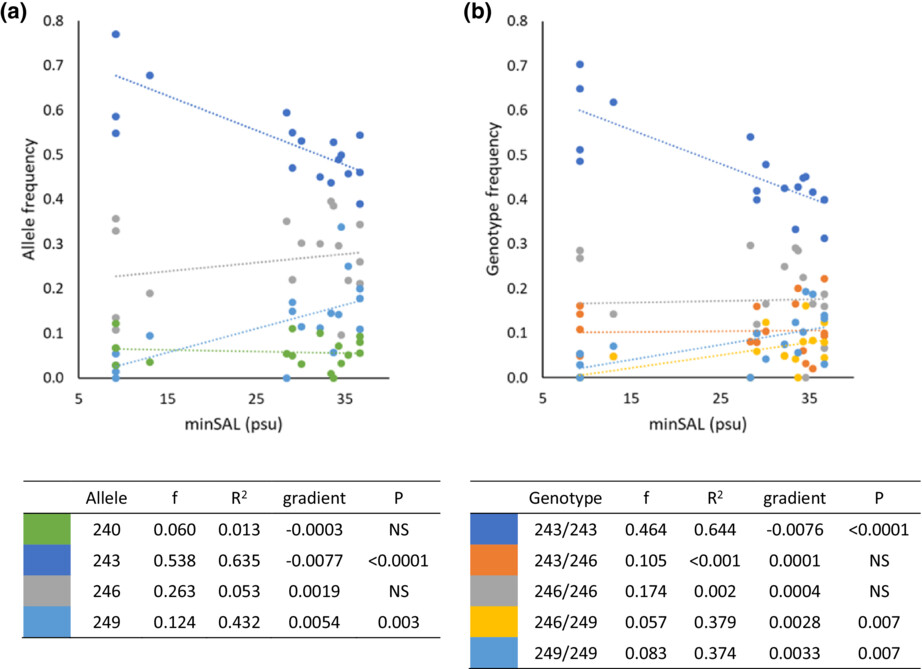
We investigated the genetic variation of the economically and ecologically important species the Mediterranean mussel (Mytilus galloprovincialis) from 18 sites along the eastern Adriatic Sea, using six microsatellite loci. Population genetic analysis of variation at five neutral microsatellite loci revealed little or no spatial variation. In contrast, seascape genetic analysis revealed a pronounced association between allelic and genotypic frequencies at a sixth locus, MGE7, and the environmental variable minimum salinity, highlighting the role that environmental variation may play in retarding gene flow among wild M. galloprovincialis populations.
Positive impact of postfire environment on bumble bees not explained by habitat variables in a remote forested ecosystem
- First Published: 24 January 2023
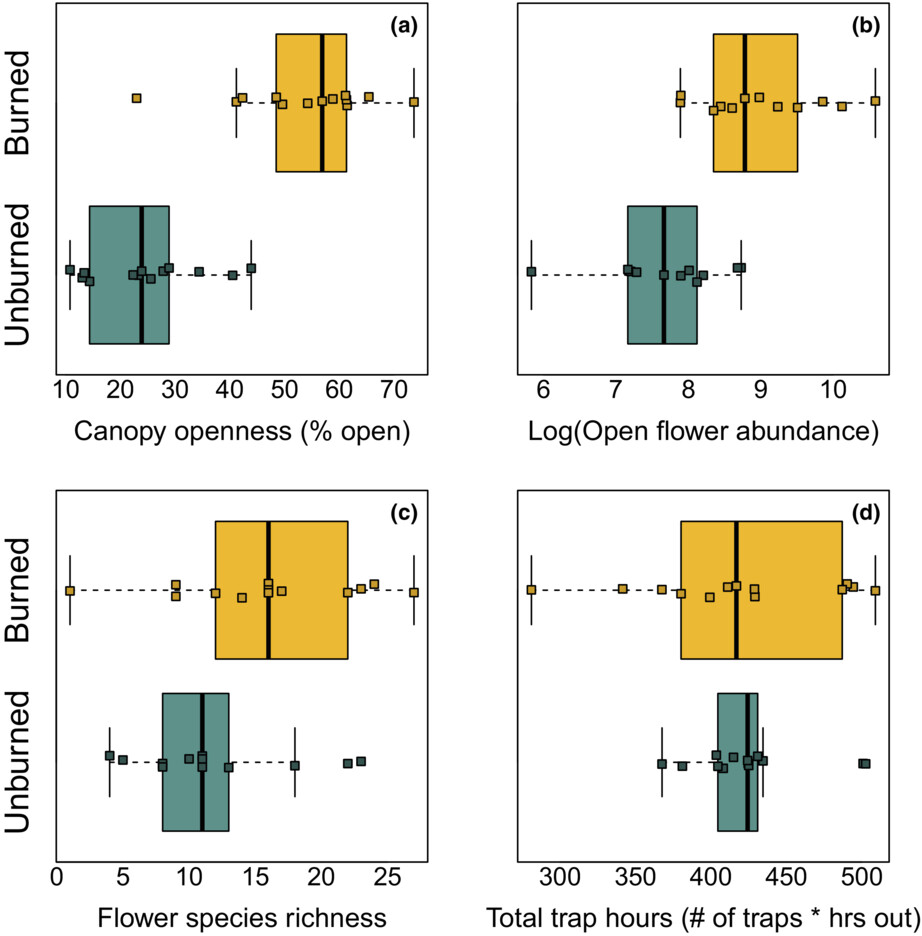
We found that burn status significantly predicted bumblebee site occupancy in dense coniferous forests, while the variables describing the generally assumed mechanisms behind this relationship, namely canopy cover, floral species richness, and floral abundance, did not. As such, the exact mechanism by which wildfires increase bumblebee occupancy remains unidentified. However, canopy openness and floral species richness did significantly affect detection probability (roughly, sample bias), indicating that studies that do not account for these variables may produce biased estimates of both site occupancy and its relationship with habitat covariates.
Non-native hosts of an invasive seaweed holobiont have more stable microbial communities compared to native hosts in response to thermal stress
- First Published: 24 January 2023
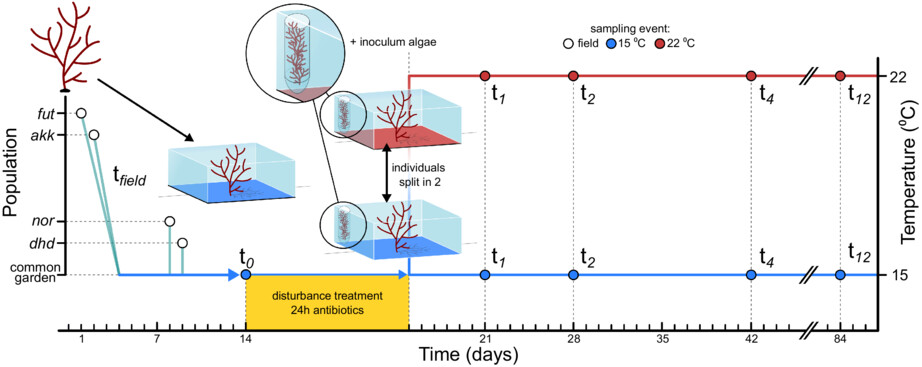
Seaweeds interact intimately with their associated microbial communities. Their capacity to manipulate microbiota may be important to their fitness in general. In the course of an invasion process, where an invader is faced with severe disturbance and novel conditions, there may be selective pressures for traits with which the host influences the associated microbiota. In this study, we simulated an invasion in a common garden and show that epibiota associated with an invasive seaweed are thermally more stable in populations with an invasion history compared with populations from the native range.
Using pictographs as traits to explore morphological diversity in sharks
- First Published: 24 January 2023
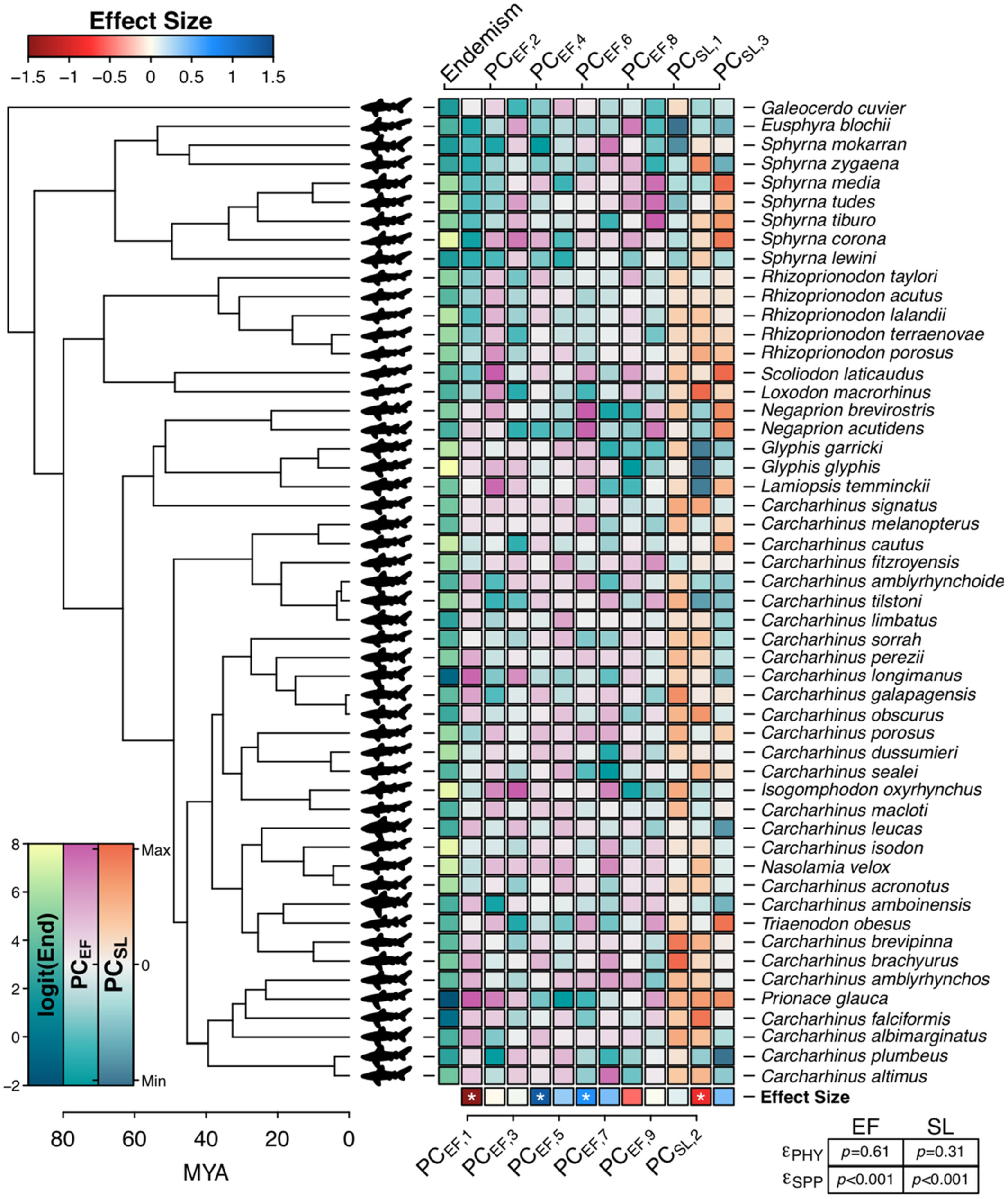
Scientific illustrations are useful traits that should be included in trait-based studies. We show there similarity to specimen-based measurements and find little systematic variability across illustrators. We highlight their utility in enhancing two common trait-based analyses: ancestral trait reconstruction and phylogenetic generalized linear mixed models.
Role of plant relatedness in plant–soil feedback dynamics of sympatric Asclepias species
- First Published: 24 January 2023
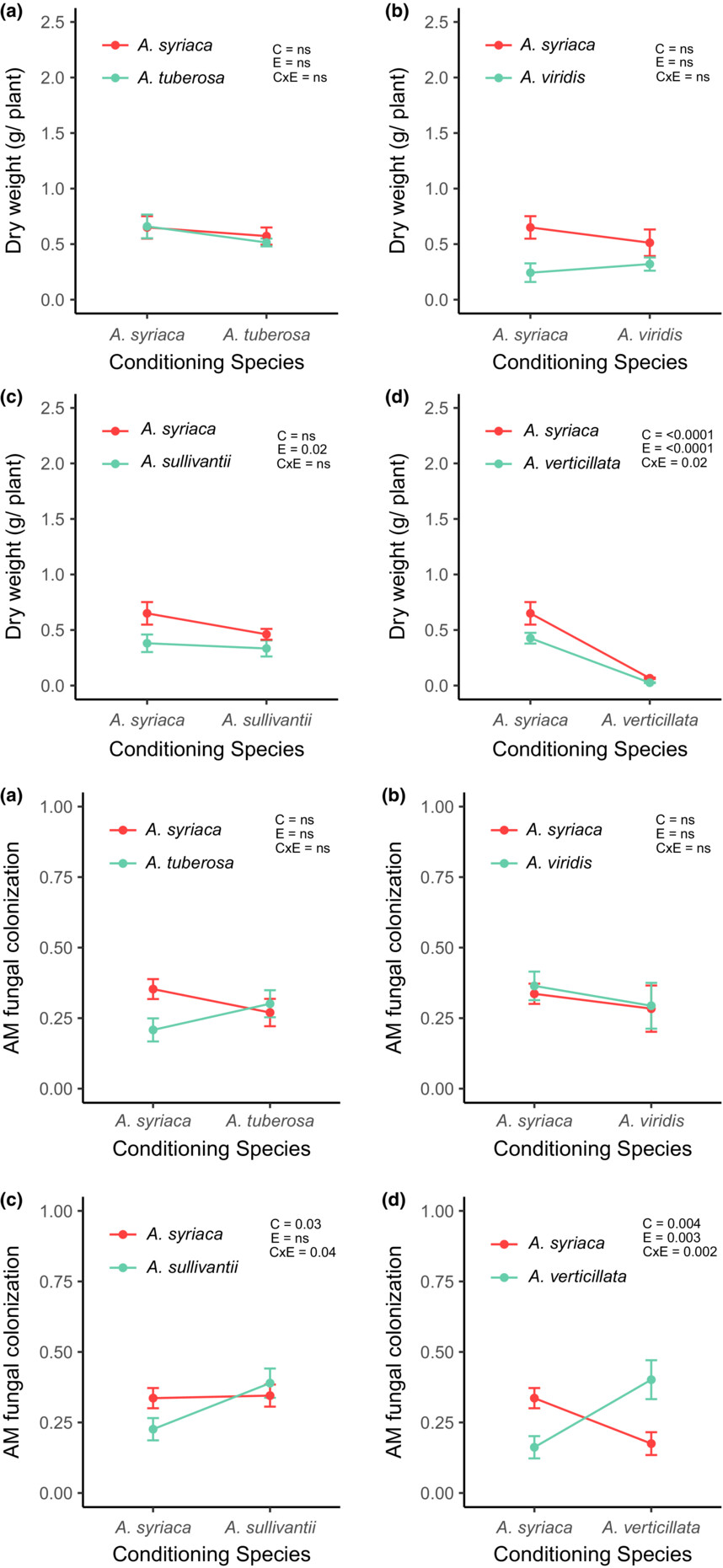
The role of phylogenetic relatedness and evolutionary histories have recently emerged as a potential driver of plant-soil feedbacks (PSFs), although the strength and direction of feedbacks among sympatric congeners is not well understood. Congeneric, sympatric milkweeds typically generated positive PSFs in terms of productivity and AM fungal colonization, suggesting low likelihood of coexistence among tested pairs, with strength of feedback increasing as phylogenetic distance increases.
Demography and space-use of Eastern Red-backed Salamanders (Plethodon cinereus) between mature and successional forests
- First Published: 24 January 2023
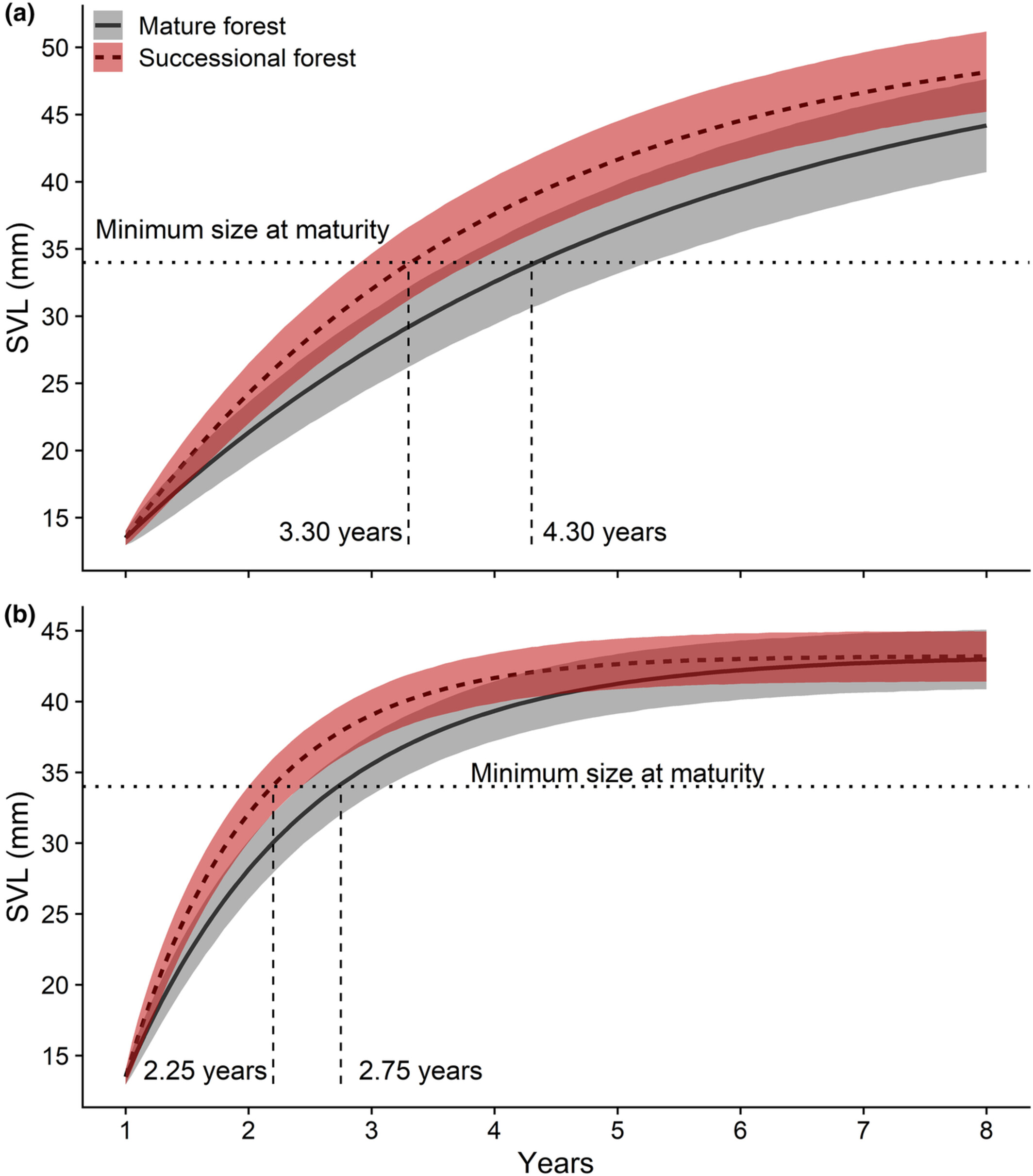
Time to maturity is a critical life history trait. In this study, we find that salamanders occupying mature and successional forest habitats separated by <100 m differed in their time to maturity by over a year. The delayed time to maturity of individuals in the mature forest results in a 43% reduction in lifetime fecundity for salamanders inhabiting the mature forest.
Color polymorphism in the Cuban endemic livebearing fish Limia vittata (Teloestei, Poeciliidae): Potential roles of sexual and natural selection
- First Published: 24 January 2023
A comparison of population viability measures
- First Published: 24 January 2023
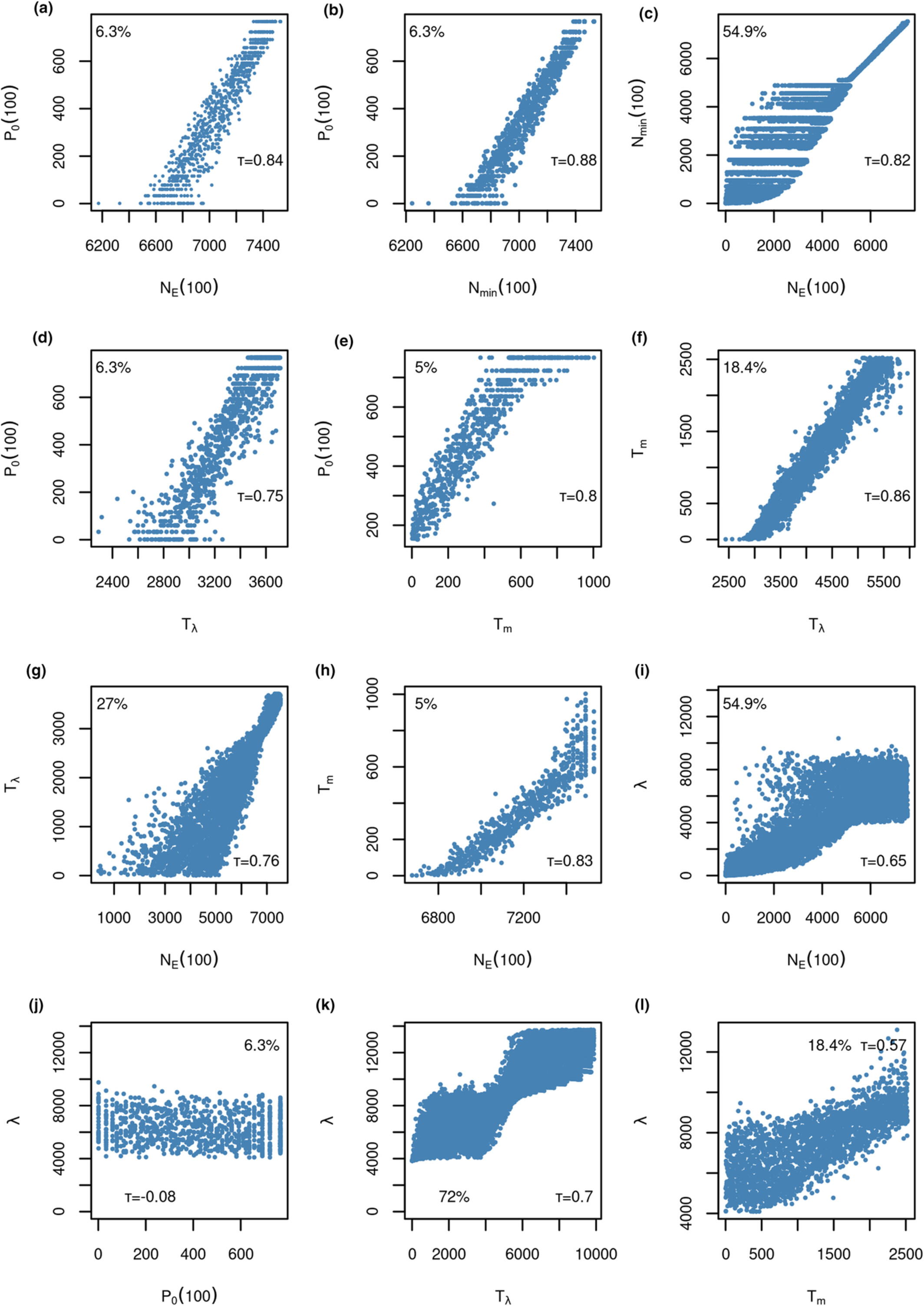
Population viability was ranked similarly in a quantitative comparison of eight measures of population viability derived from simulated population dynamics of more than 4500 virtual species. However, direct correlations between measures were weak and could not be generalized. We thus recommend that population-viability analyses publish raw simulation data to support robust comparisons of population viabilities.
Whole-genome resequencing reveals recent divergence of geographic populations of the dung beetle Phelotrupes auratus with color variation
- First Published: 24 January 2023
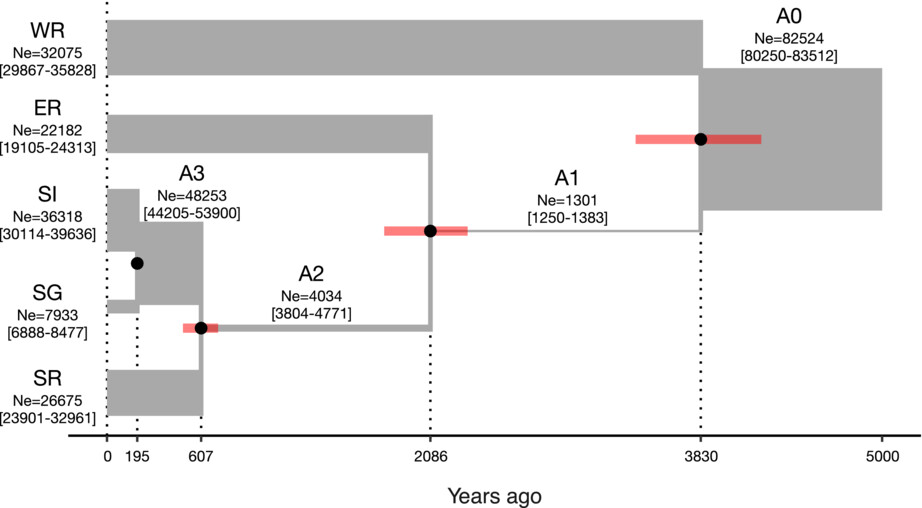
Phelotrupes auratus , the geotrupid dung beetle with three color forms diverged into five geographic population groups based on the combined interpretation of genetic cluster and color-form data. We estimated the demographic histories of these population groups using the newly assembled draft genome sequence of P. auratus and whole-genome resequencing data obtained from the groups.
Implications for conservation assessment from flux in the botanical record over 20 years in southwest Ghana
- First Published: 24 January 2023
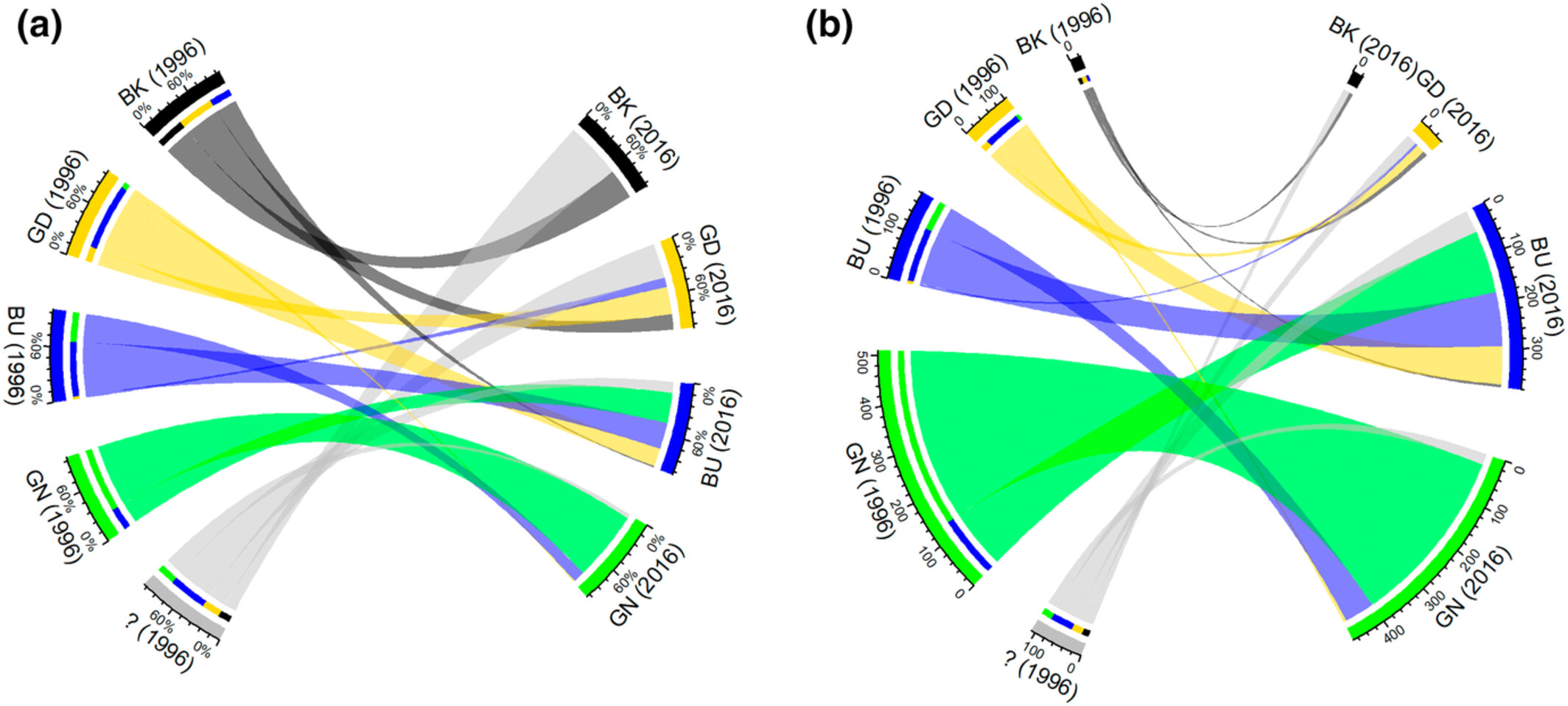
At best, conservation decisions can only be made using the data available at the time. We explore the extent to which changes to the plant biological record over 20 years have changed our conception of the conservation importance of 931 plant taxa, and 114 vegetation samples, recorded in forest reserves of the south west Ghana biodiversity hotspot. 36% of species-level assessments changed as a result of new distribution data, and 12% of currently accepted species have been added to the checklist since 1996. In spite of considerable flux at the species record level, range size rarity scores for vegetation samples have stayed remarkably constant over 20 years. This consistency in results at the area level allows for worthwhile conservation priority setting over time.
Limited predatory effects on infaunal macrobenthos community patterns in intertidal soft-bottom of Arctic coasts
- First Published: 24 January 2023
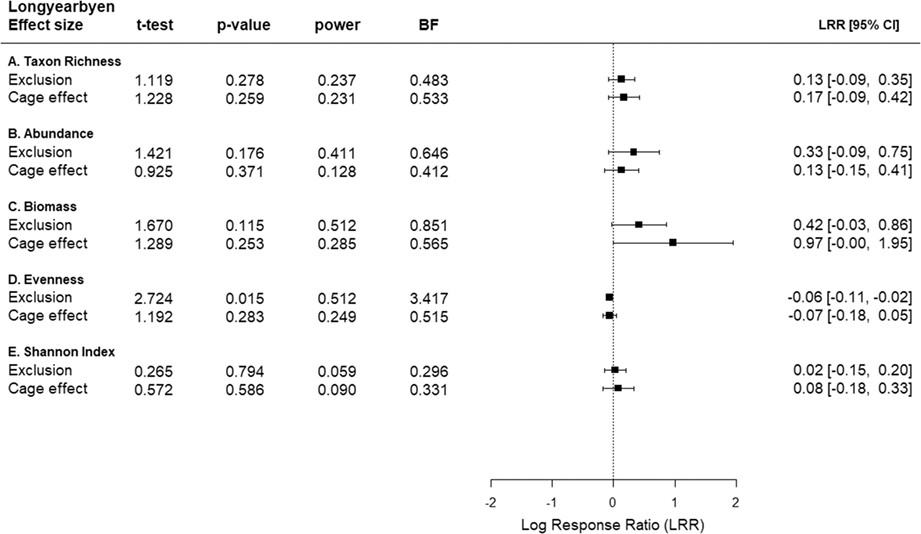
Predation is a key modifier of community dynamics, but information on its magnitude on community regulation in the systematically understudied Arctic coastal habitats. To test the magnitude and direction of the effects of predation on the structure of Arctic benthic communities, we conducted caging experiments in which consumers were excluded from plots at two sites in Svalbard, Arctic. This study suggests that consumers have limited effects on the structure and functioning of the intertidal benthic Arctic communities.
Not out of the Mediterranean: Atlantic populations of the gorgonian Paramuricea clavata are a separate sister species under further lineage diversification
- First Published: 29 January 2023
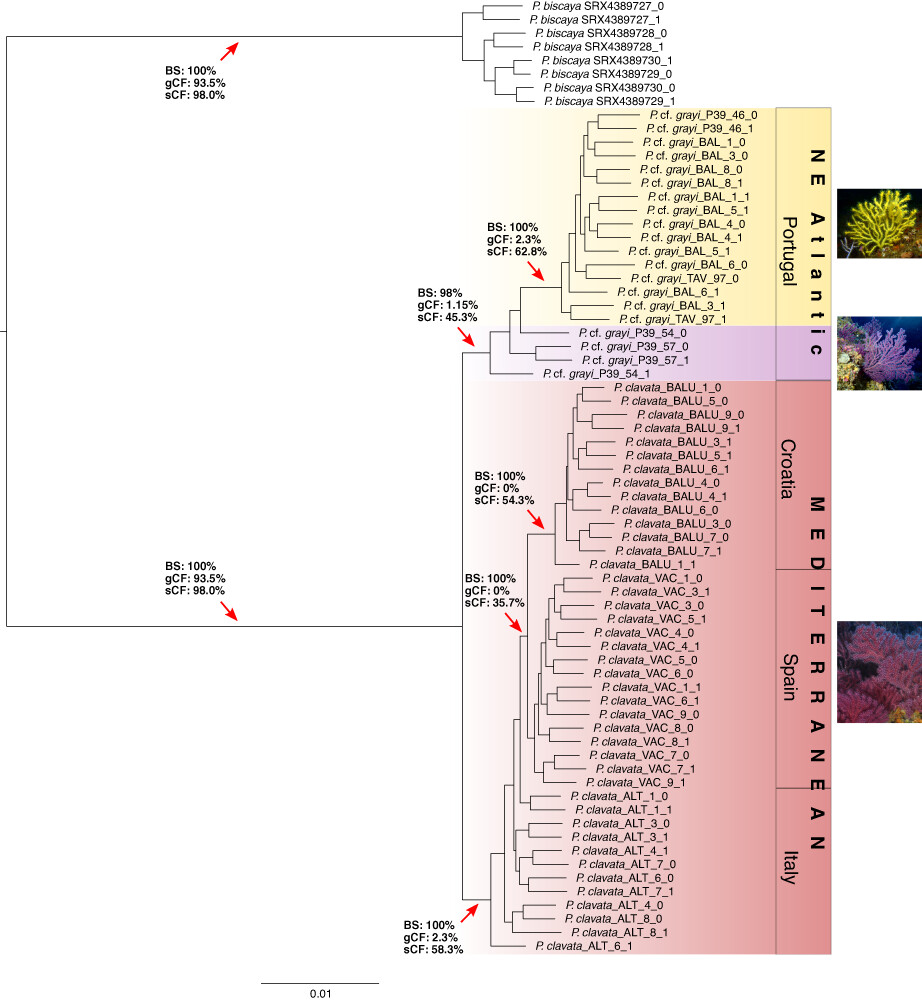
Demarcating the transition between intraspecies lineages and speciation requires accurate delimitation of species boundaries, which in many marine invertebrates such as corals is notoriously difficult, leading to misinterpretations of their ecology and evolution. This study investigates species boundaries, taxonomic affinity, and lineage diversification for key structural species of branching octocorals in the genus Paramuricea across the Atlantic-Mediterranean biogeographic regions. We combine species tree methods (using RNA-seq data) with population genetics (clustering methods using microsatellites) and phylogenetics (mitochondrial barcode) to show that the Atlantic and Mediterranean clades studied are recently diverged sister species on separate evolutionary trajectories (Paramuricea cf. grayi and P. clavata), also revealing a second putative (or ongoing) speciation event within Atlantic P. cf. grayi.
Environmental DNA (eDNA) reveals potential for interoceanic fish invasions across the Panama Canal
- First Published: 29 January 2023
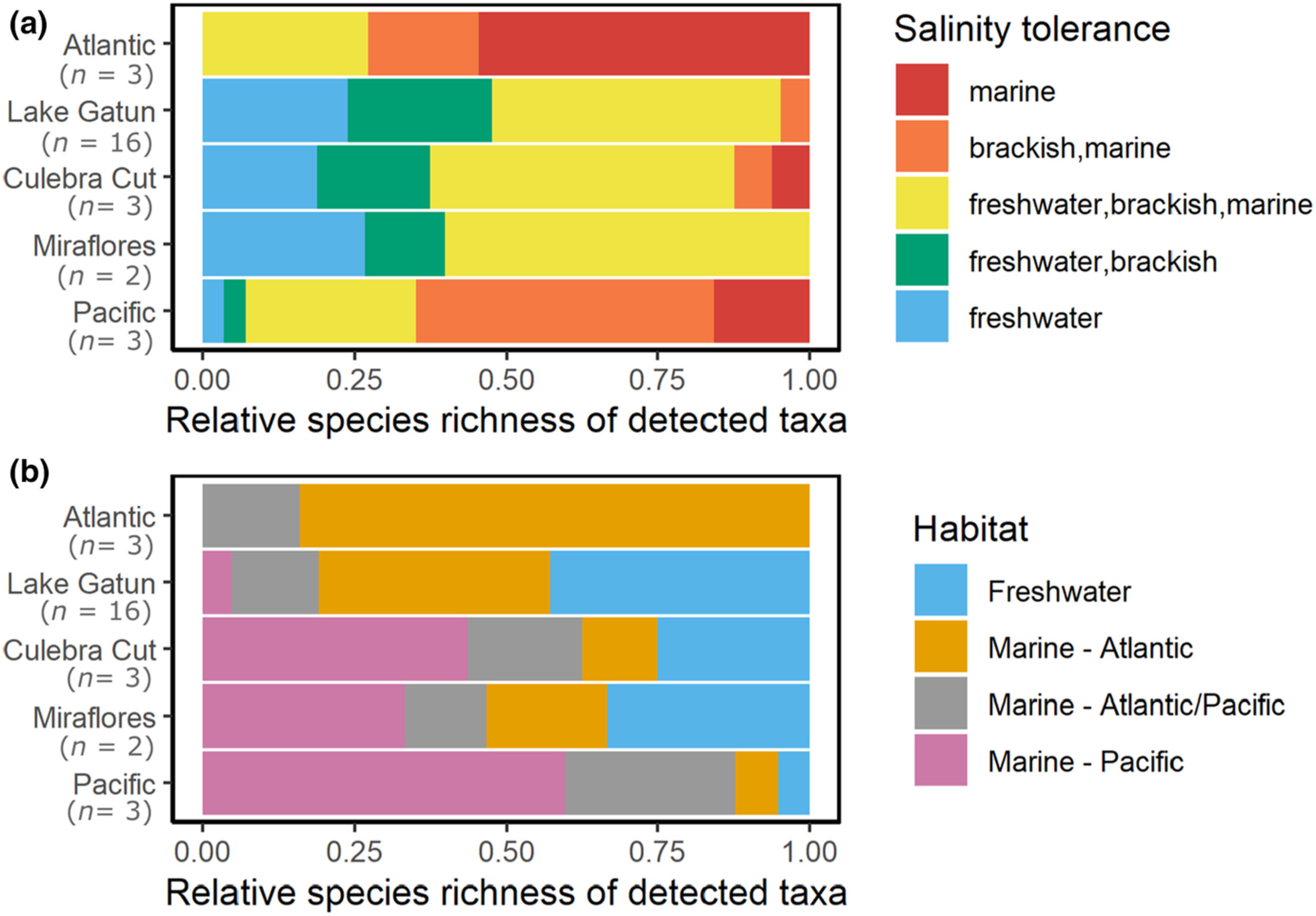
The Panama Canal is a key region for biotic exchange as it connects the Pacific and Atlantic Oceans in Central America. In this study, we used two complementary methods (environmental DNA (eDNA) metabarcoding and gillnetting) to survey fish communities in this unique waterway. The observed increase in the presence of marine fish species in the Canal indicates a growing potential for interoceanic fish invasions across the Isthmus.
Mimicking orchids lure bees from afar with exaggerated ultraviolet signals
- First Published: 29 January 2023
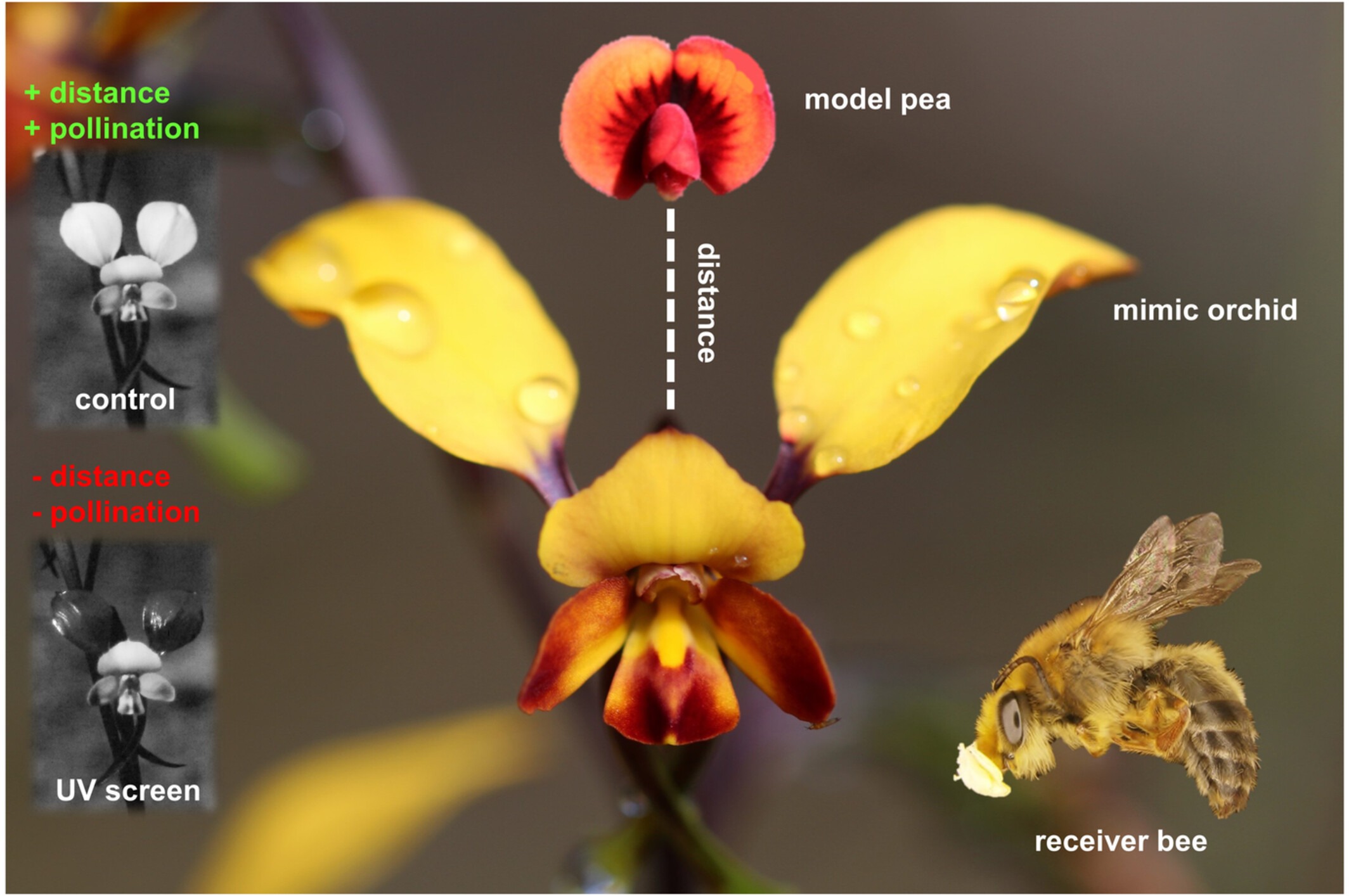
Donkey orchids mimic and exaggerate UV reflectance signals of rewarding model pea plants to attract pollinators. The ruse works exclusively from afar when the orchid is at an optimal distance away from the pea it mimics. Our findings explain the adaptive significance of salient UV display in long-range plant-bee communication and why deceptive plants succeed despite imperfect floral mimicry.
Variability in bat morphology is influenced by temperature and forest cover and their interactions
- First Published: 29 January 2023
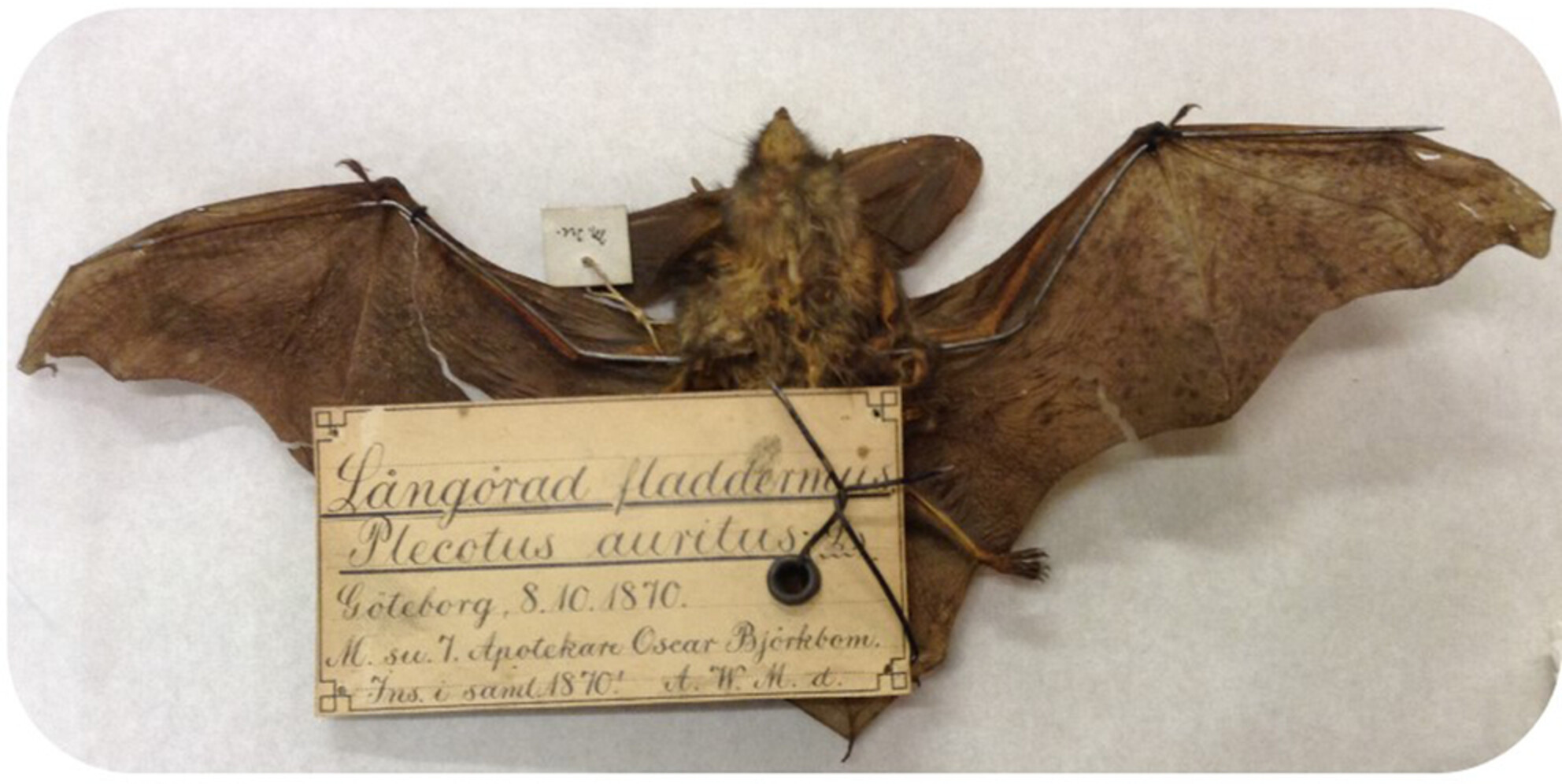
To decouple the effects of global drivers on bat morphology, we used a combination of high spatial and temporal resolution climate and land-use data to assess how bat cranial size and wing functional traits respond to changing temperatures and forest cover over 180 years along a 1200 km latitudinal gradient. We found the effects of temperature and land use on morphology, but more importantly, they interacted antagonistically causing variation in bat morphology in different directions.




